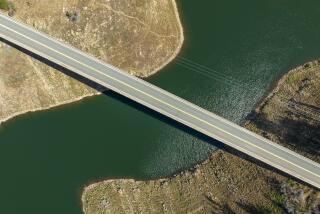Rain only slightly improves drought conditions
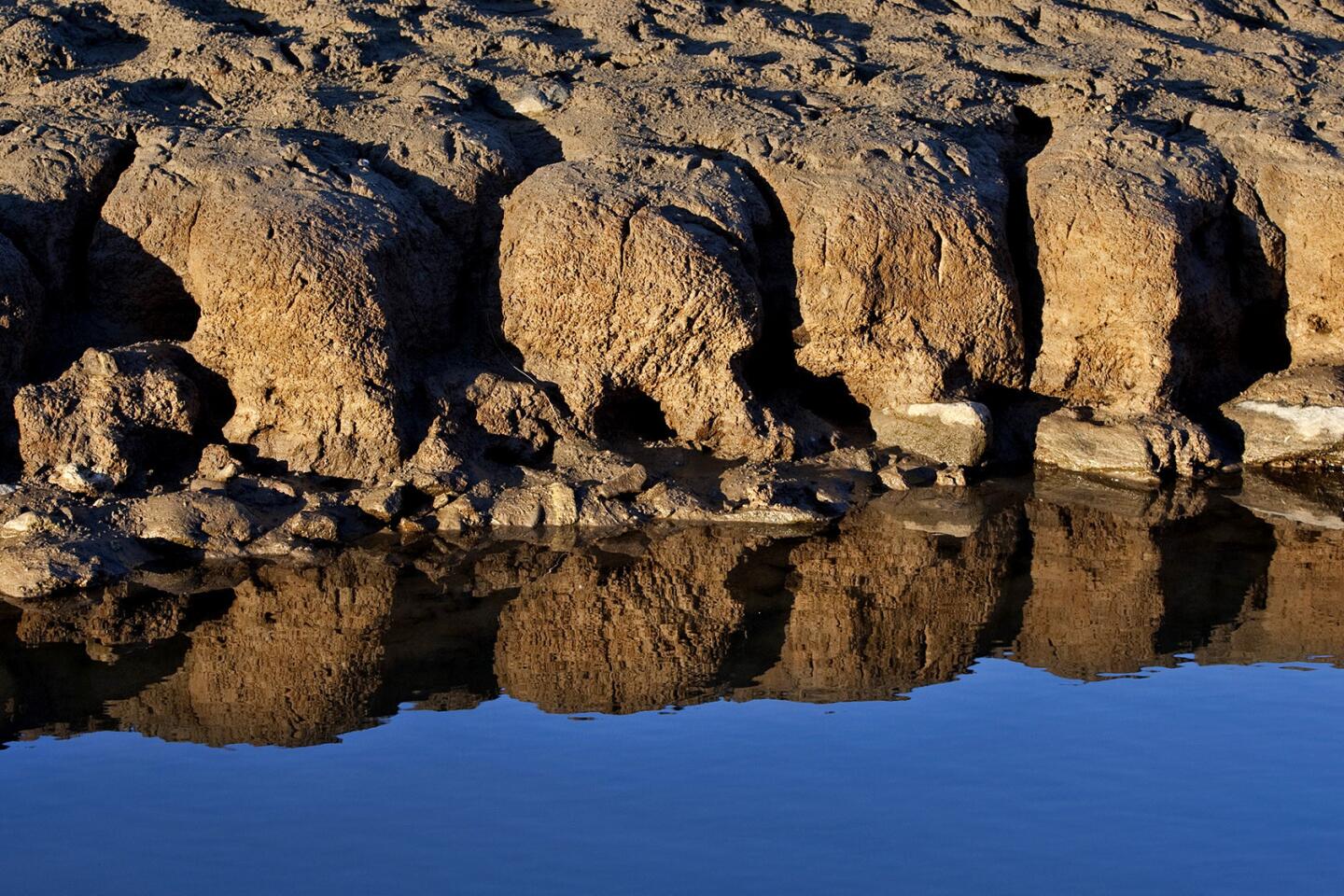
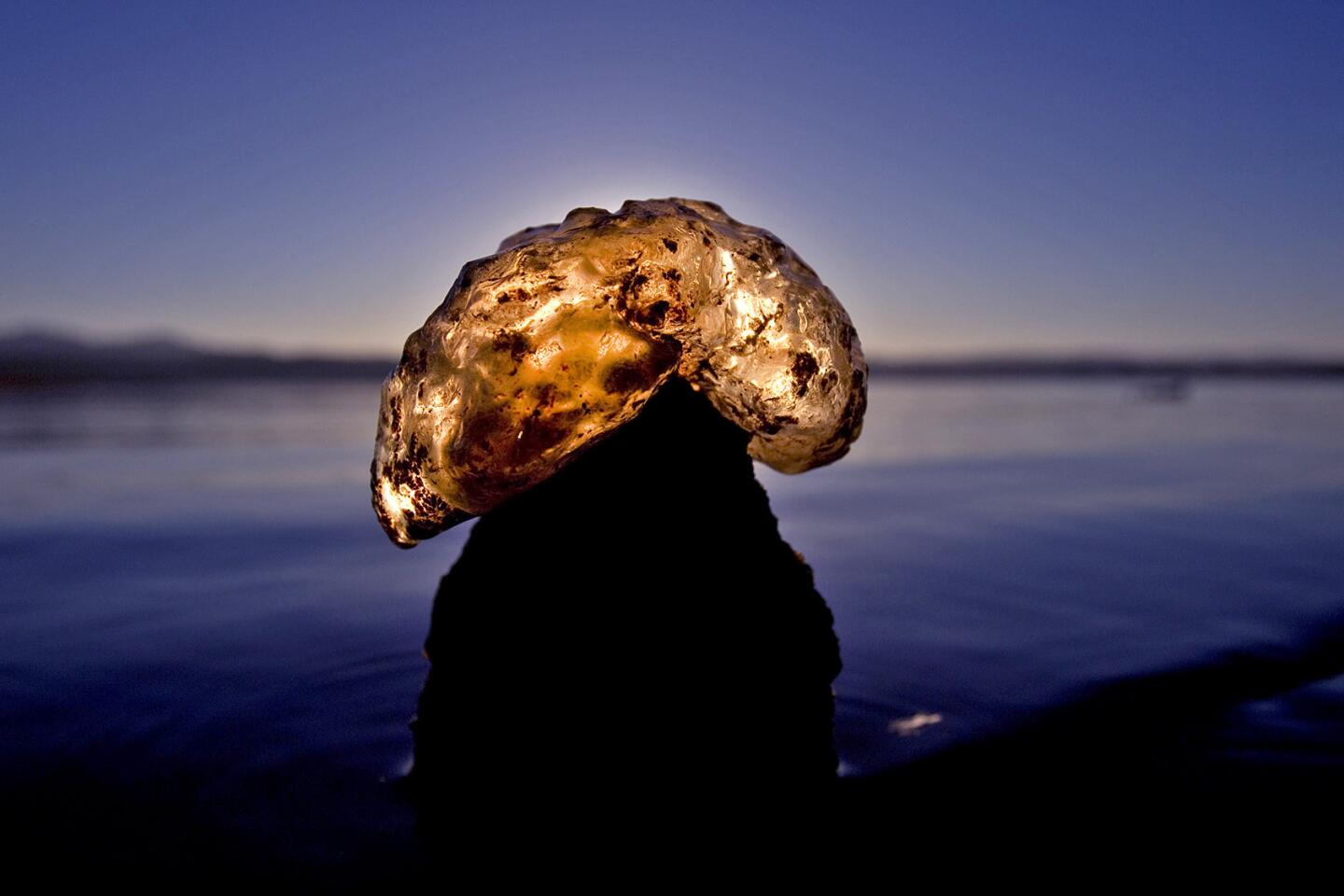
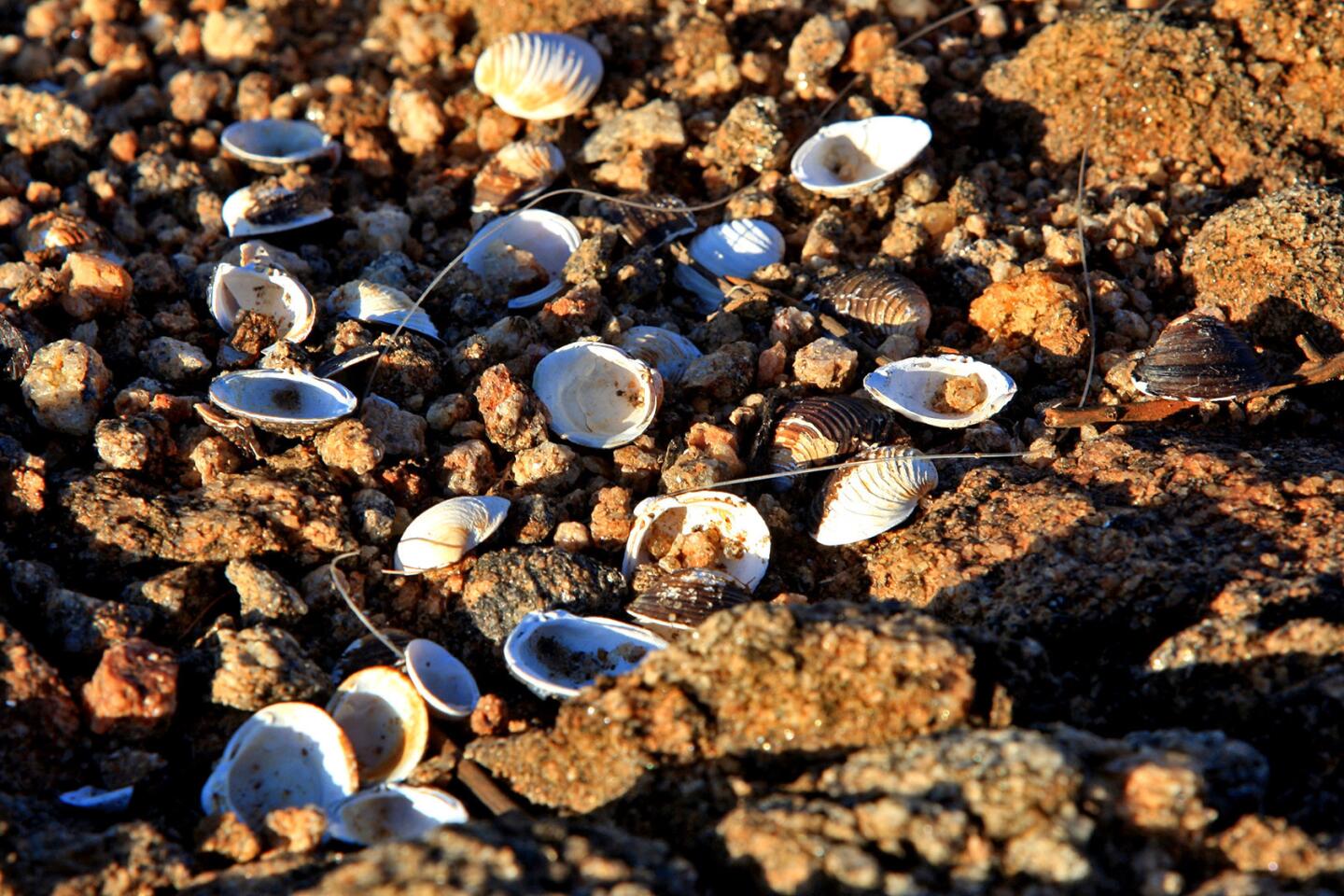
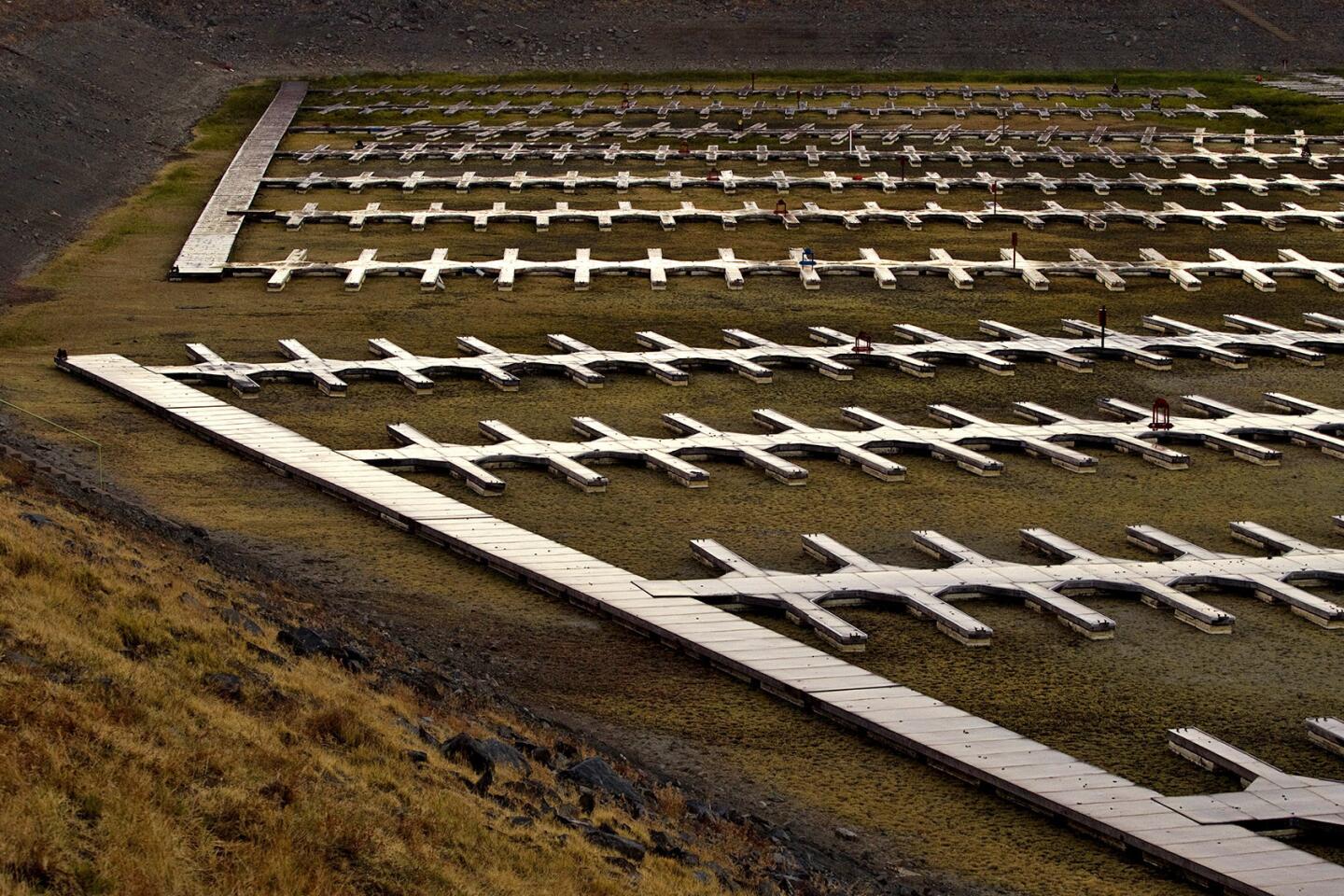
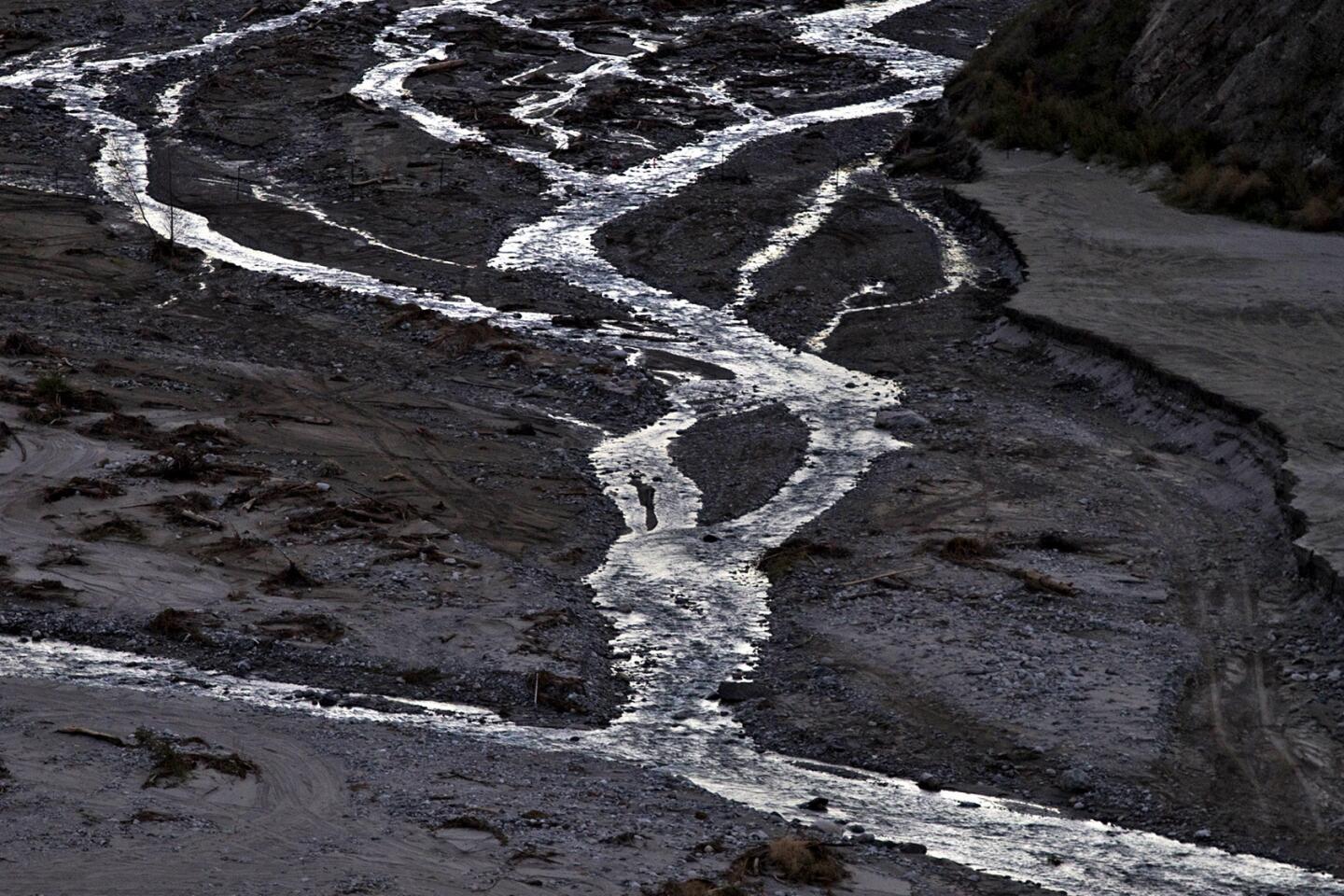
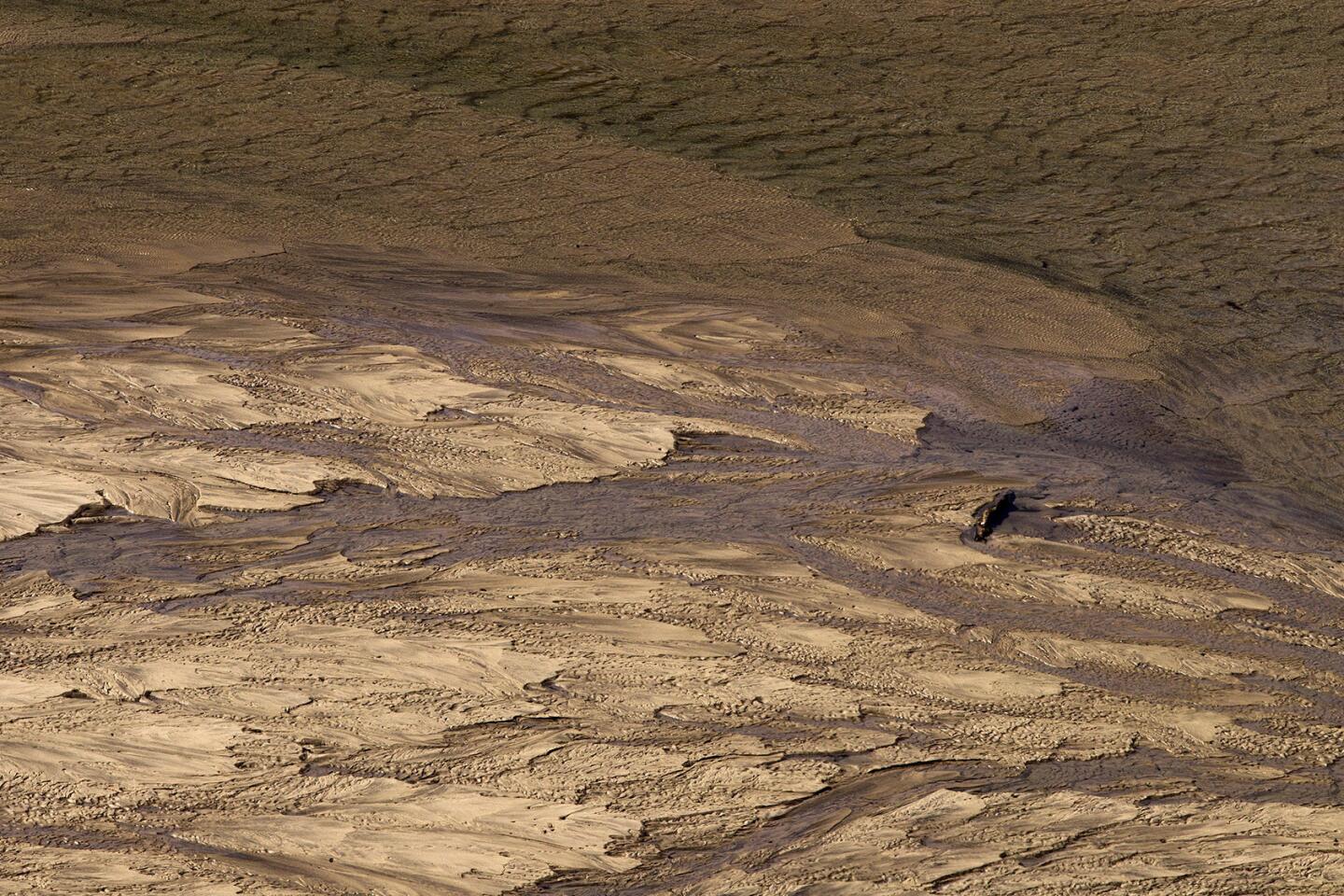
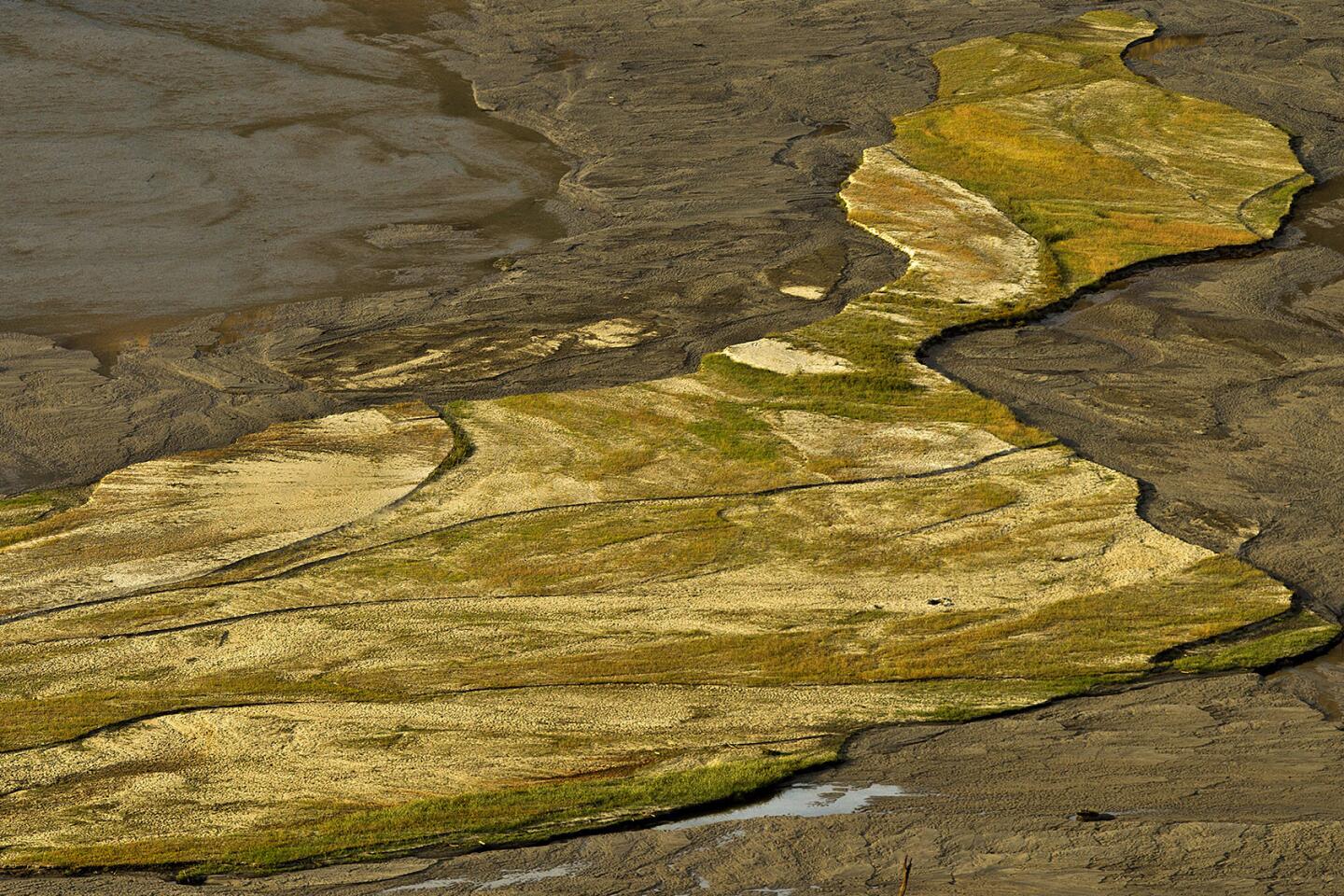
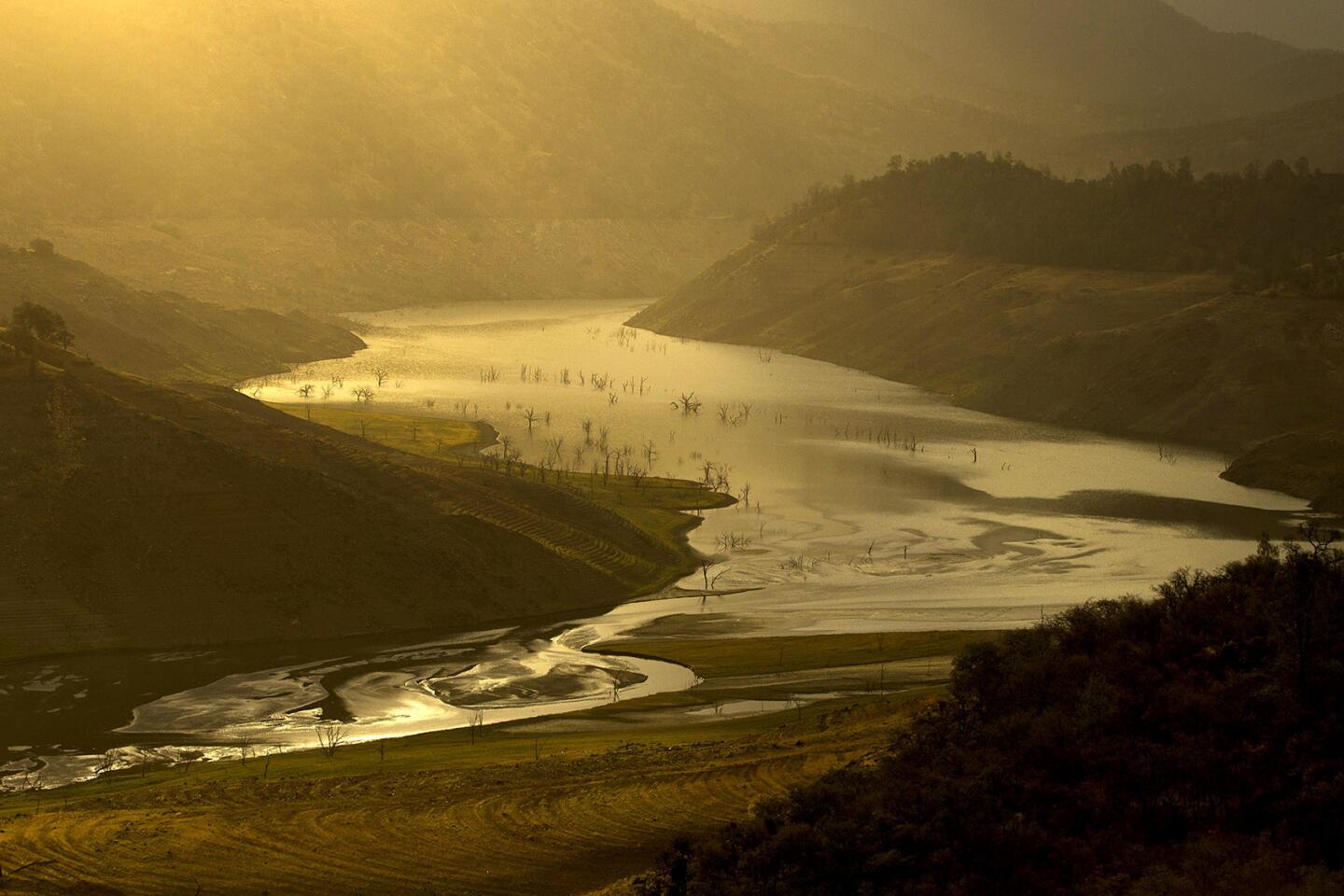
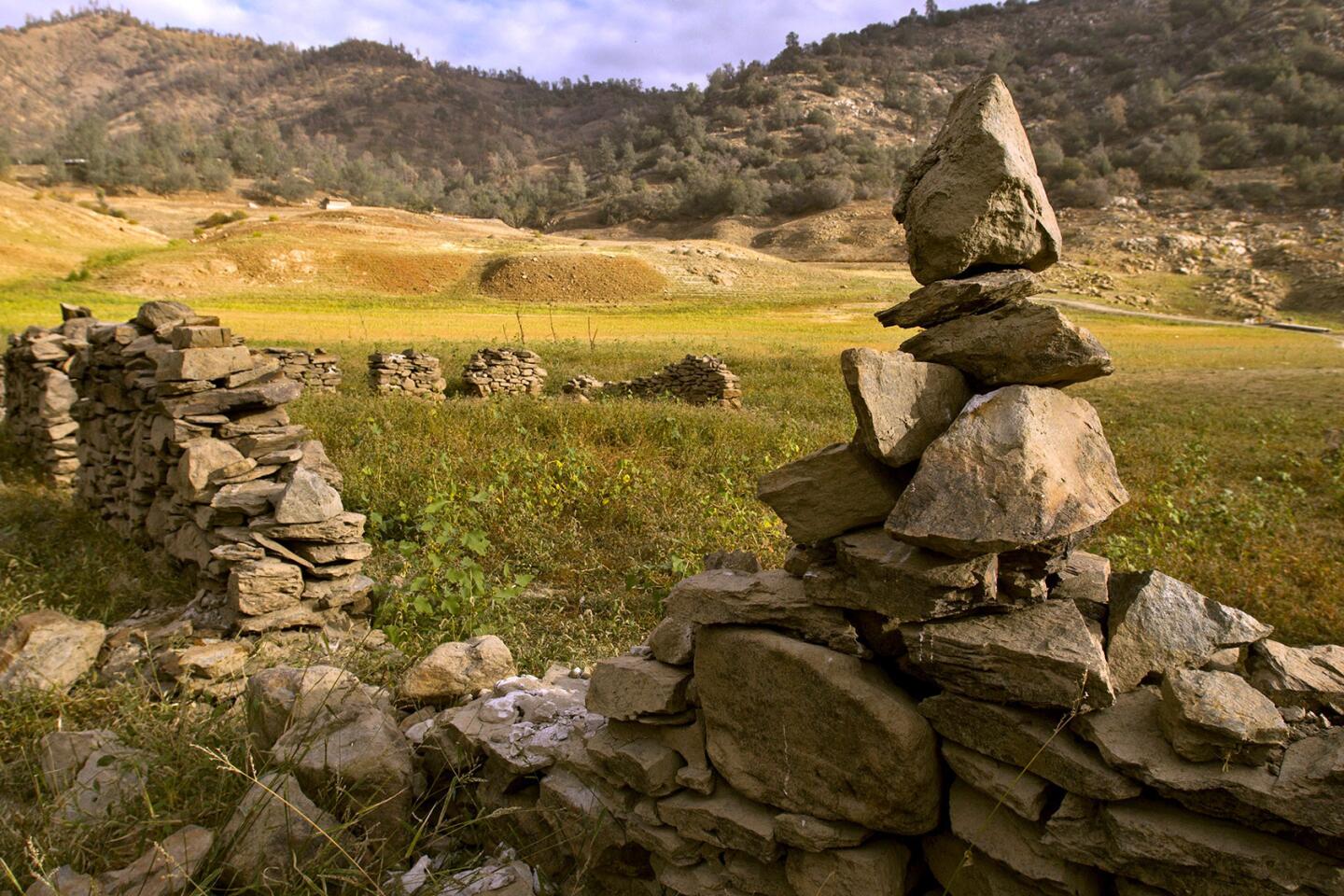
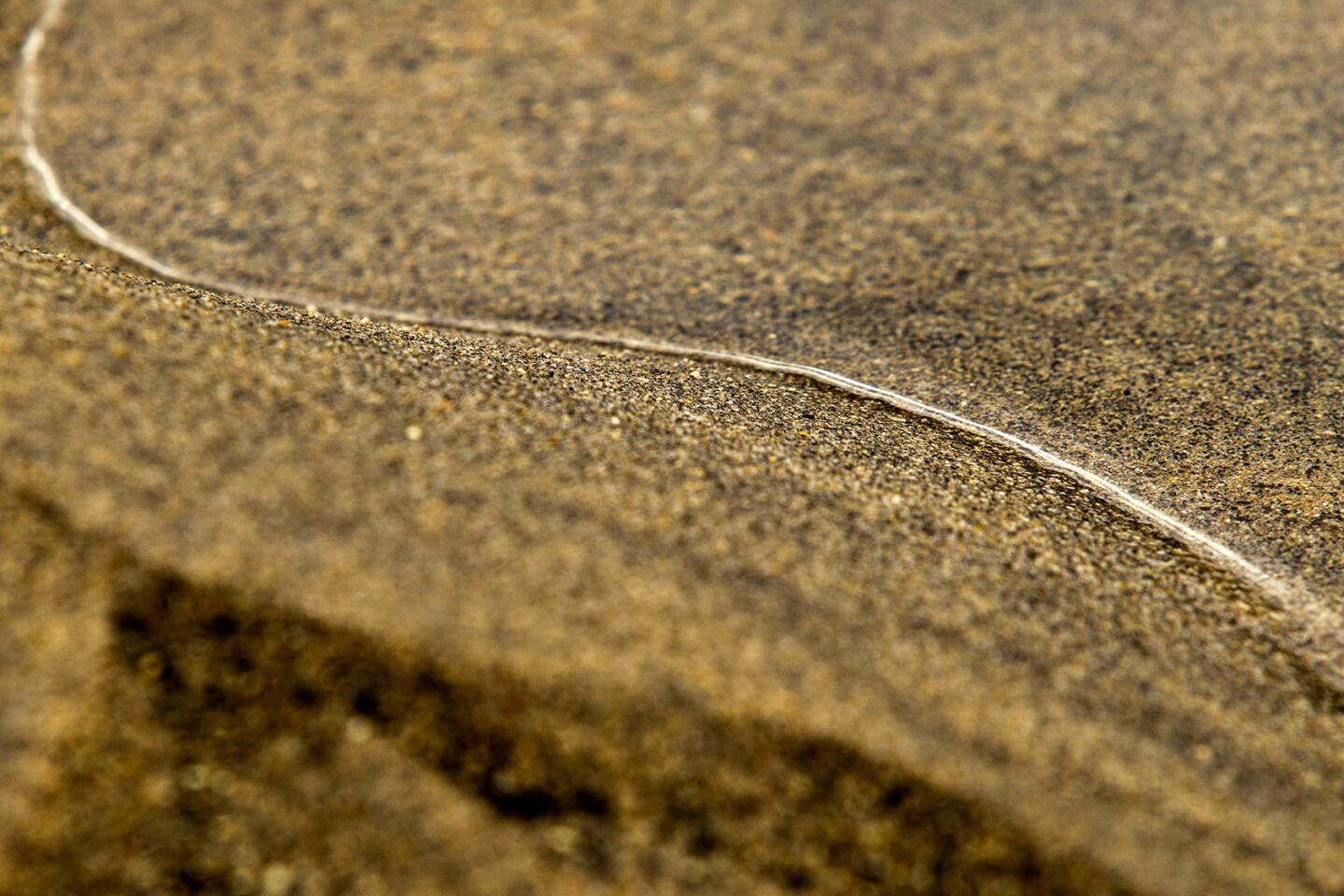
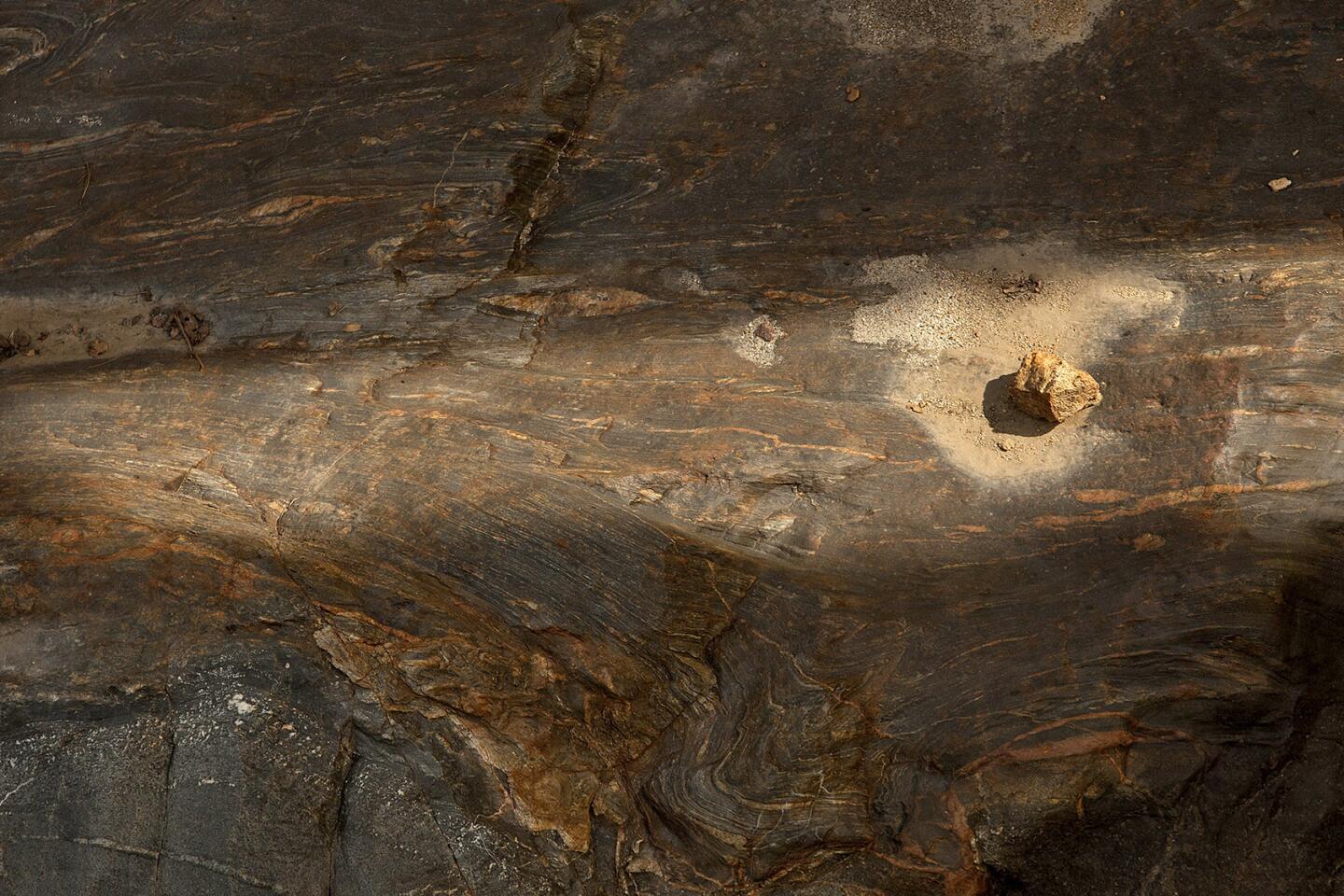
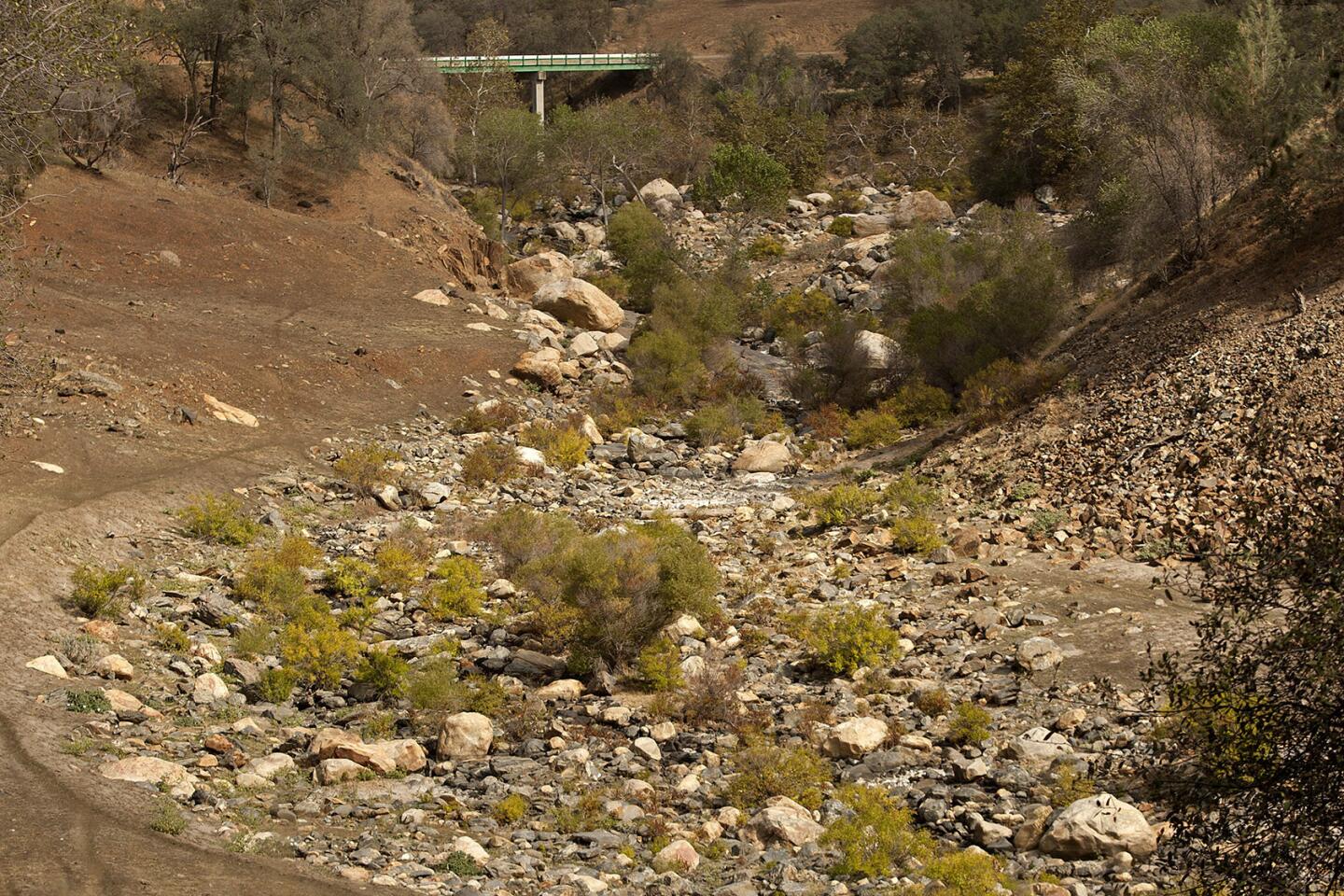
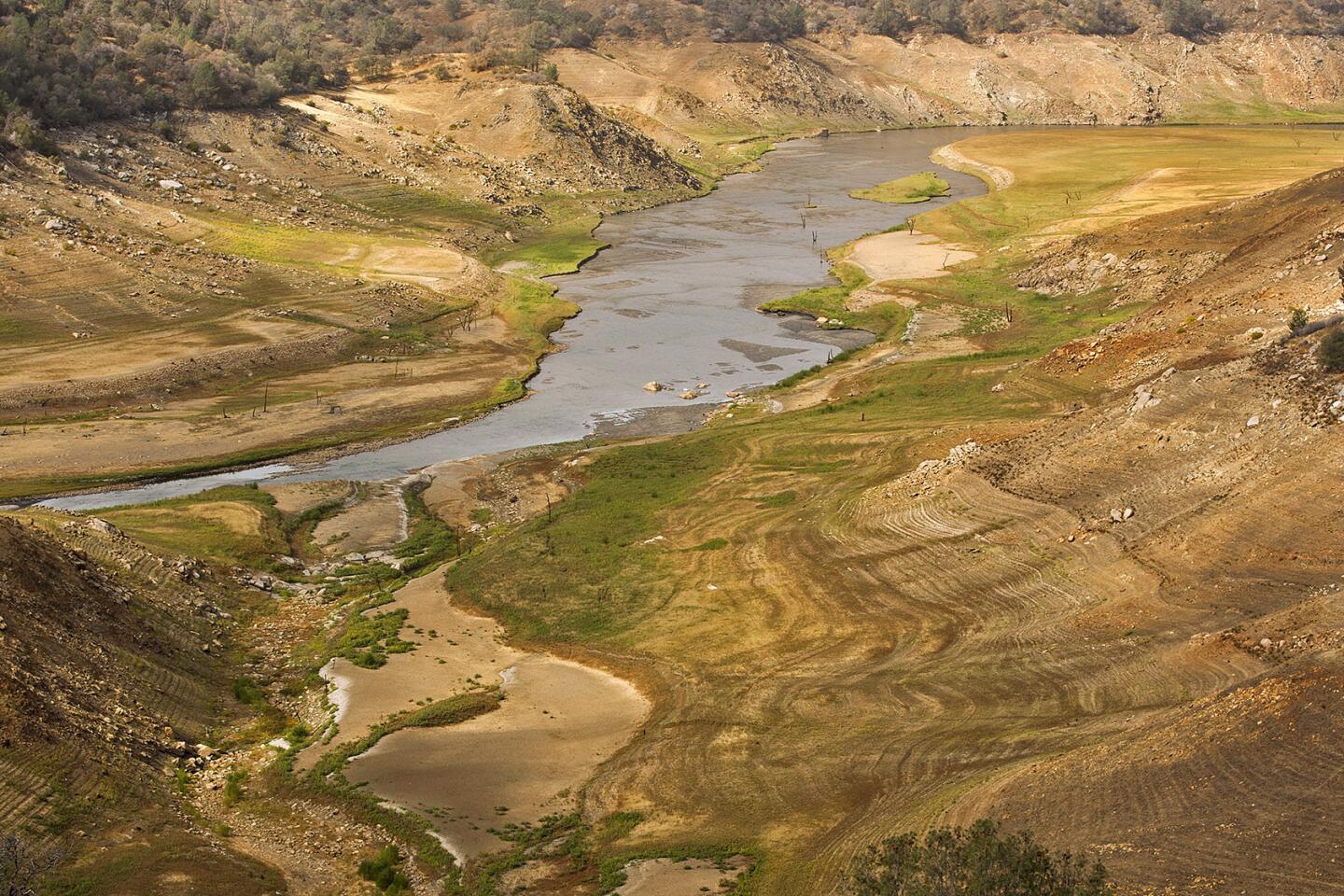
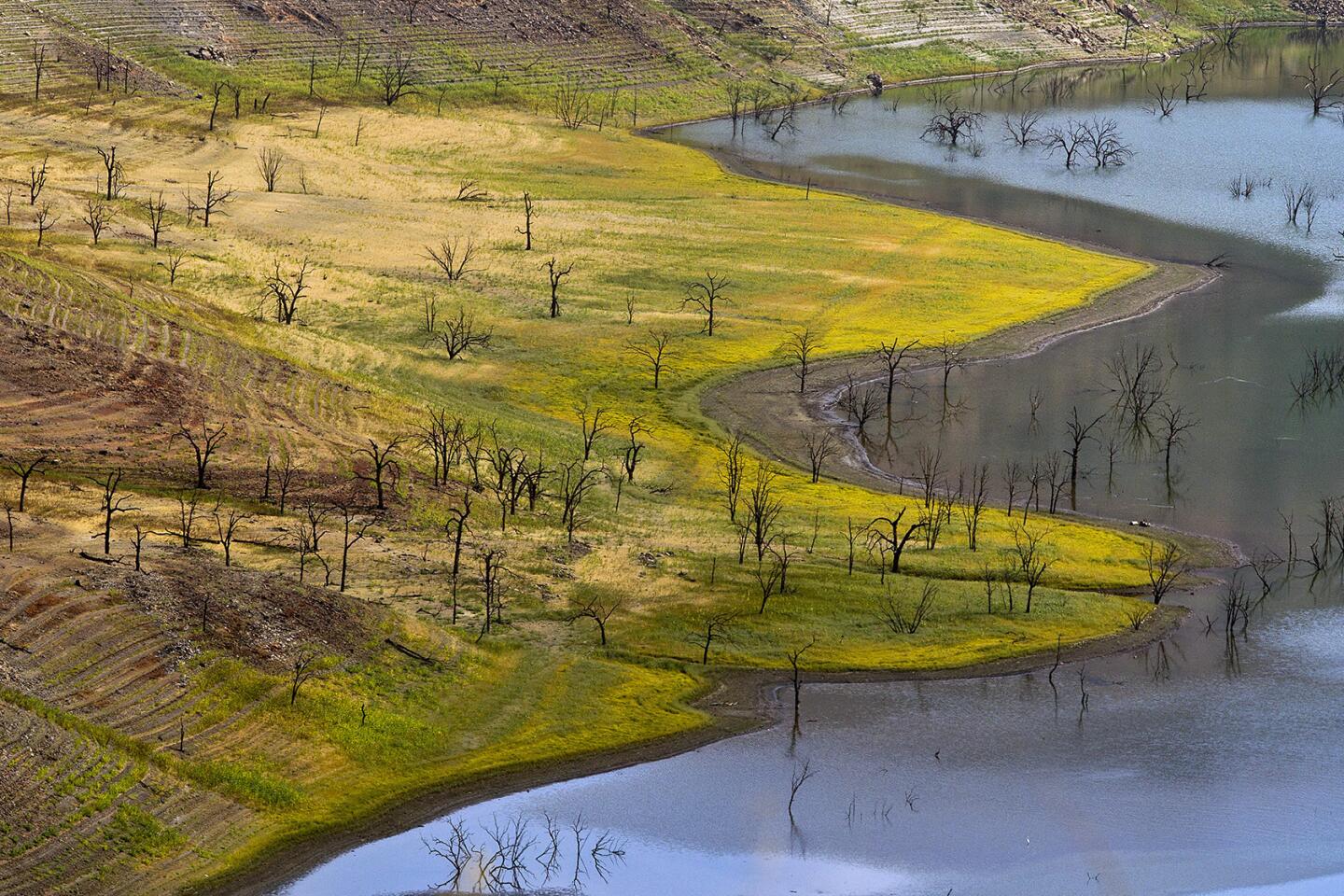
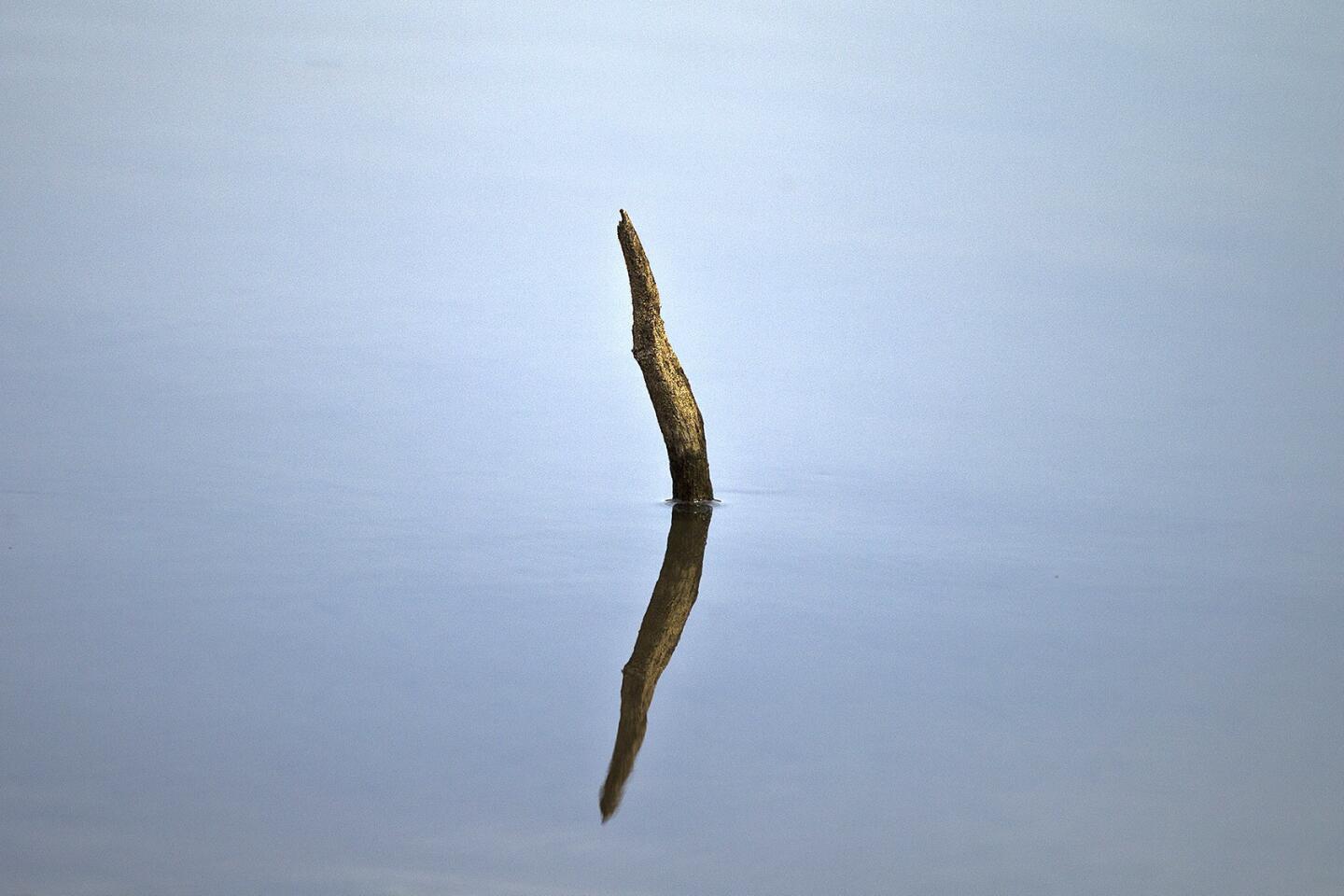
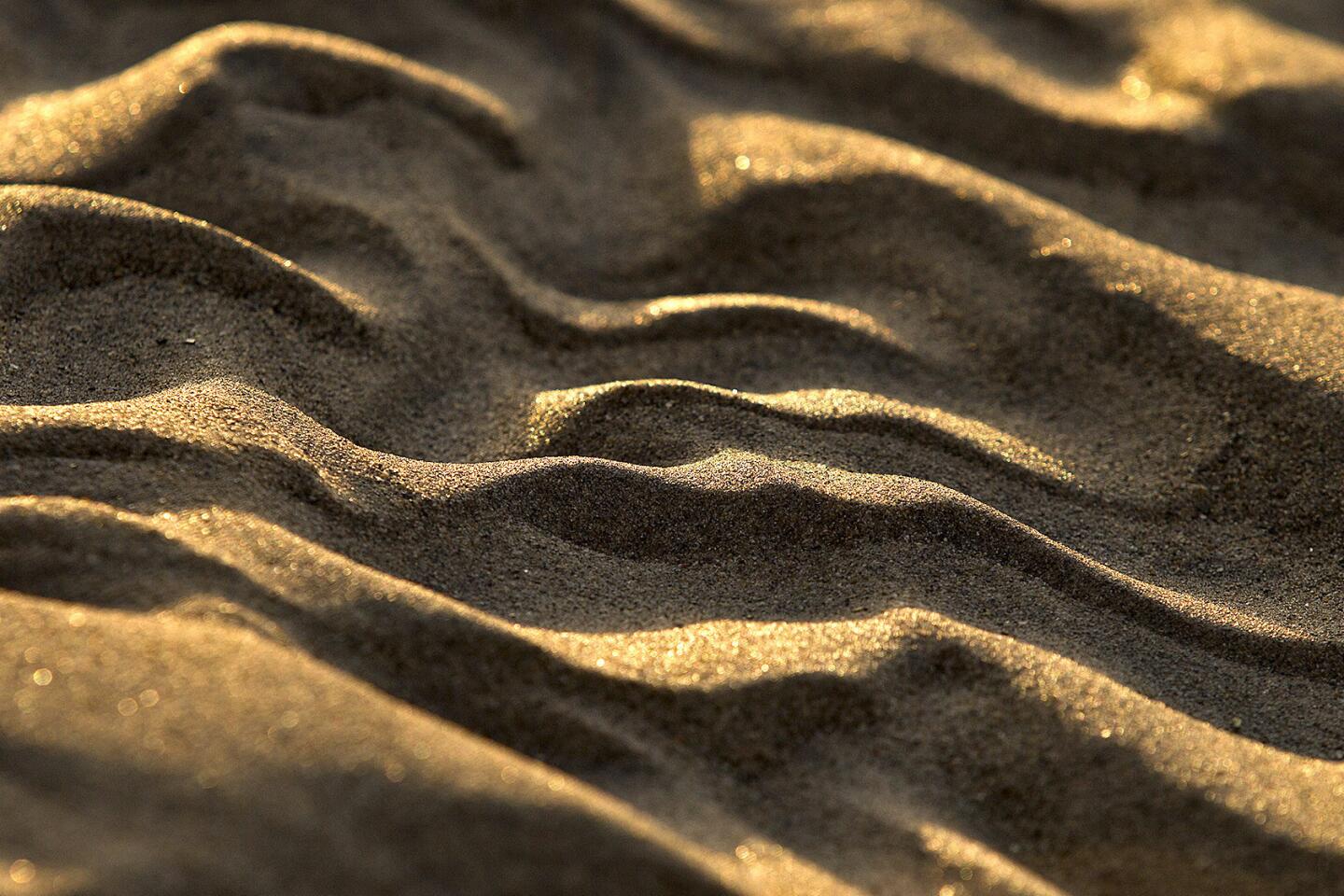
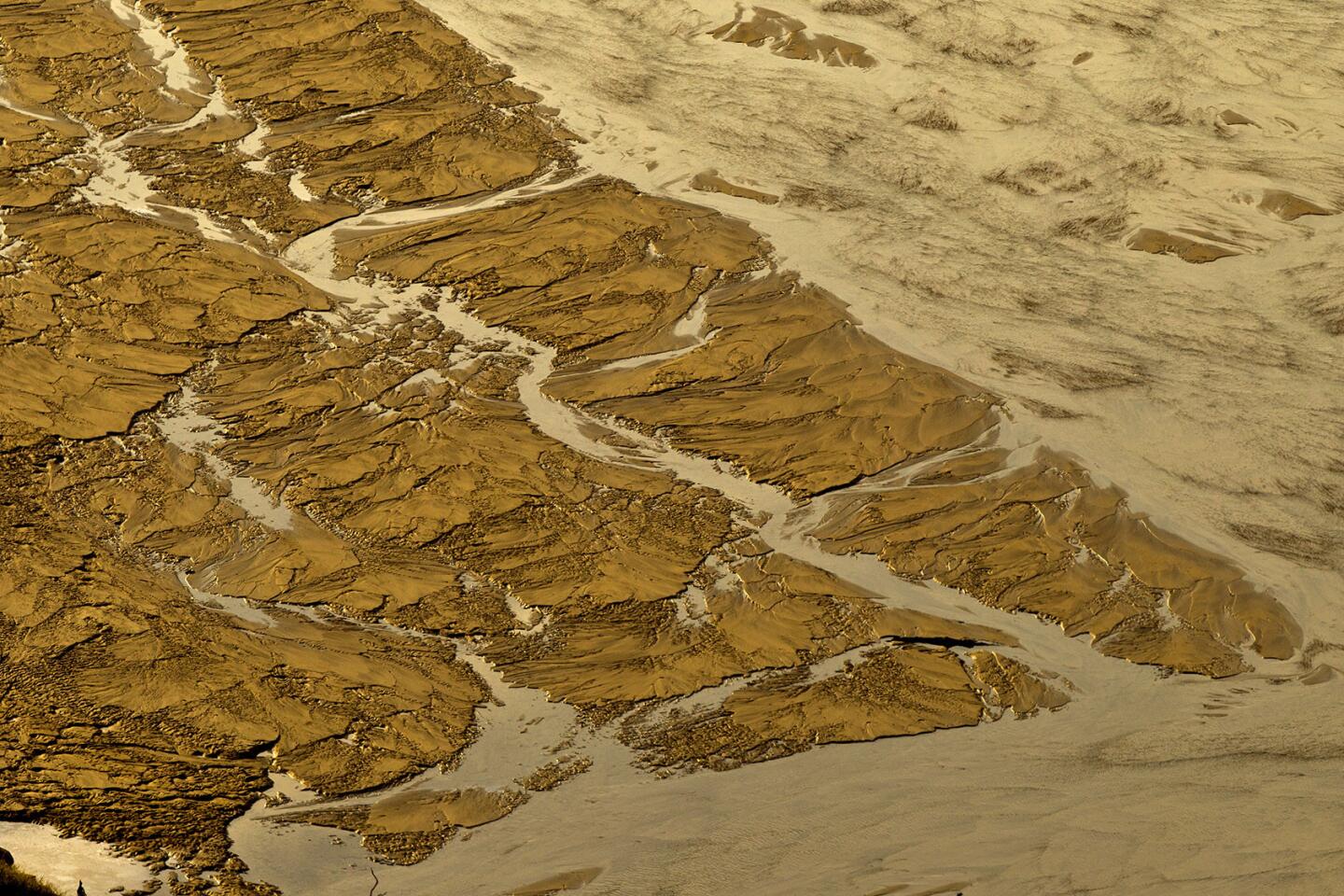
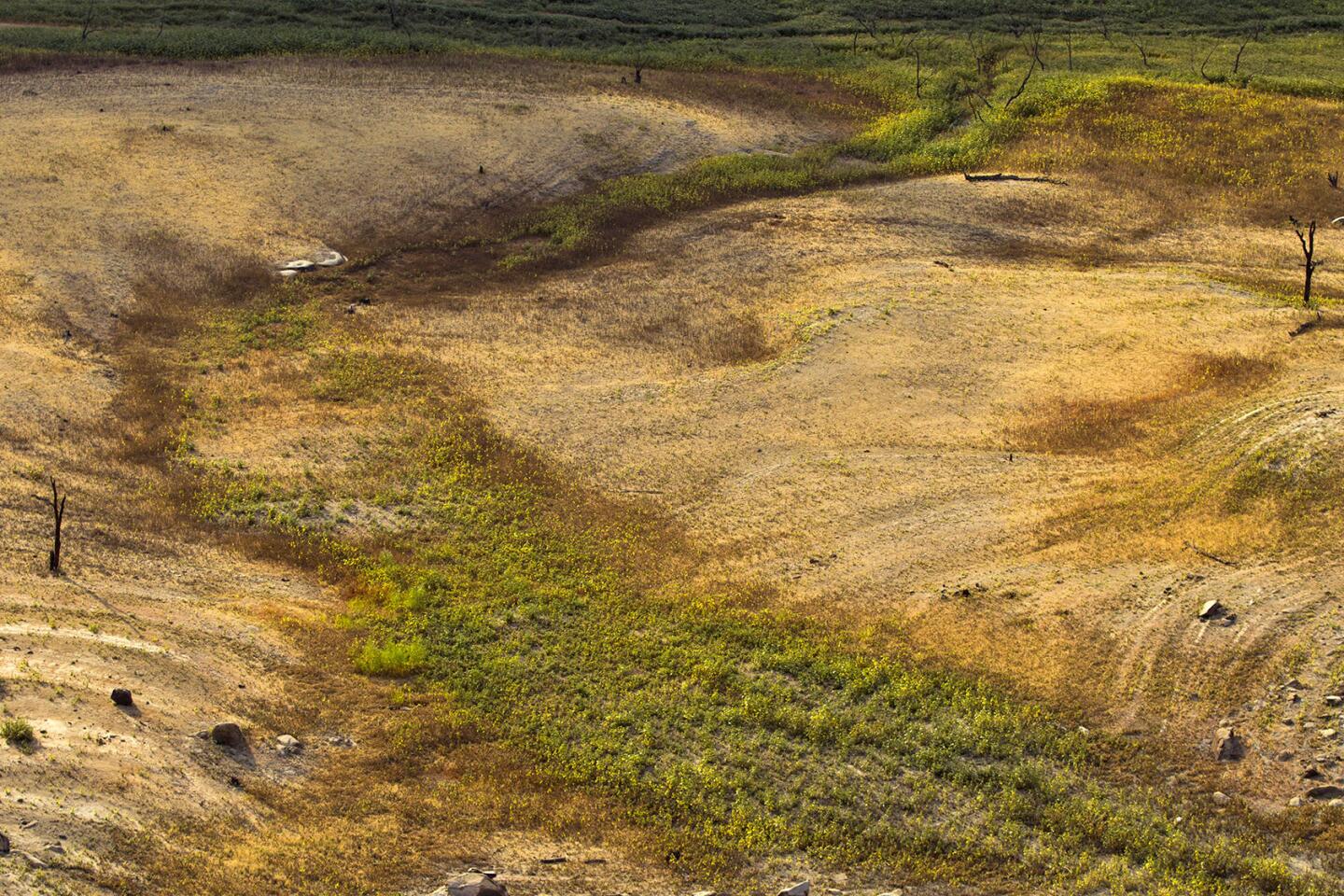
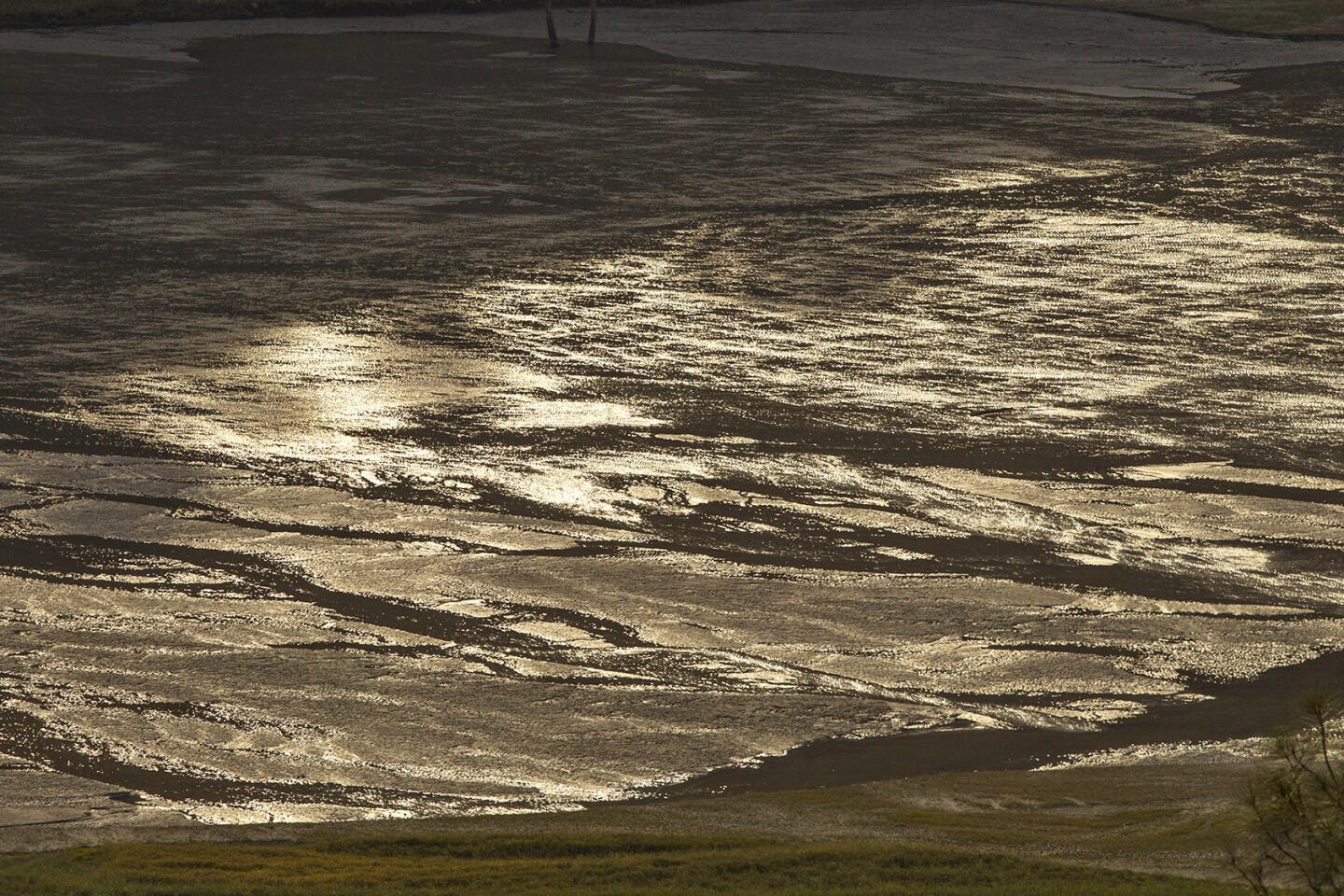
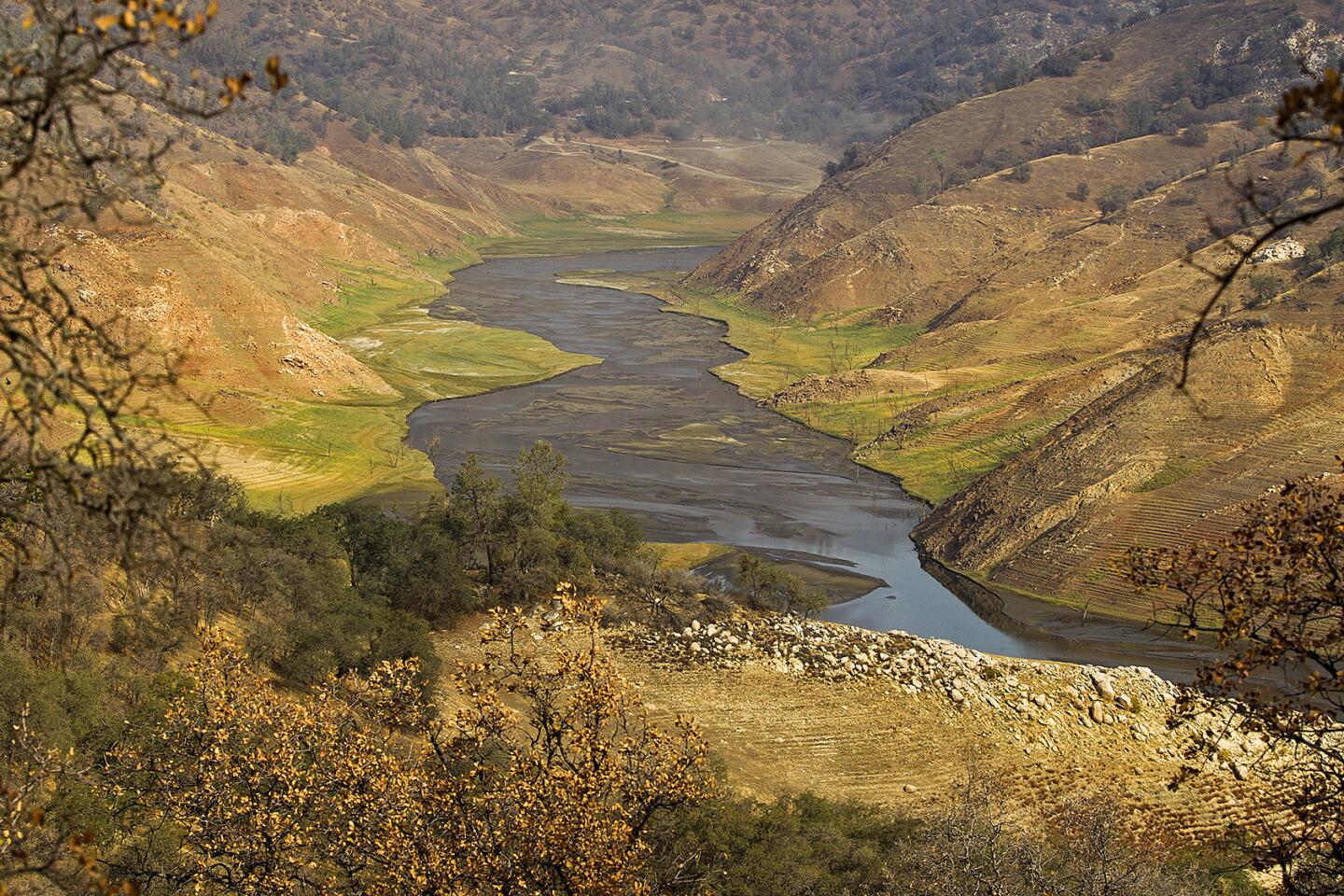
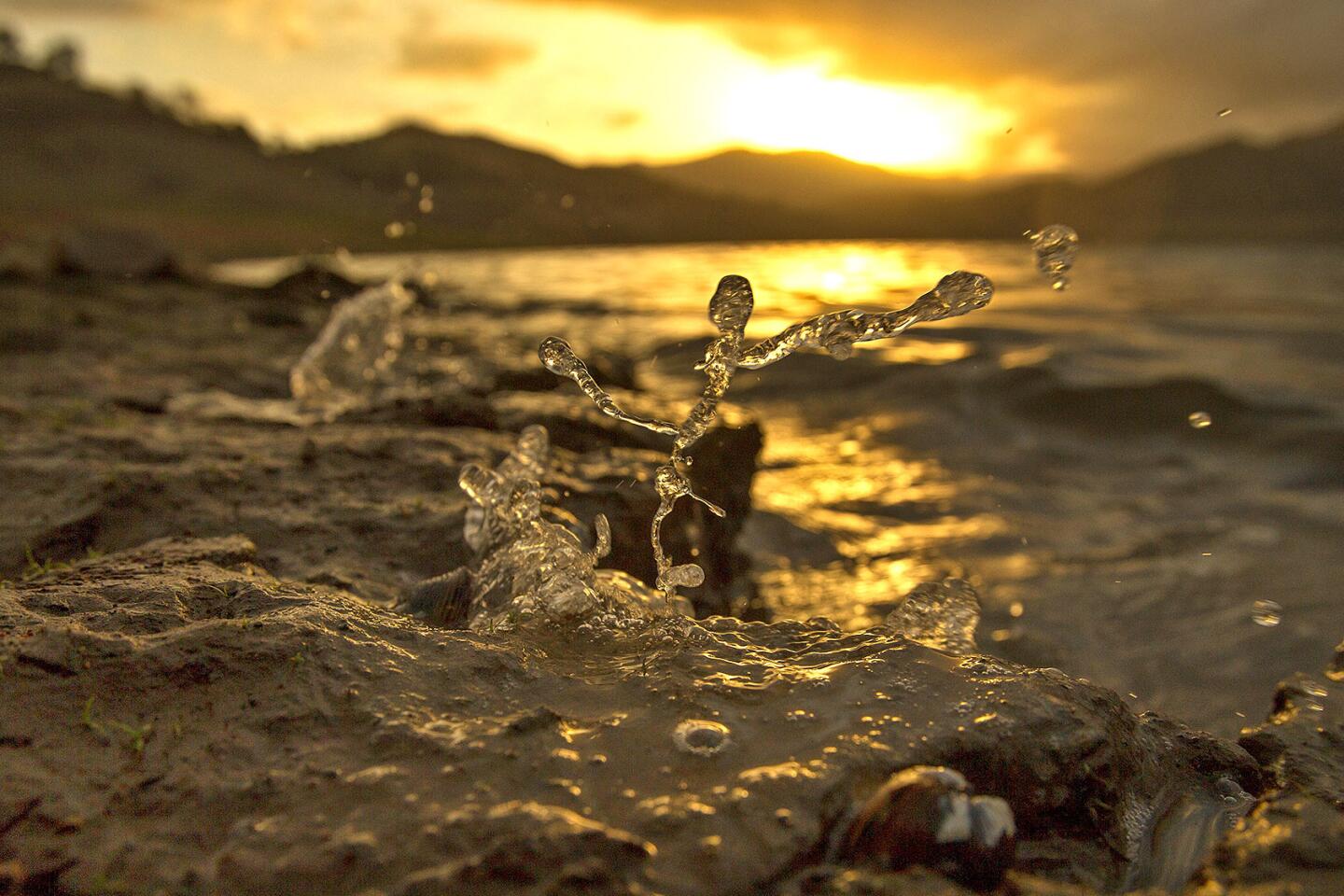

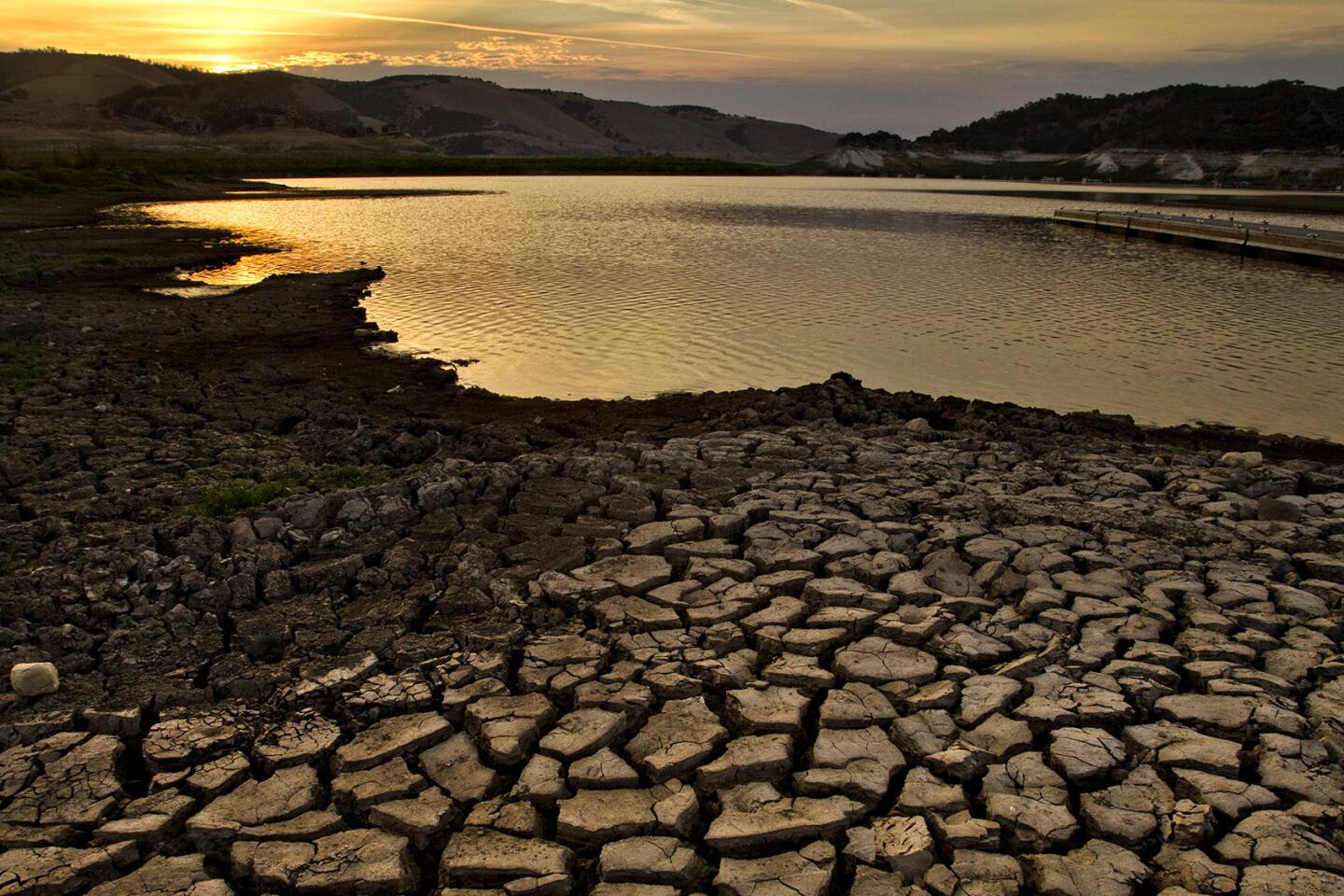
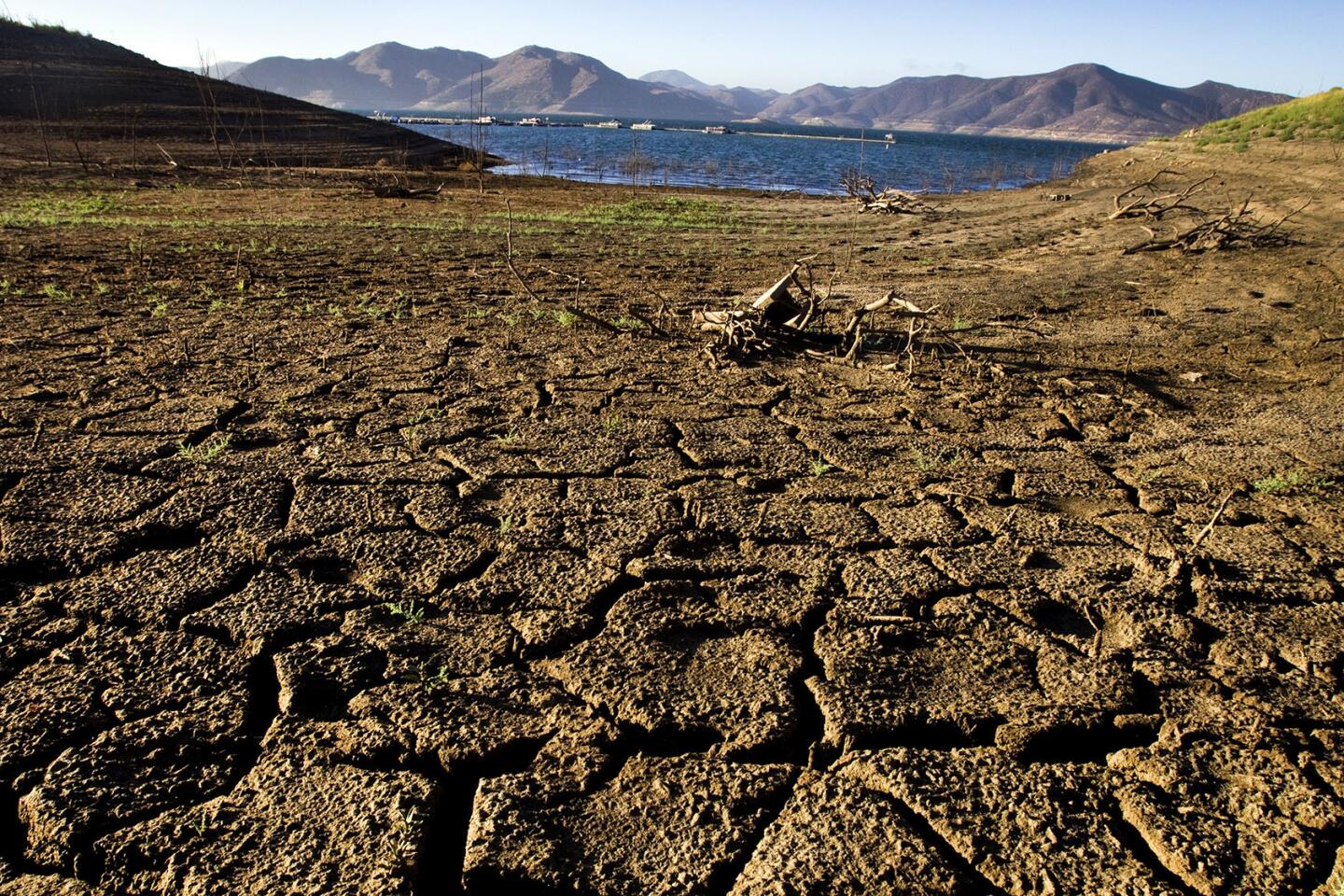
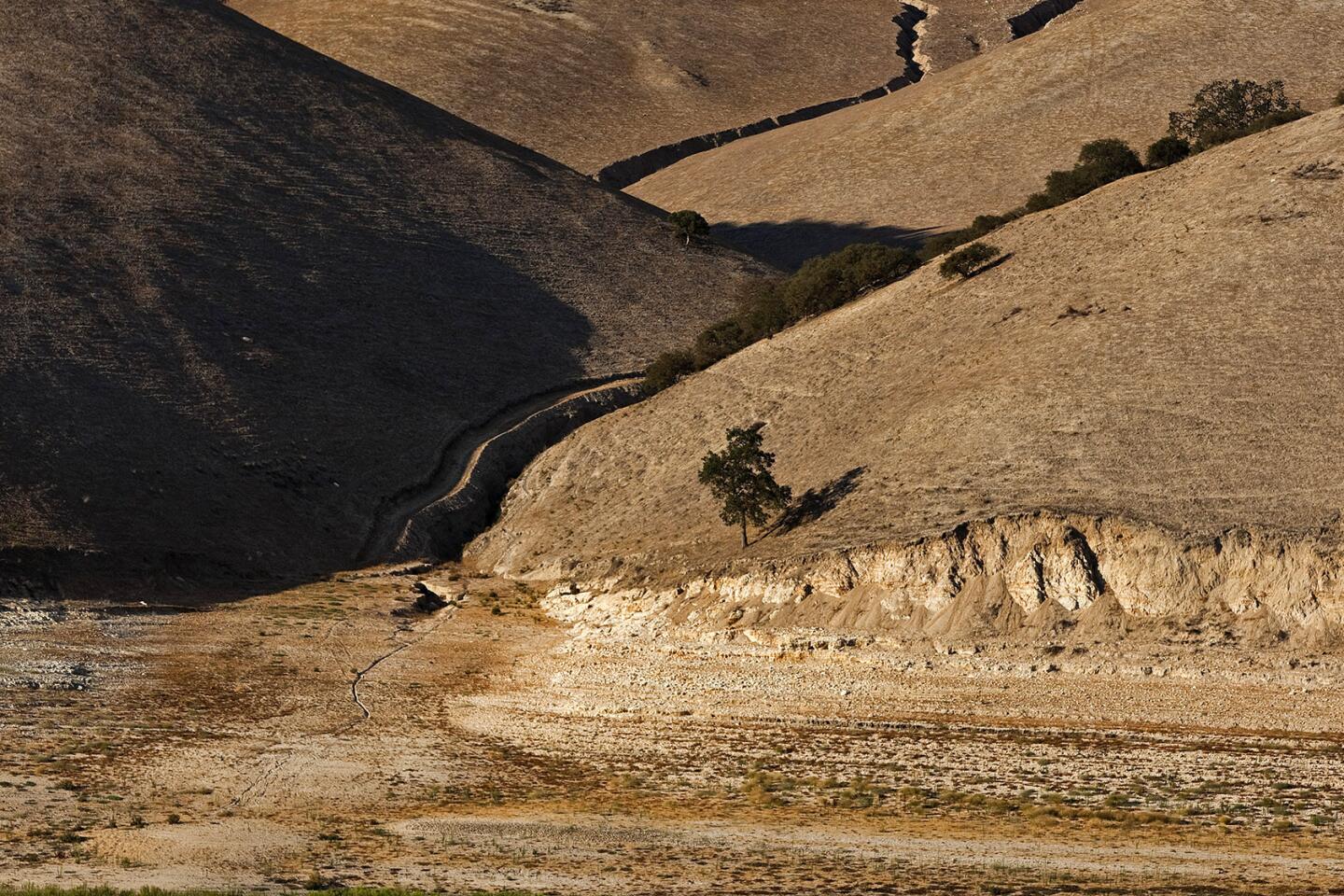
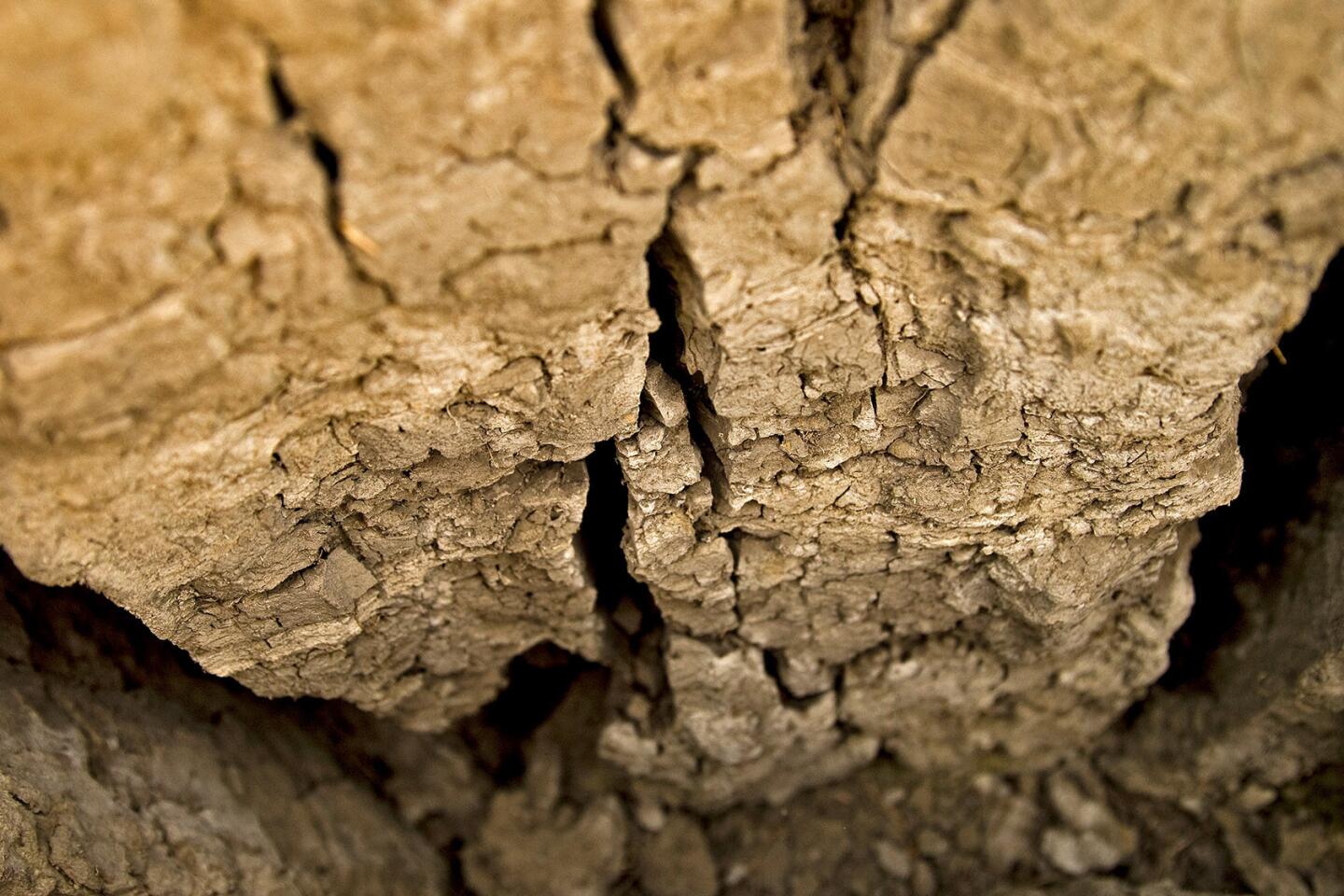
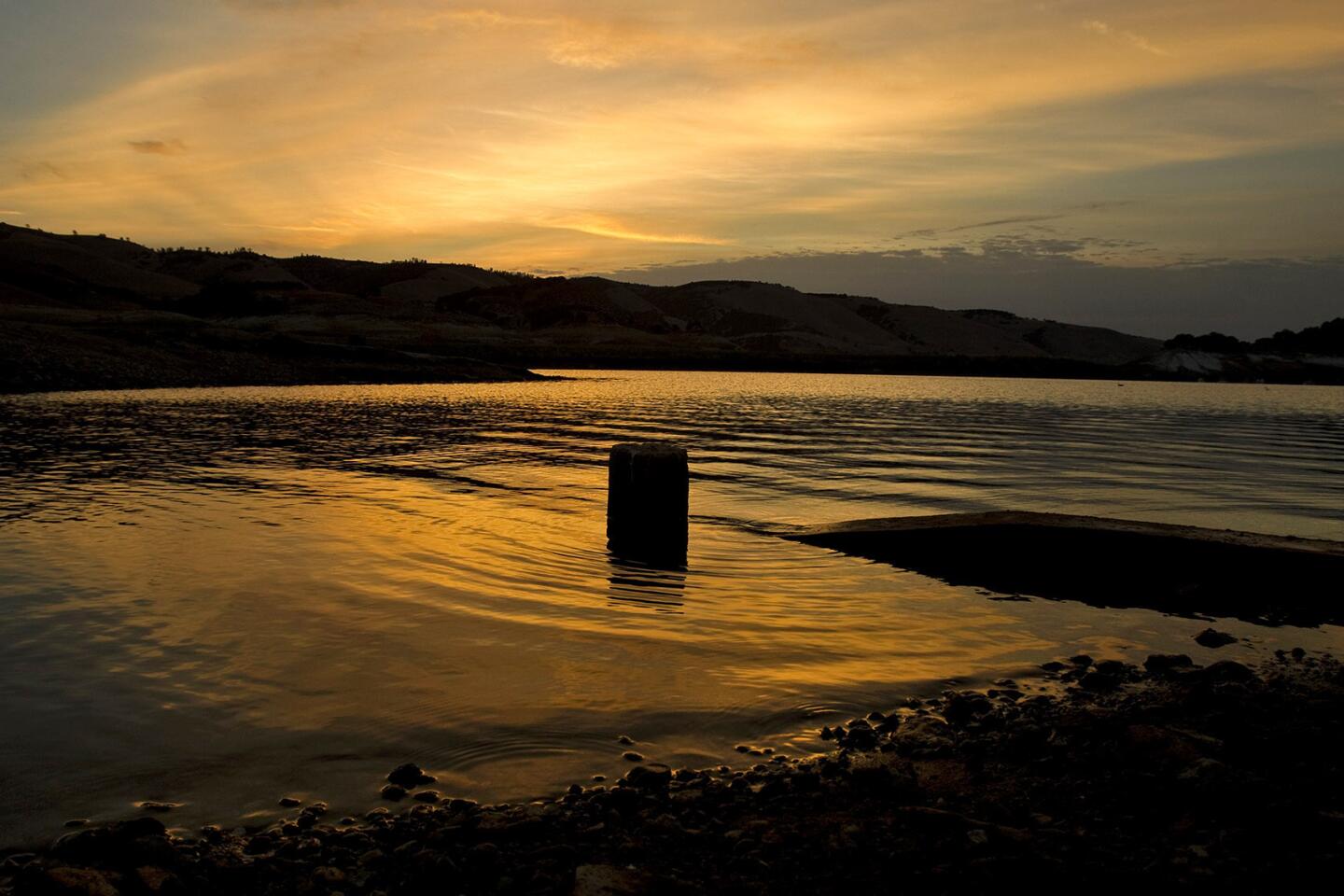
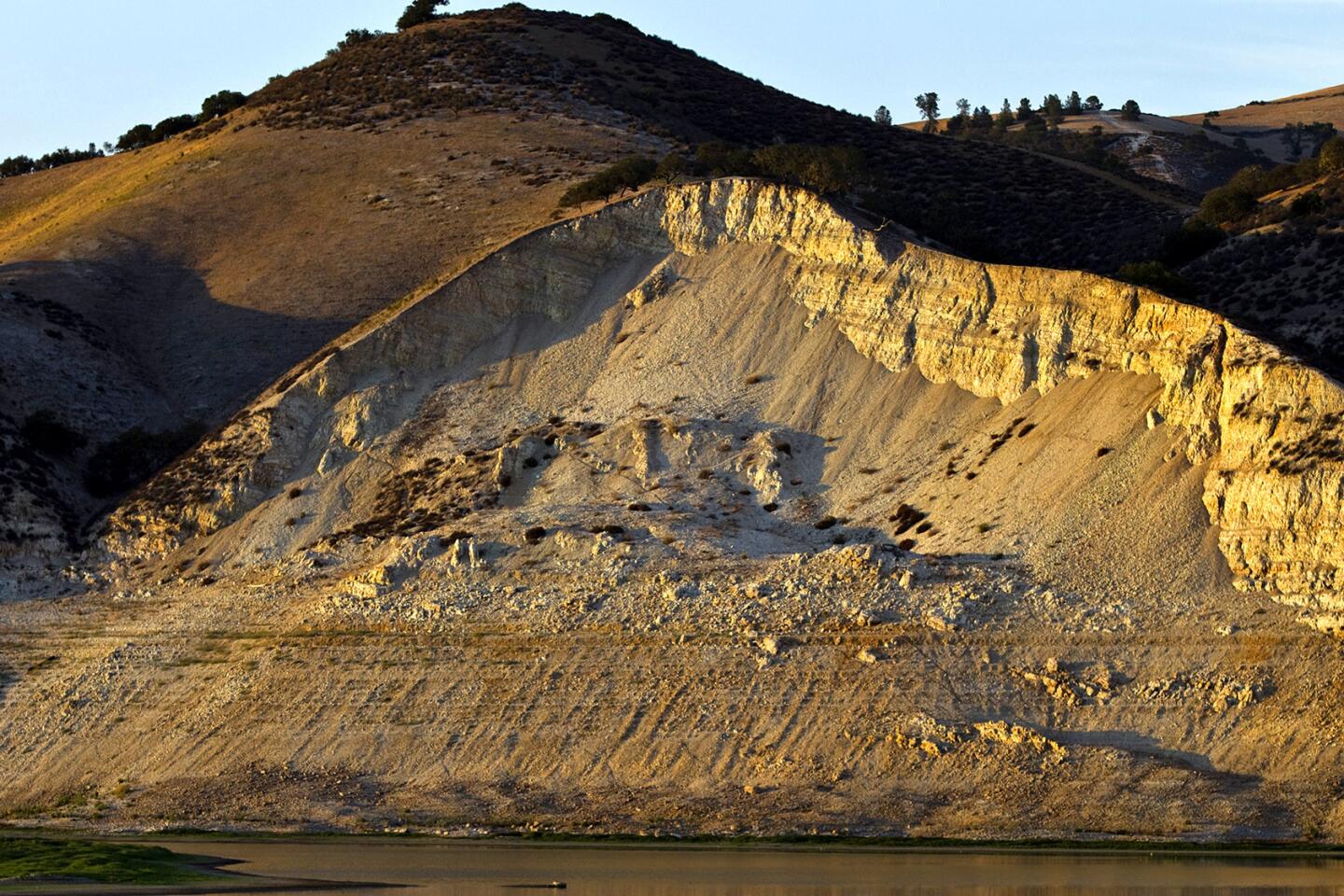
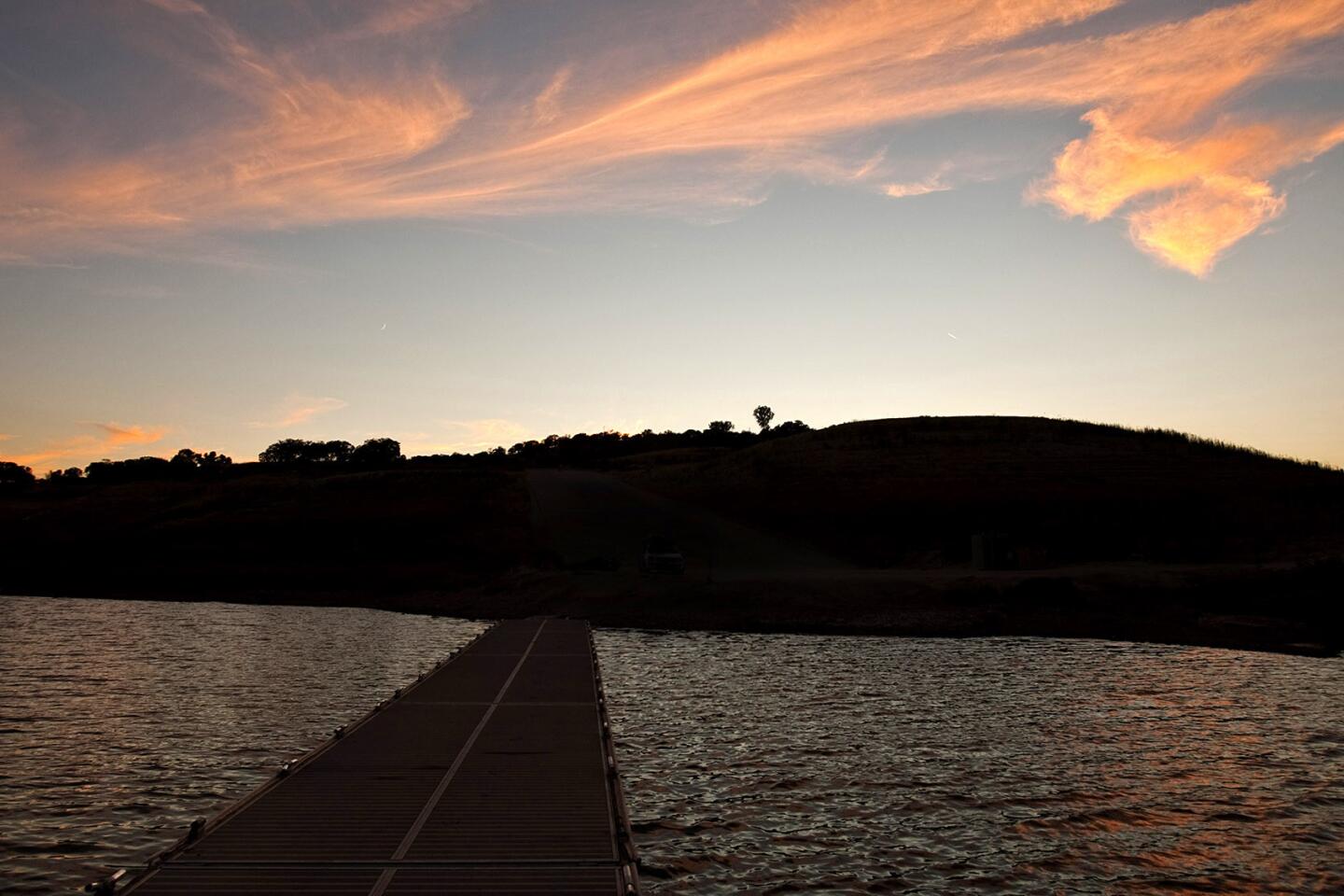
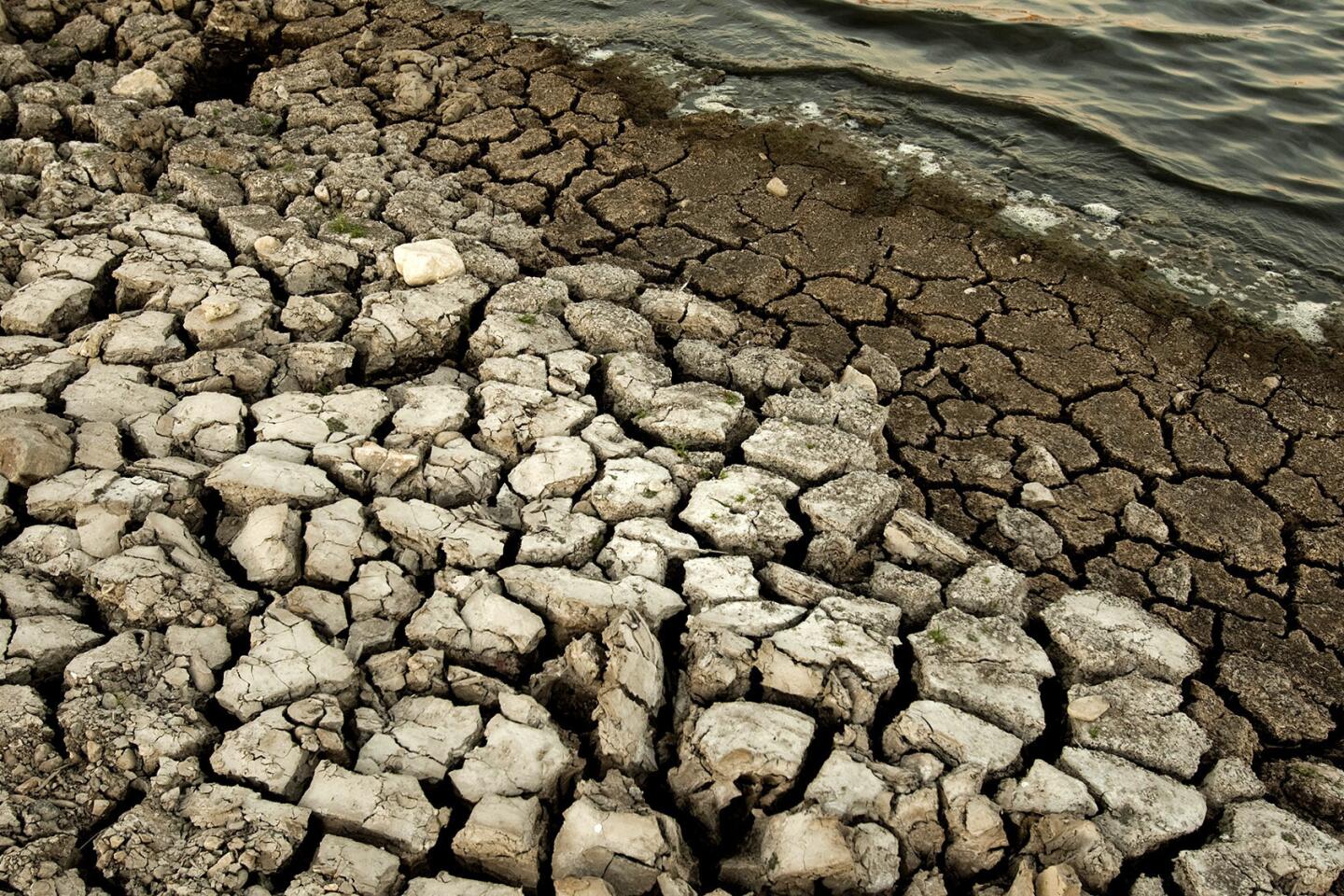
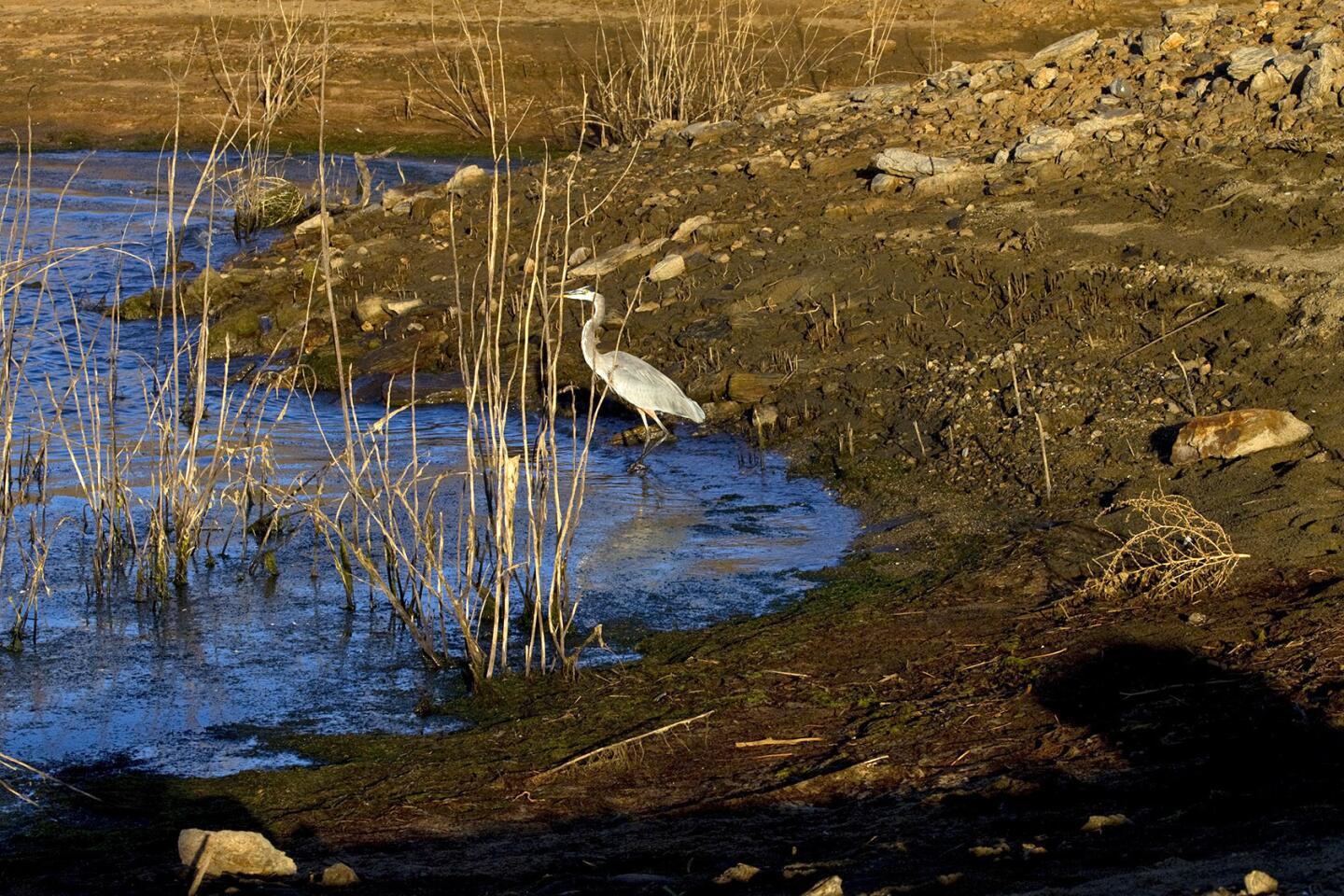
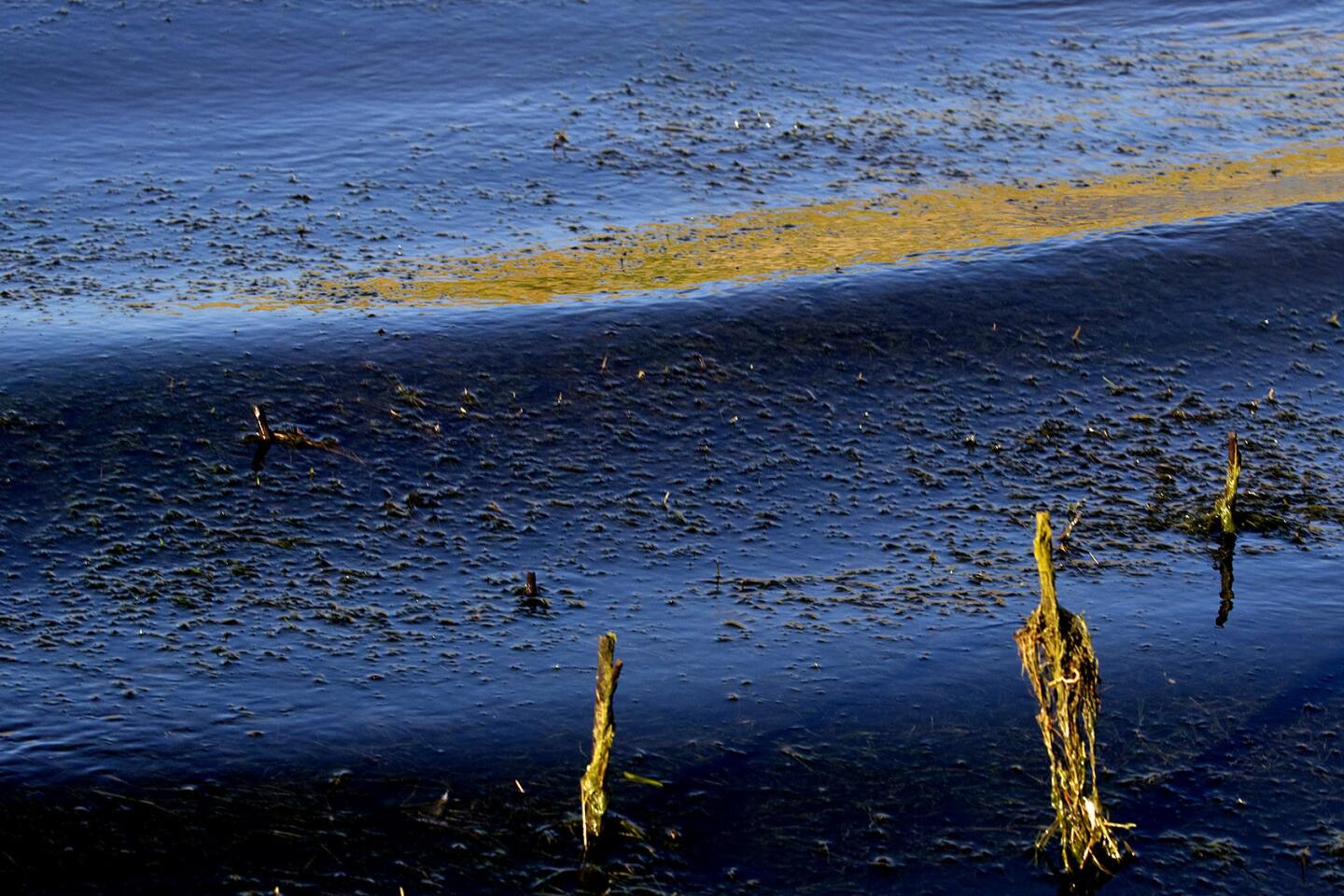
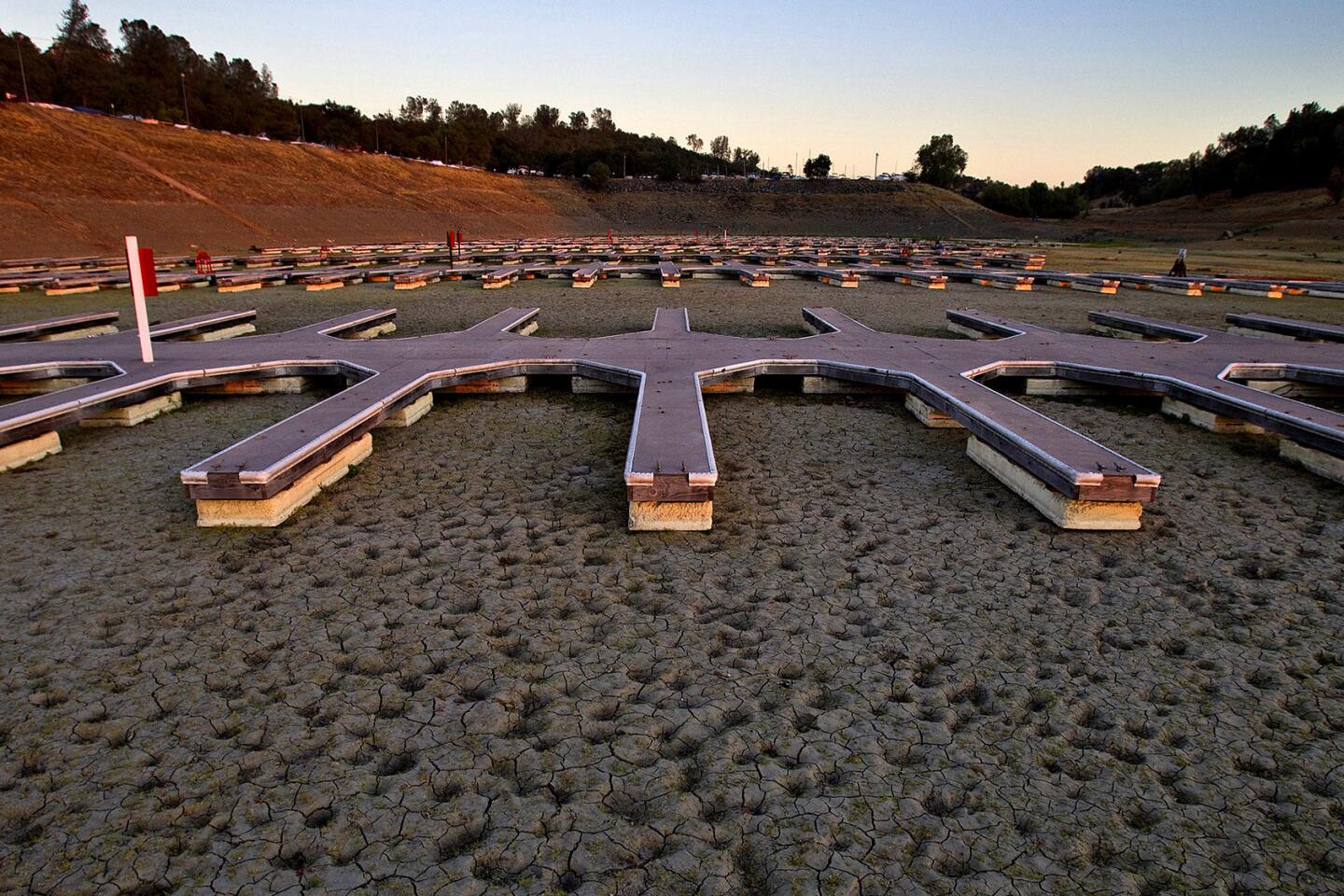
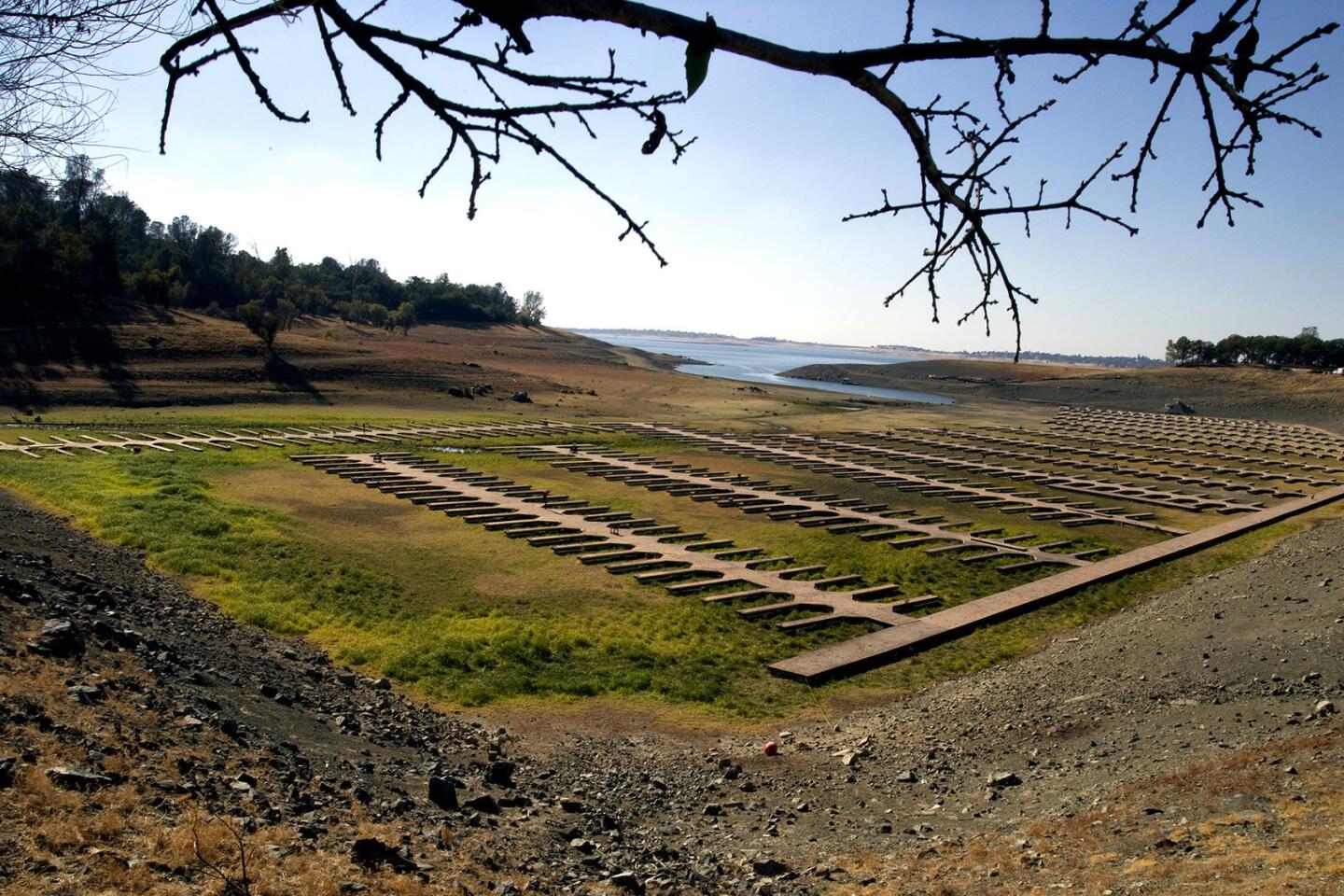
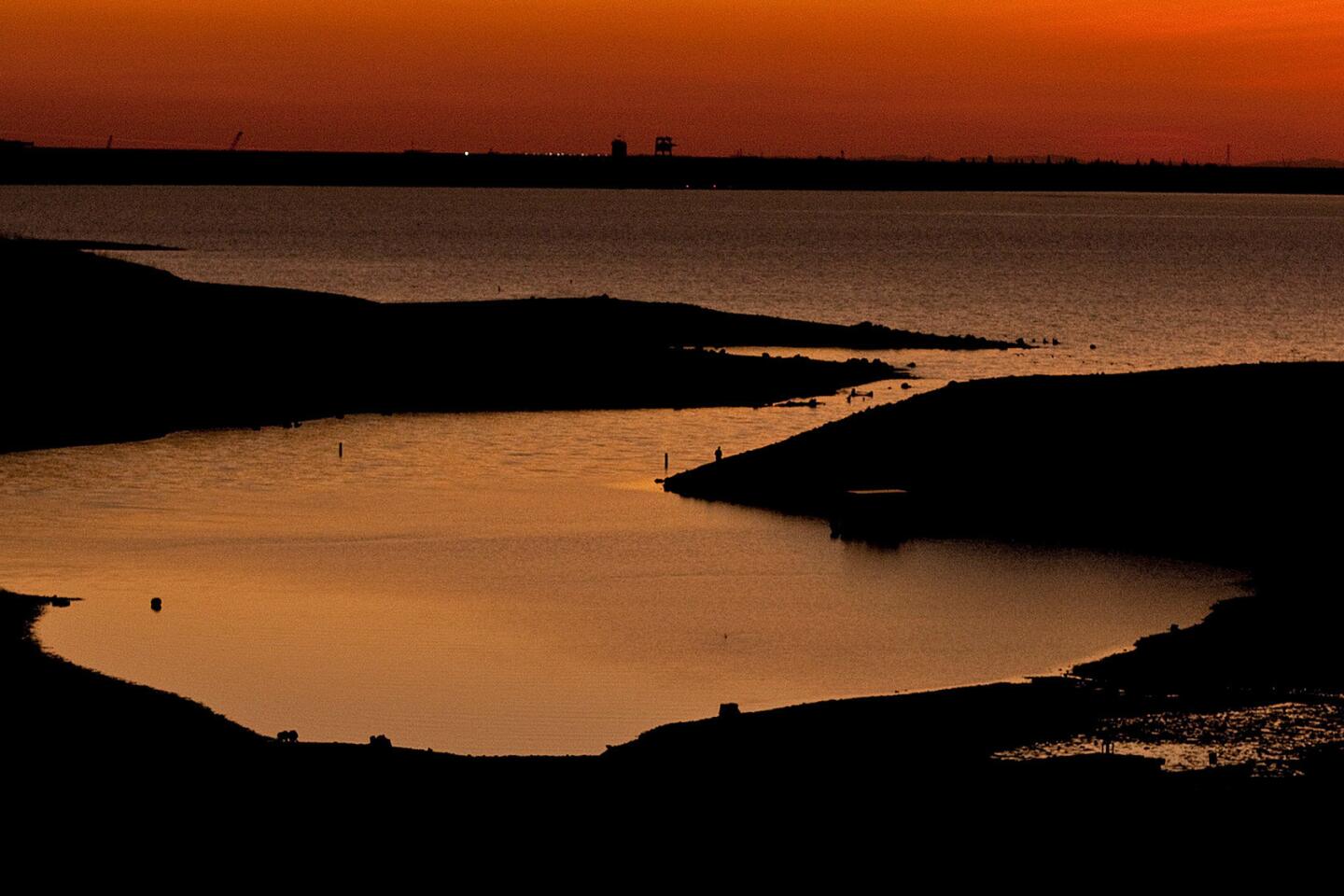
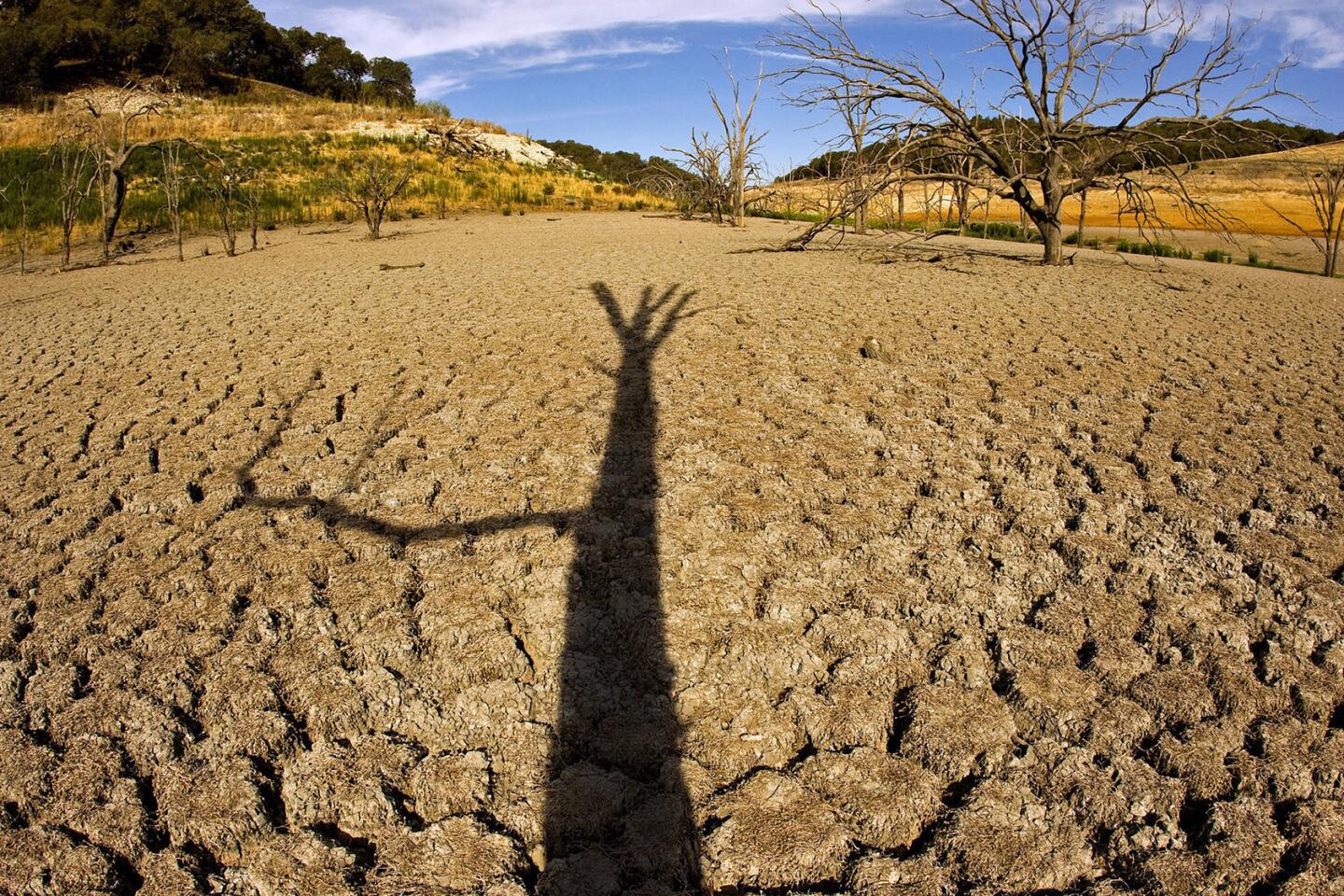
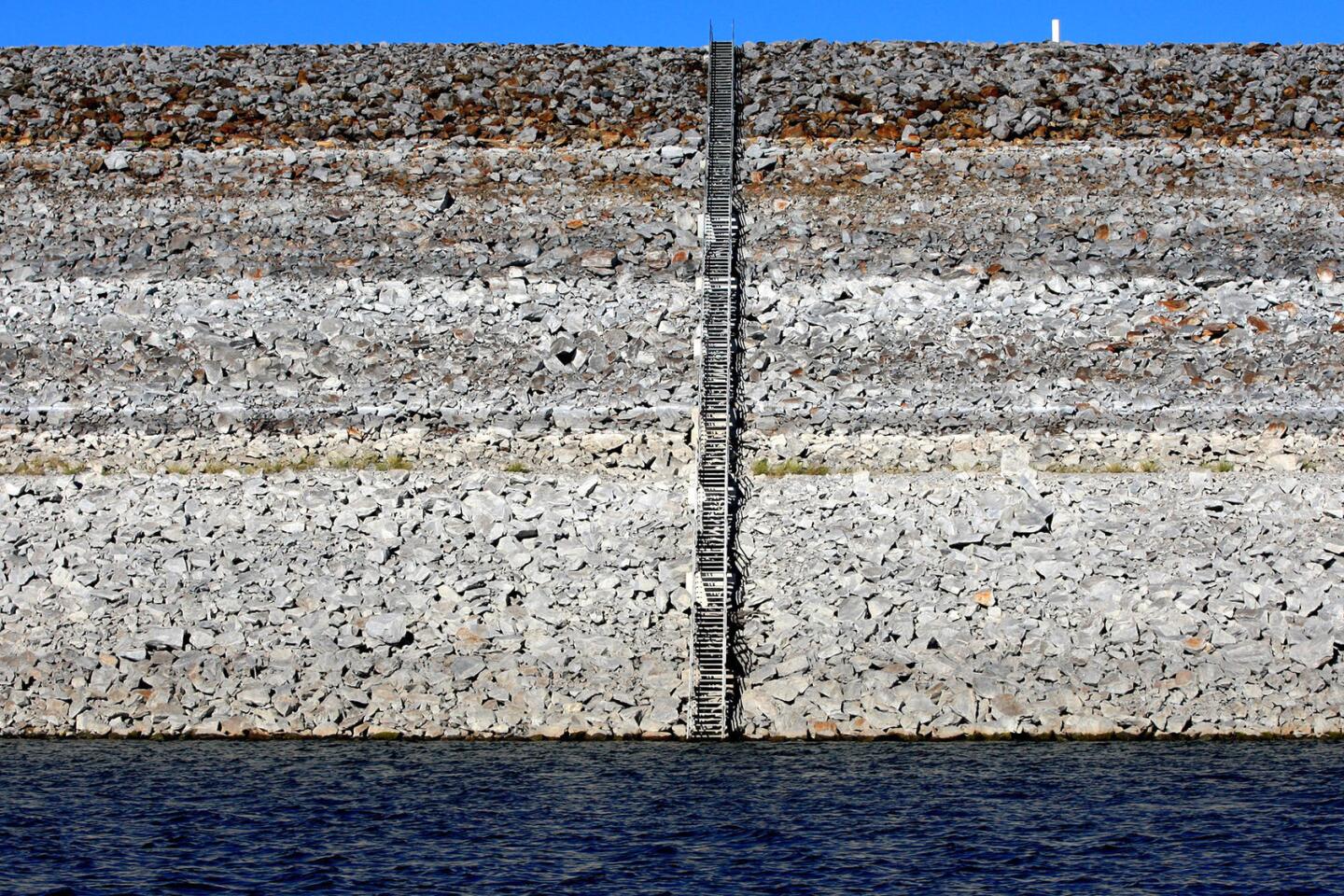
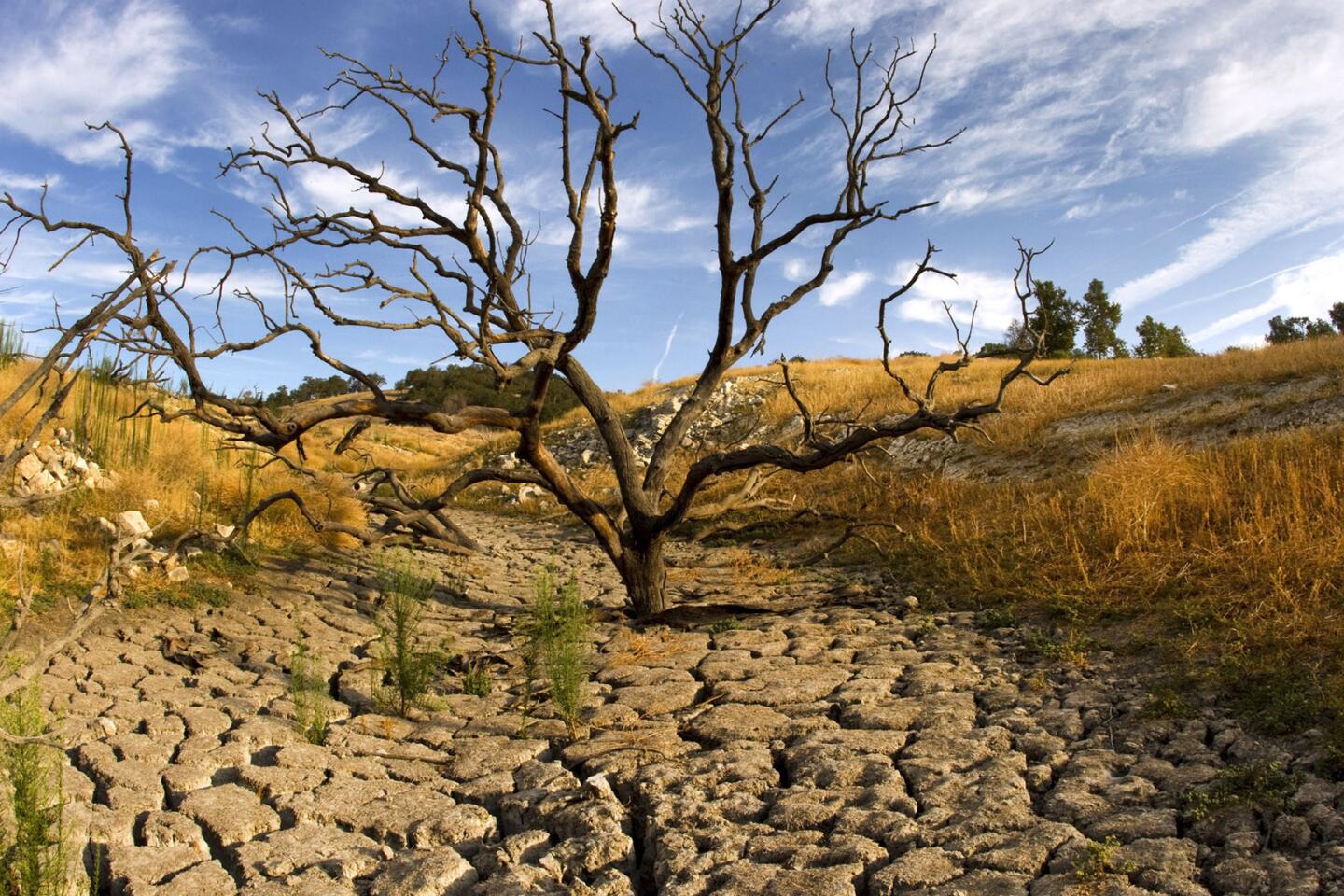
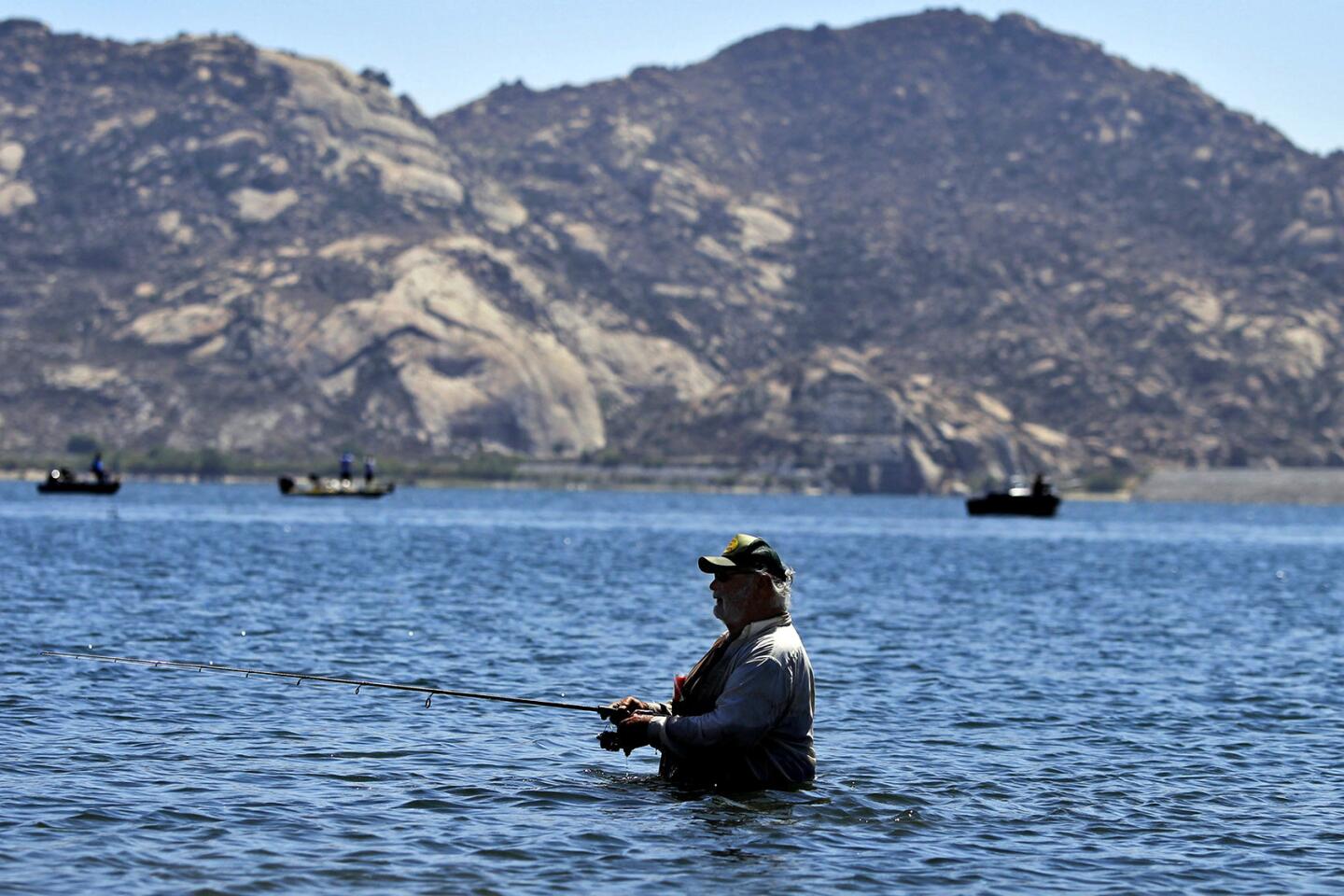
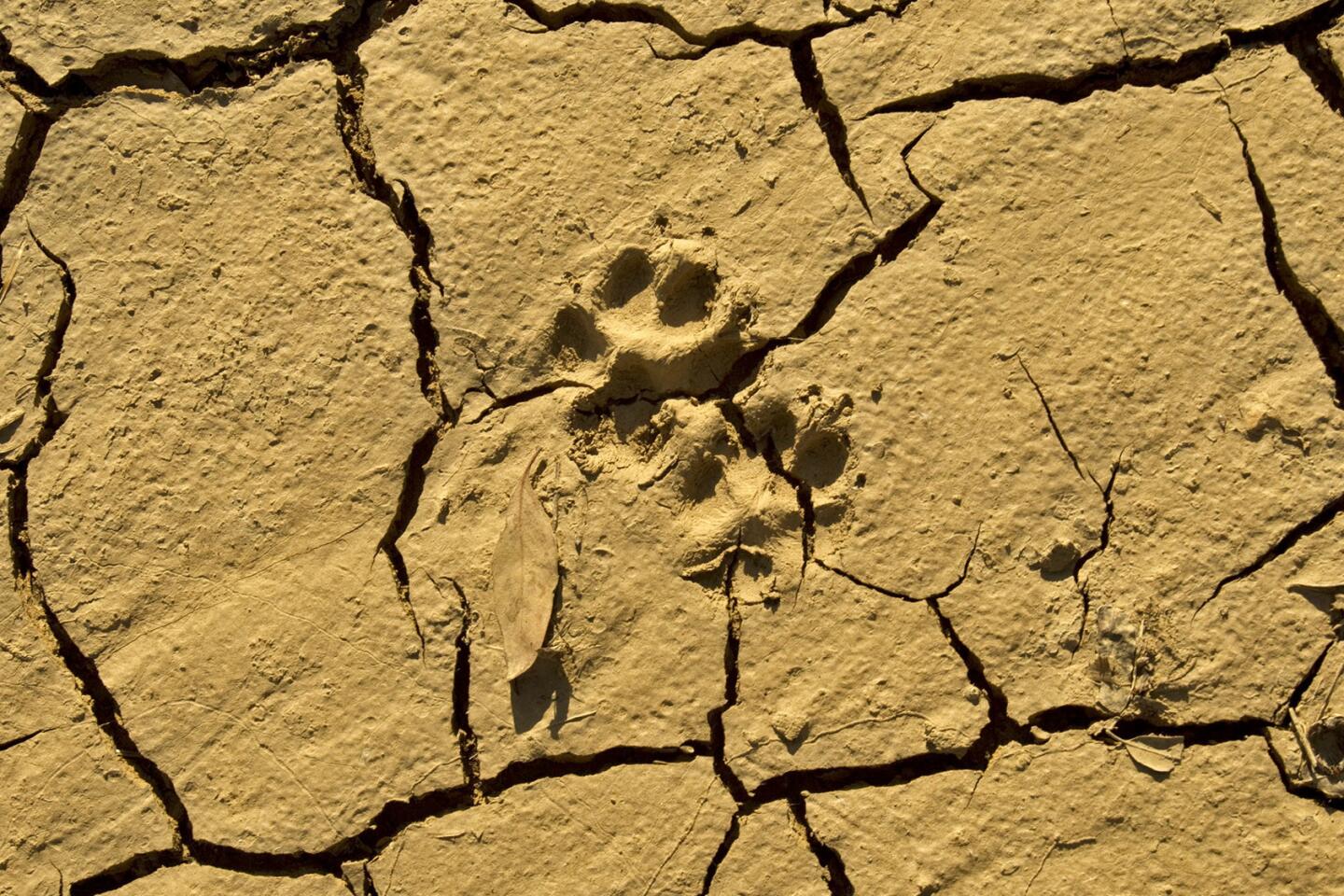
An animal’s footprint is molded into dry, cracked earth in a dry riverbed near a Castaic Lake bridge. Extremely low levels of water at sunrise at Castaic Lake and reveal the effects of the prolonged drought March 8, 2014.
(Allen J. Schaben / Los Angeles Times)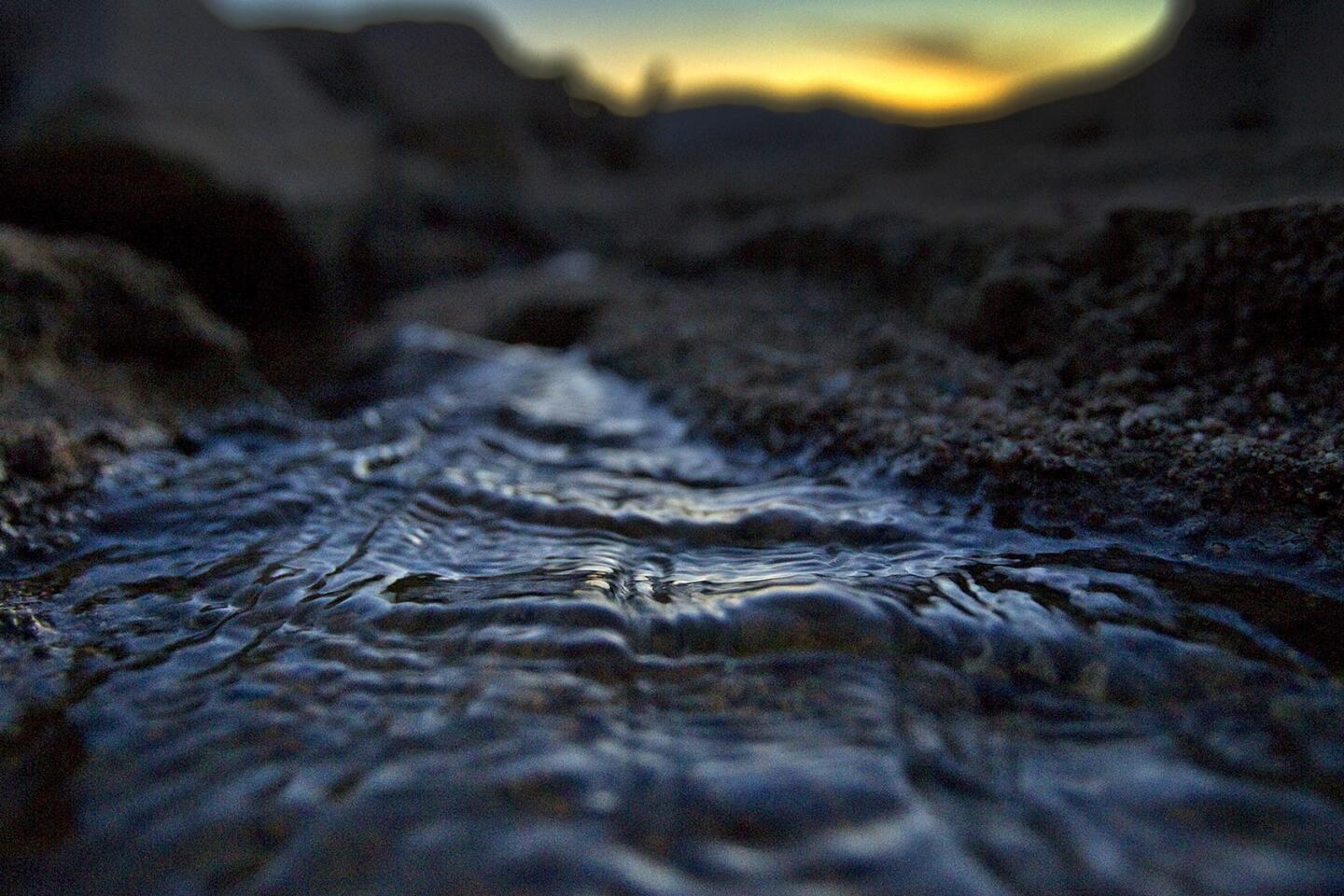
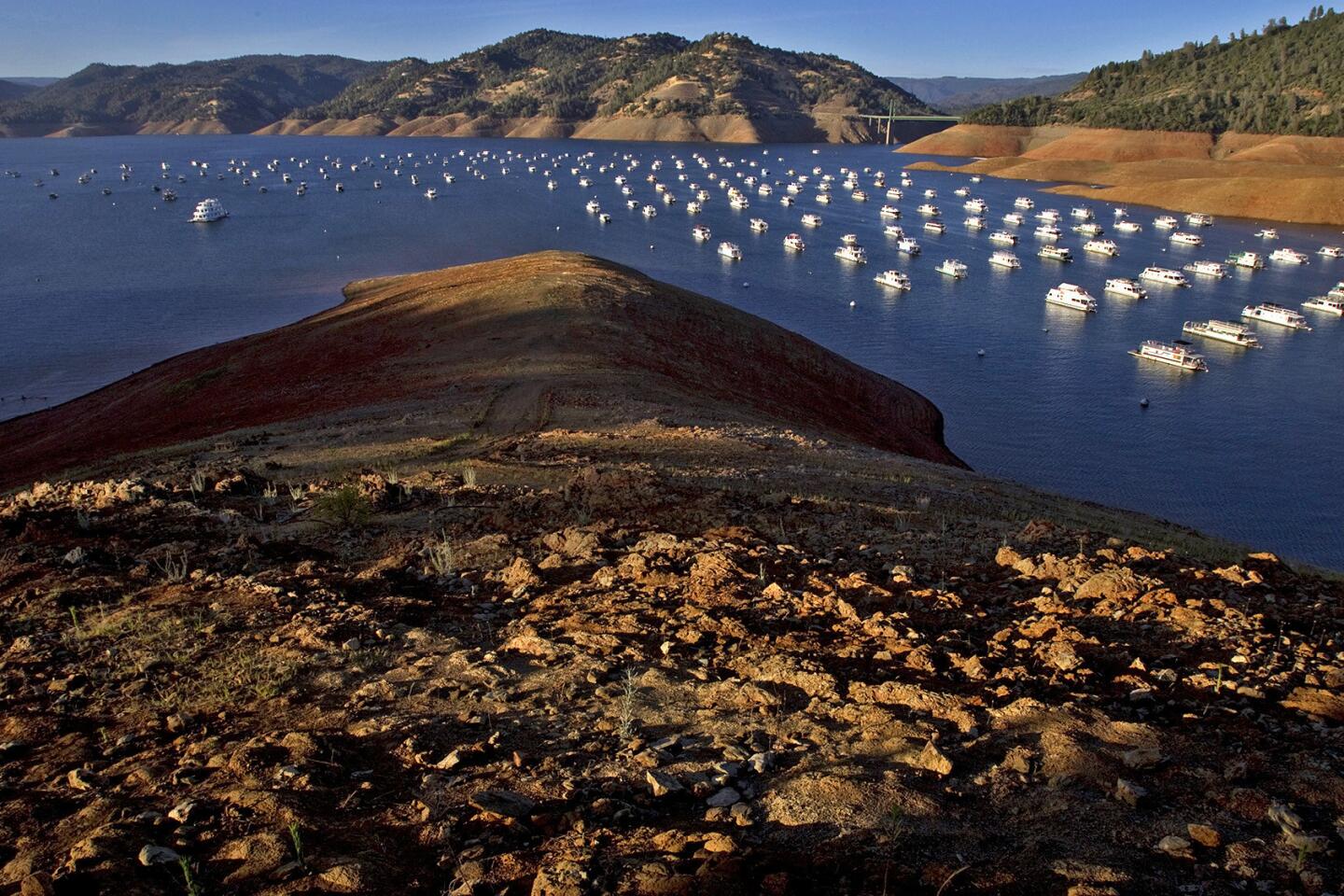
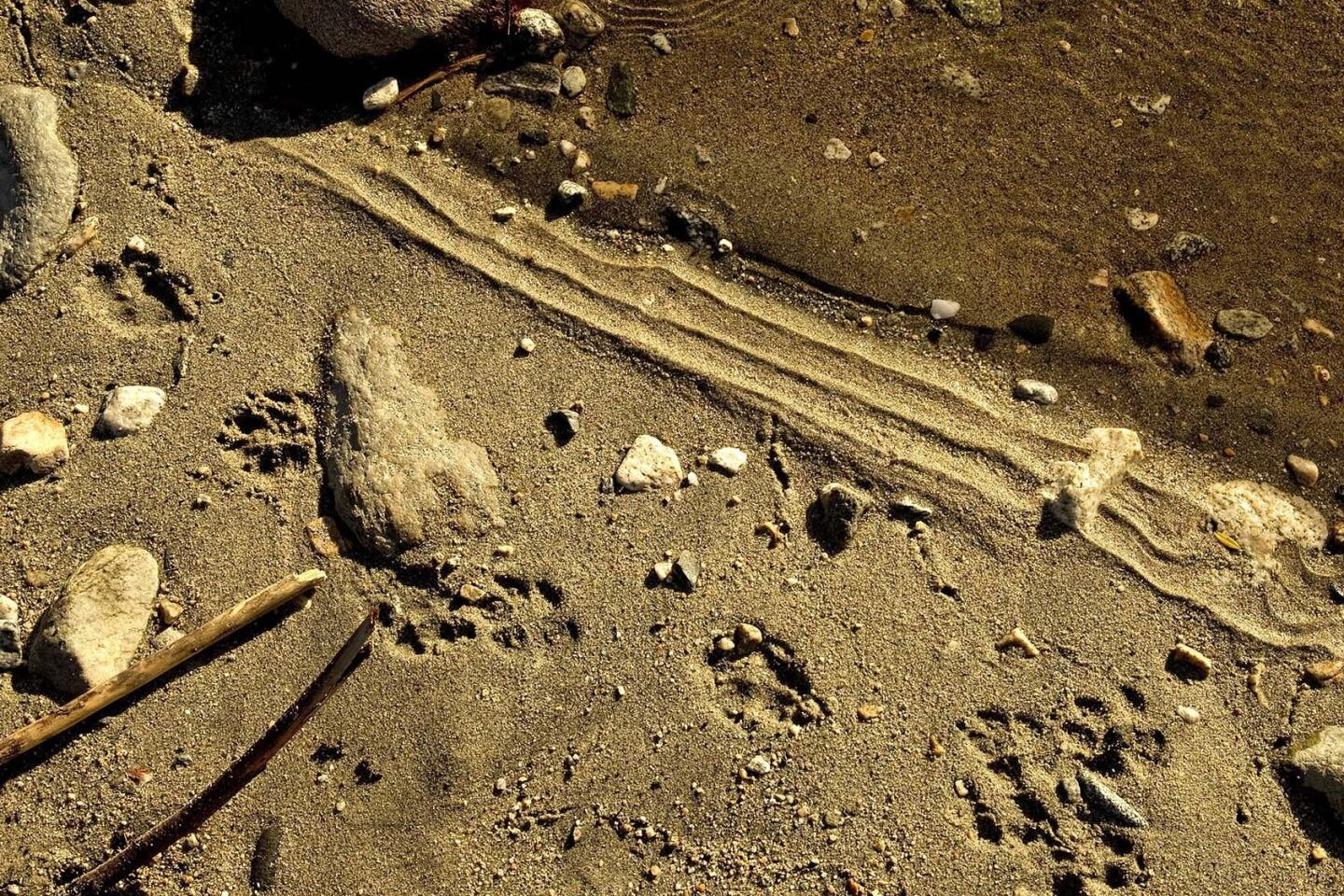
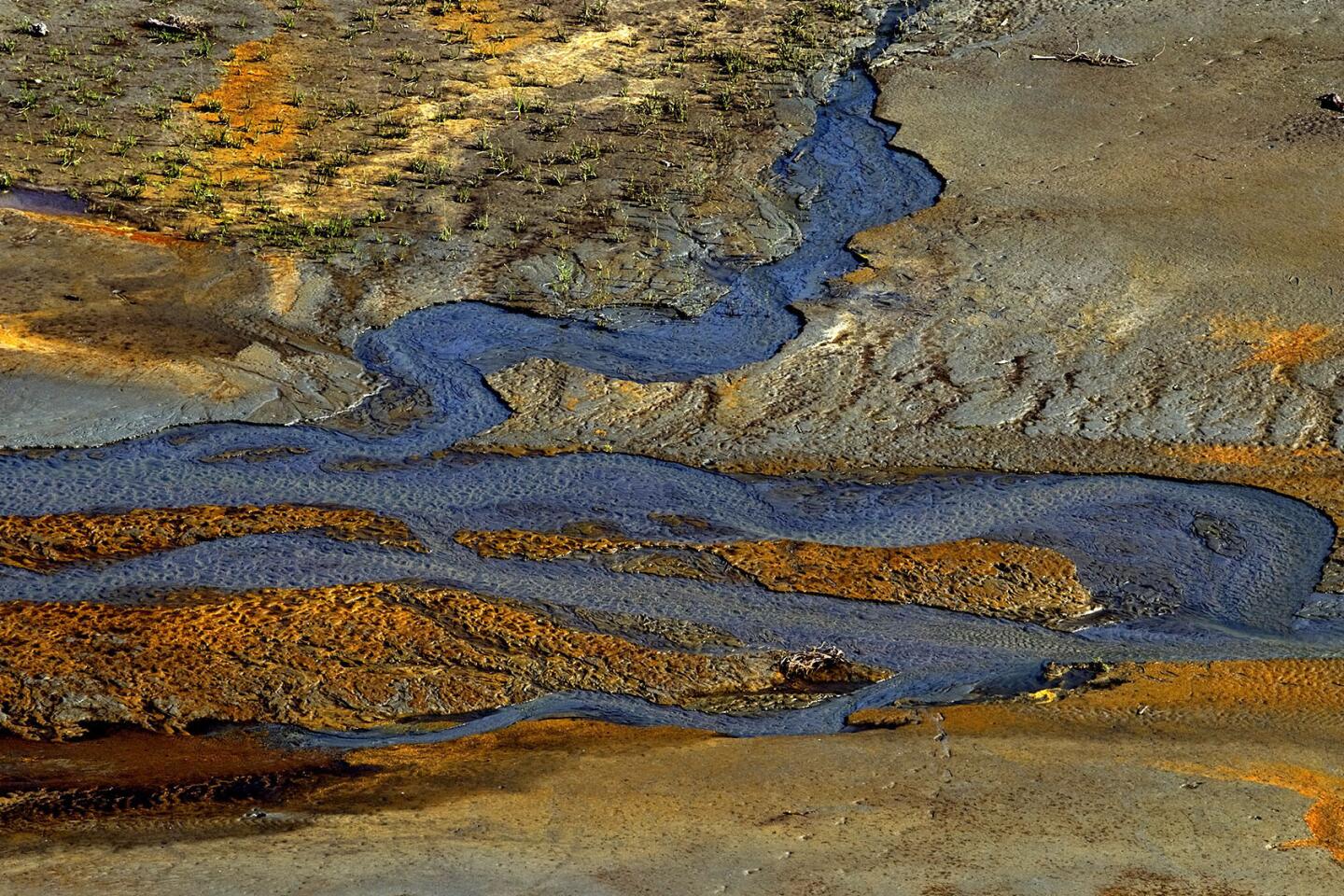
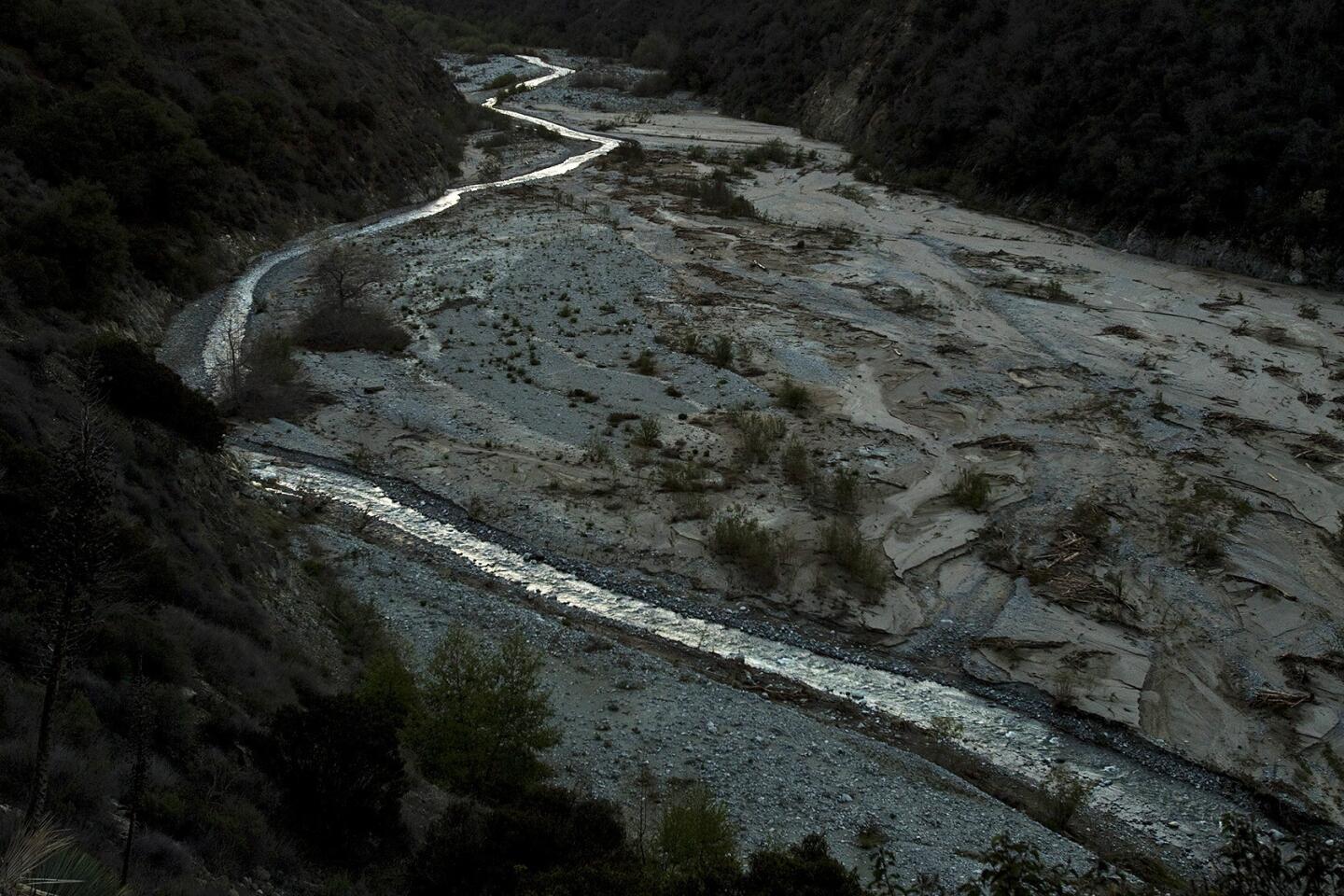
A pre-dawn glow illuminates a narrow, shallow meandering stream flowing in San Gabriel River’s East Fork in the Angeles National Forest, which reveal the effects of the prolonged drought March 12, 2014.
(Allen J. Schaben / Los Angeles Times)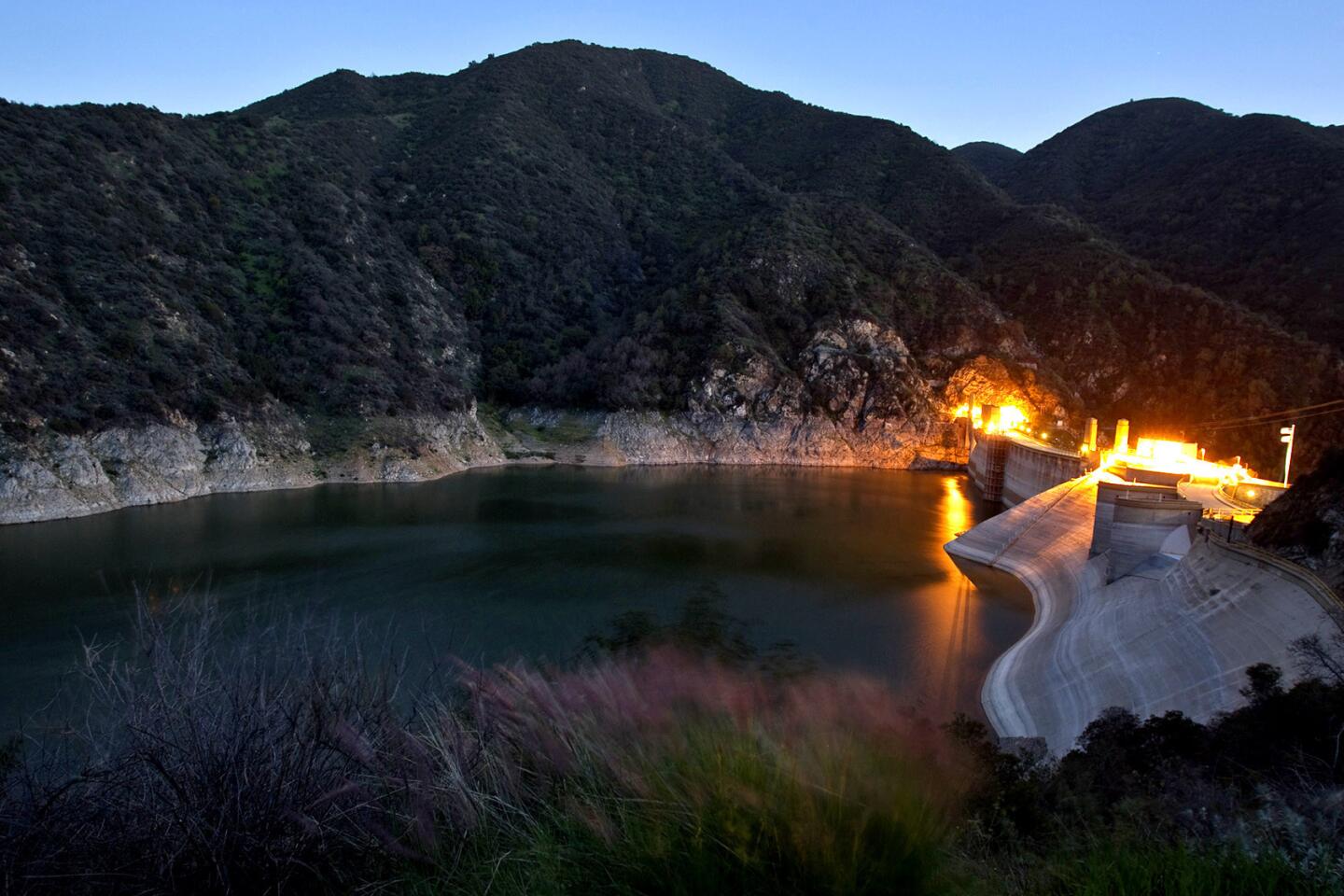
A white rocky ring reveals low levels of water in the Morris Dam, just north of Azusa in the Angeles National Forest, reflecting the effects of the prolonged drought March 12, 2014.
(Allen J. Schaben / Los Angeles Times)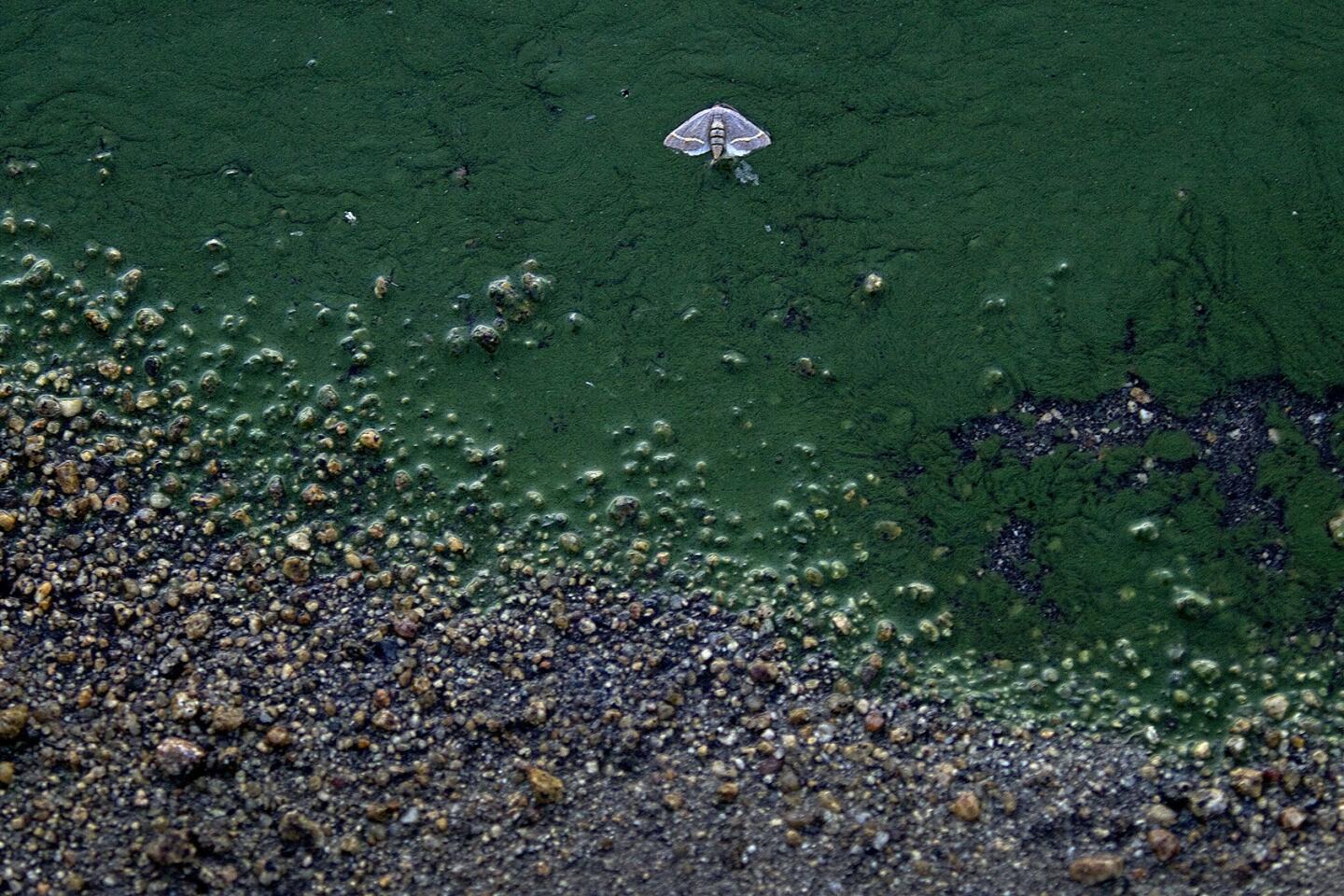
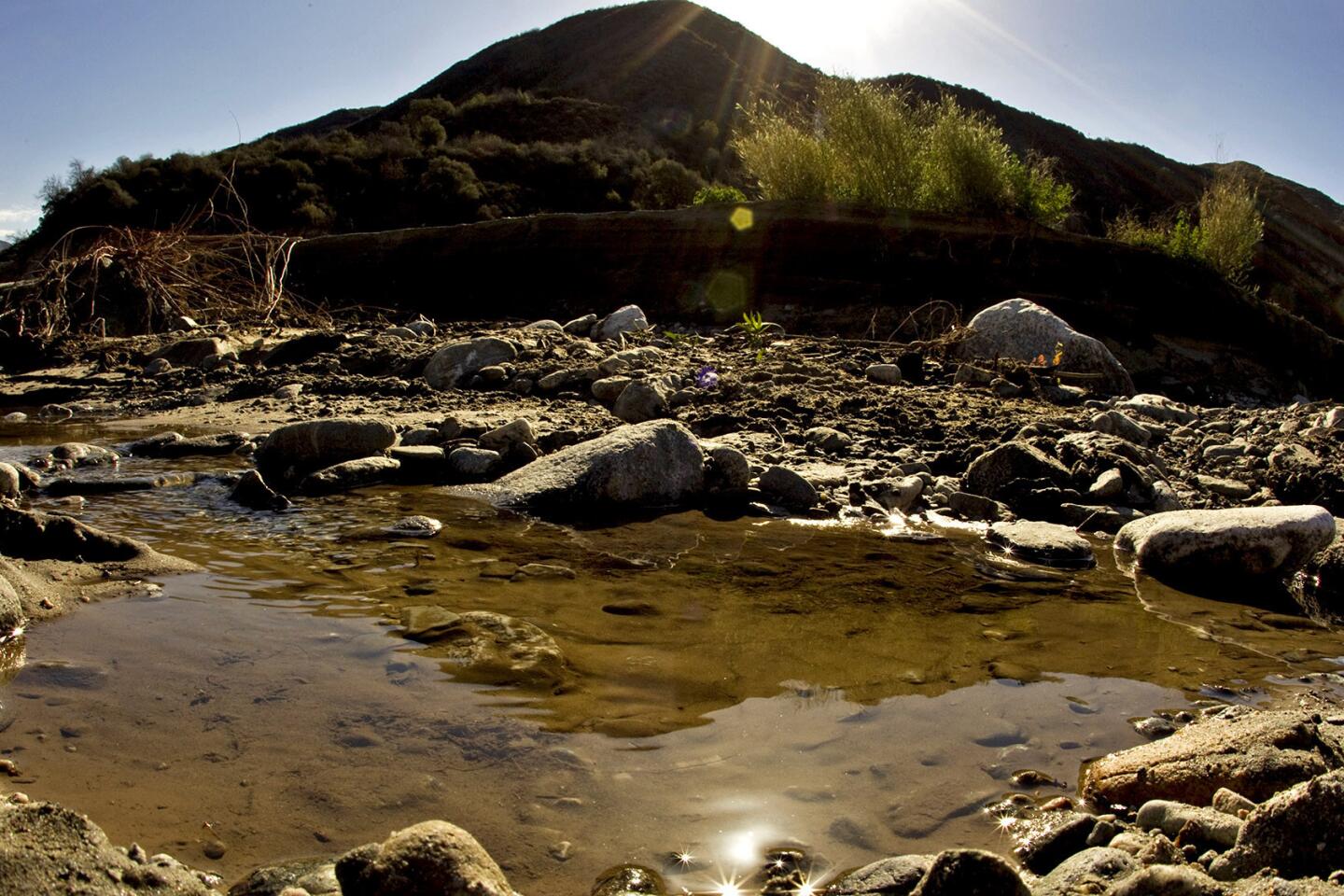
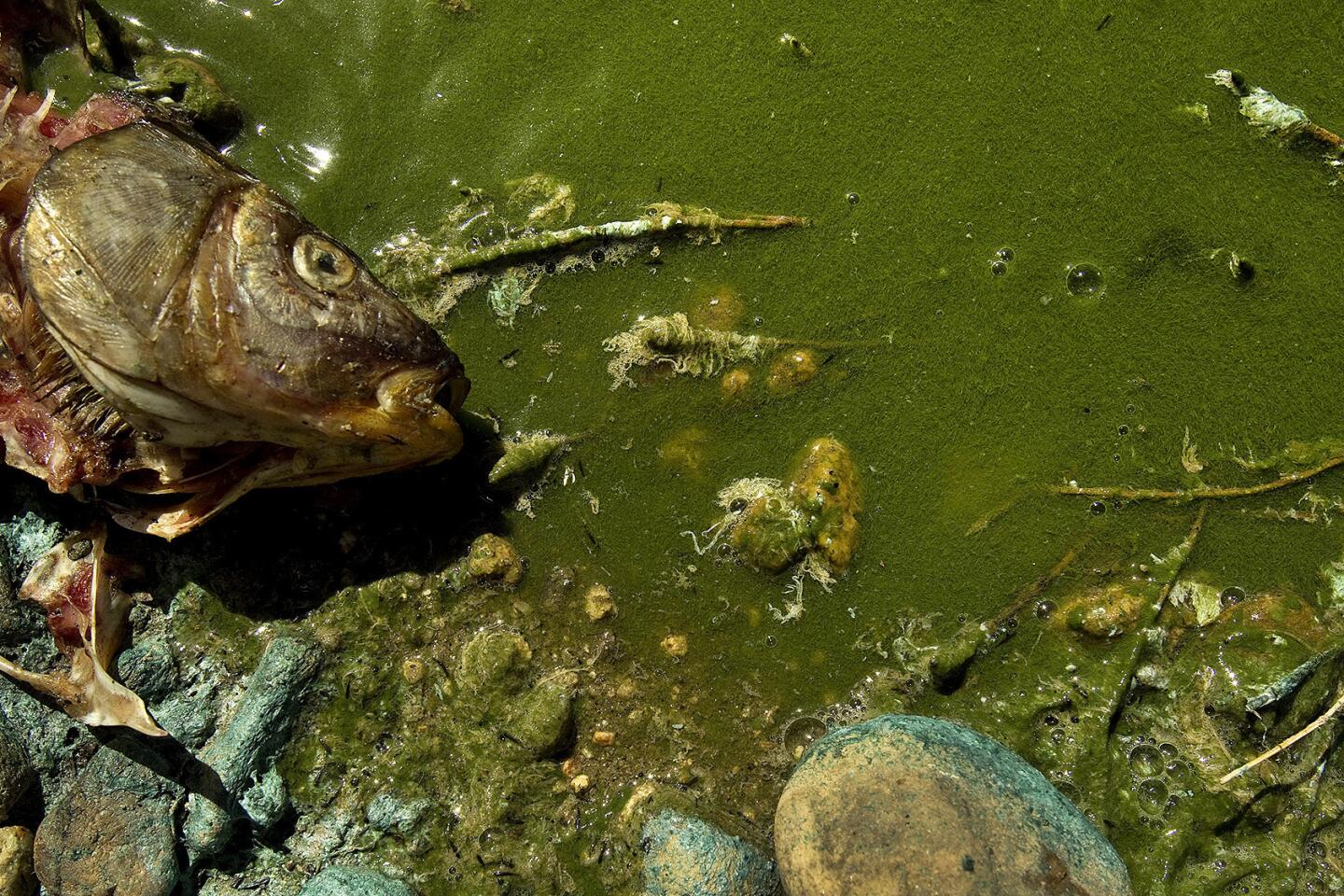
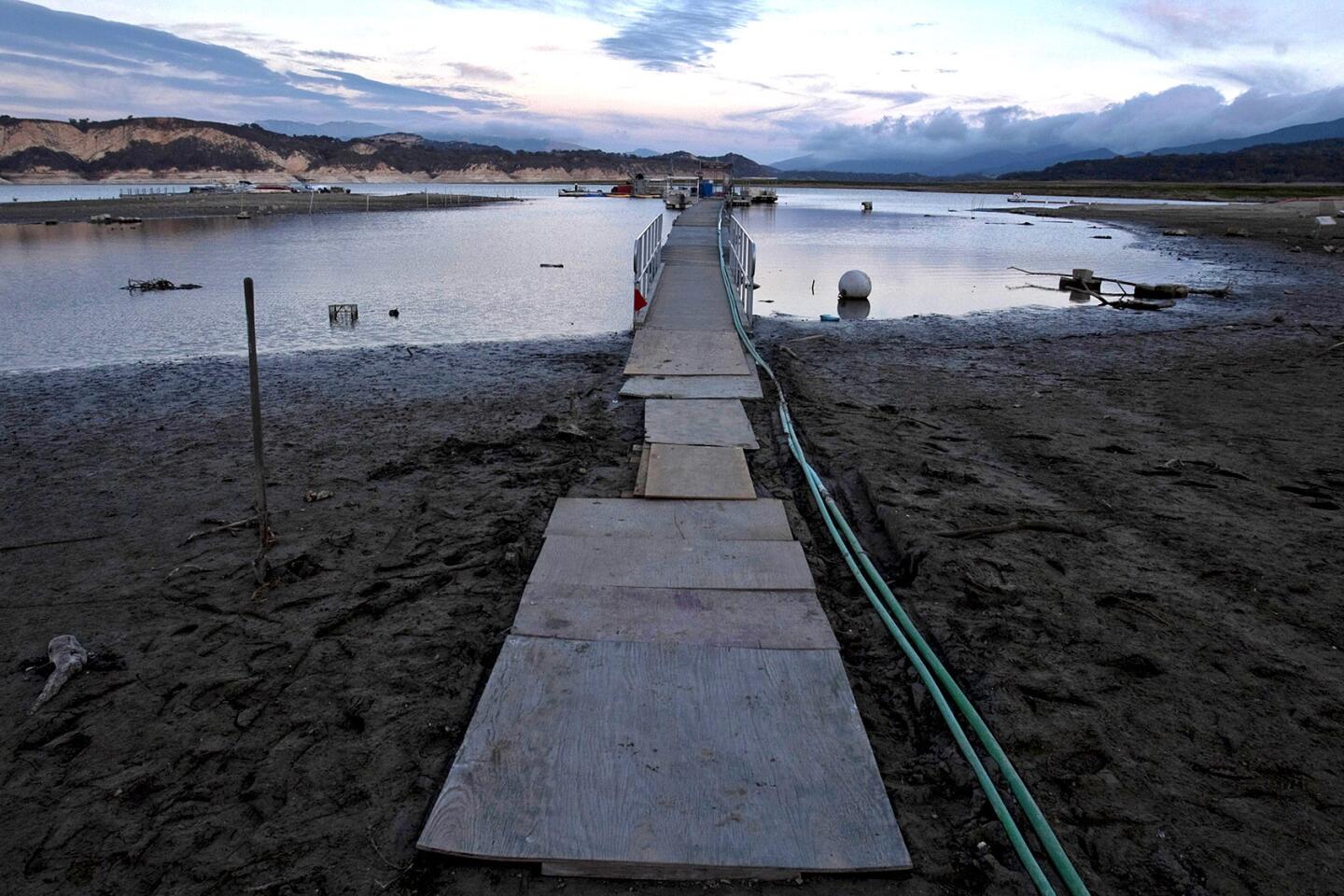
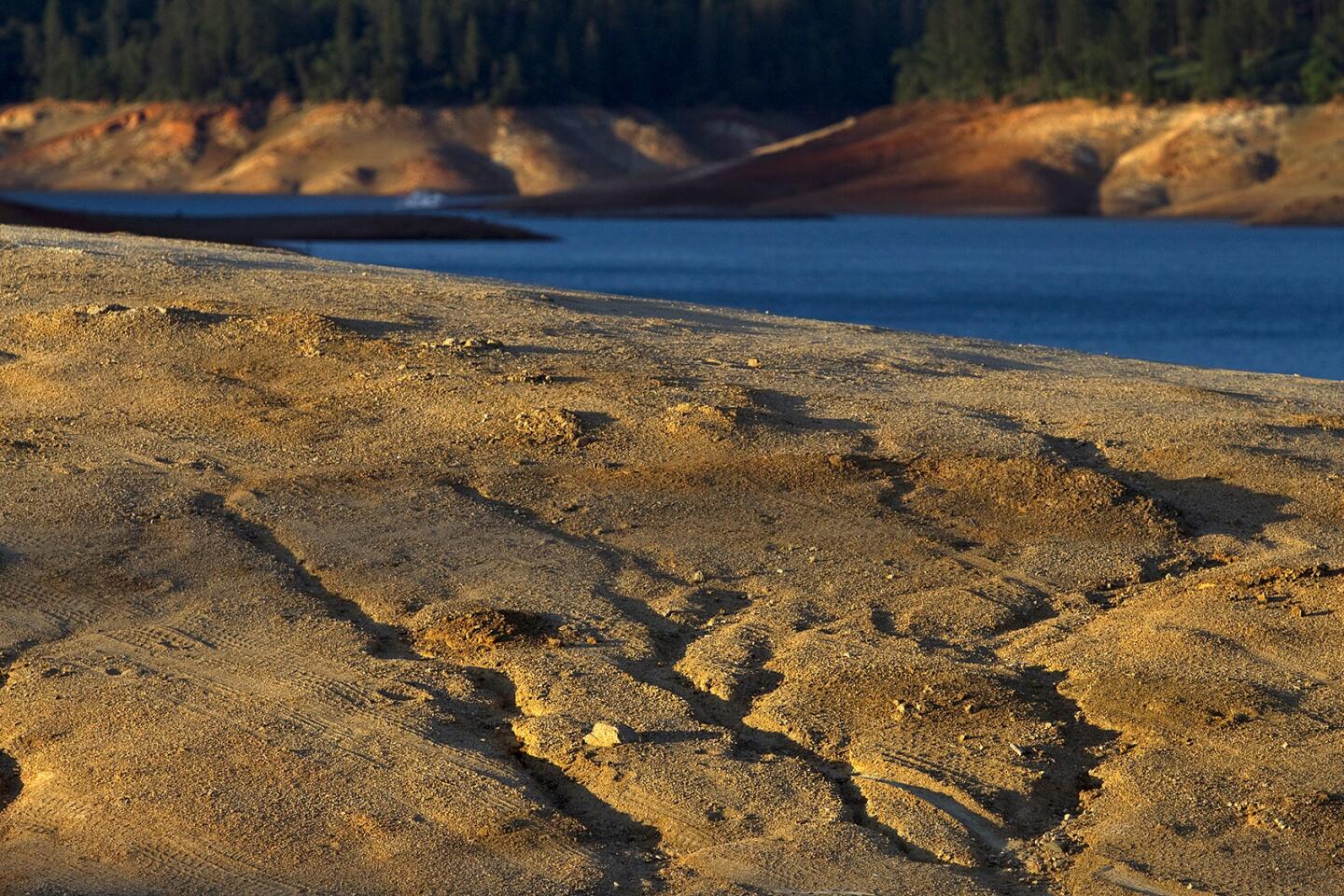
Dry ruts in a island reveal where the water level used to be at Lake Shasta due to serious drought conditions. Lake Shasta is at 31% of capacity due to the ongoing drought and is likely to get worse.
(Allen J. Schaben / Los Angeles Times)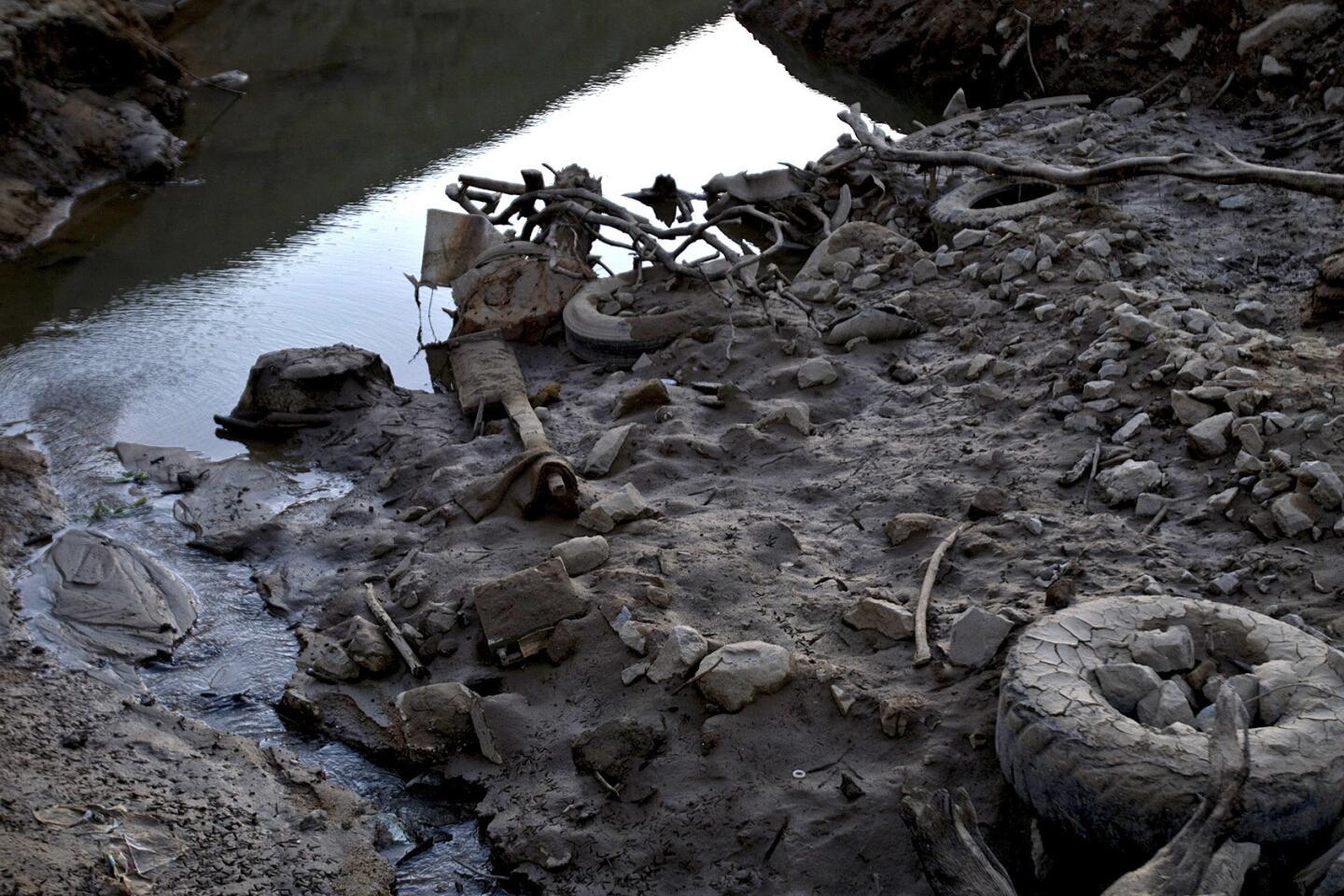
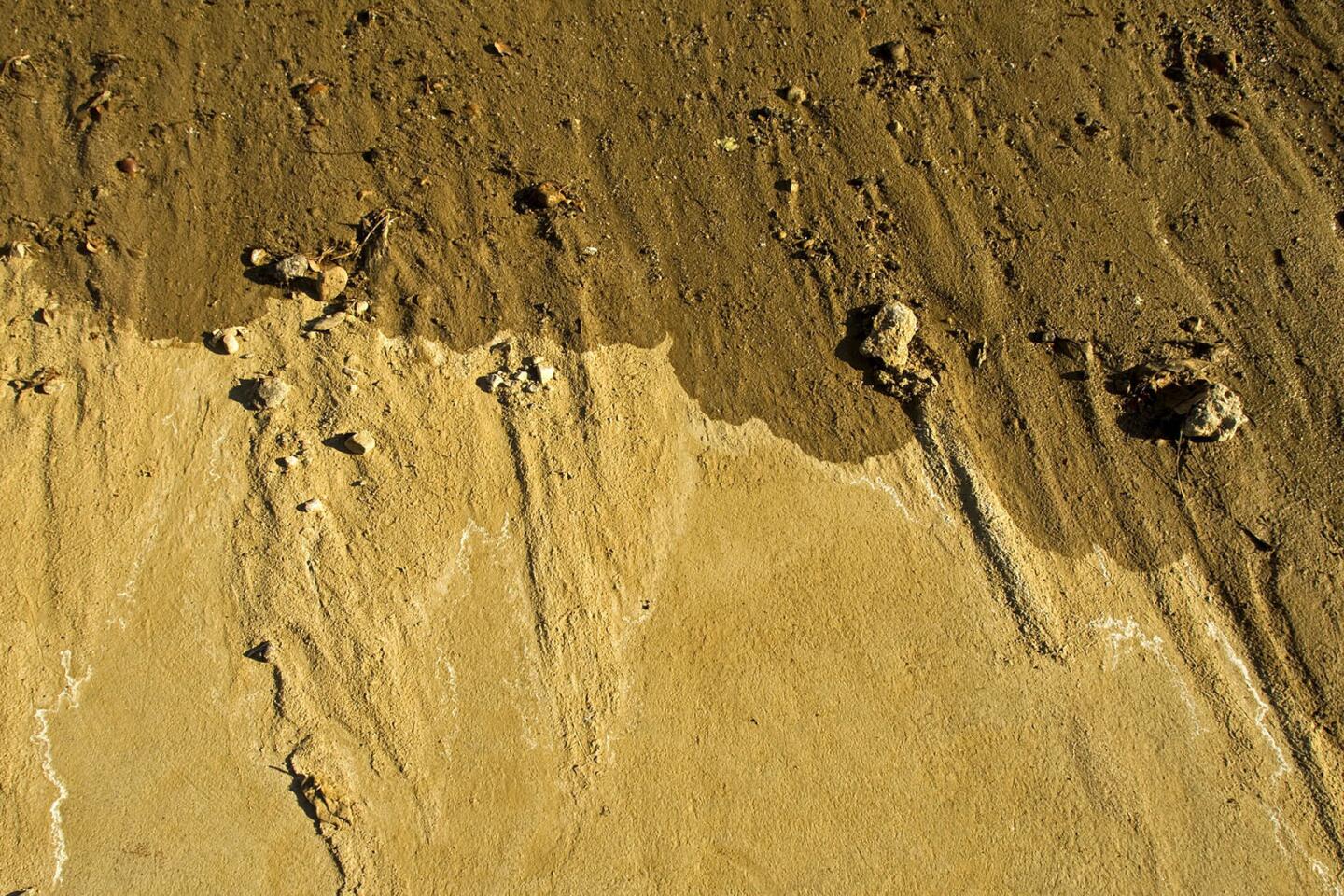
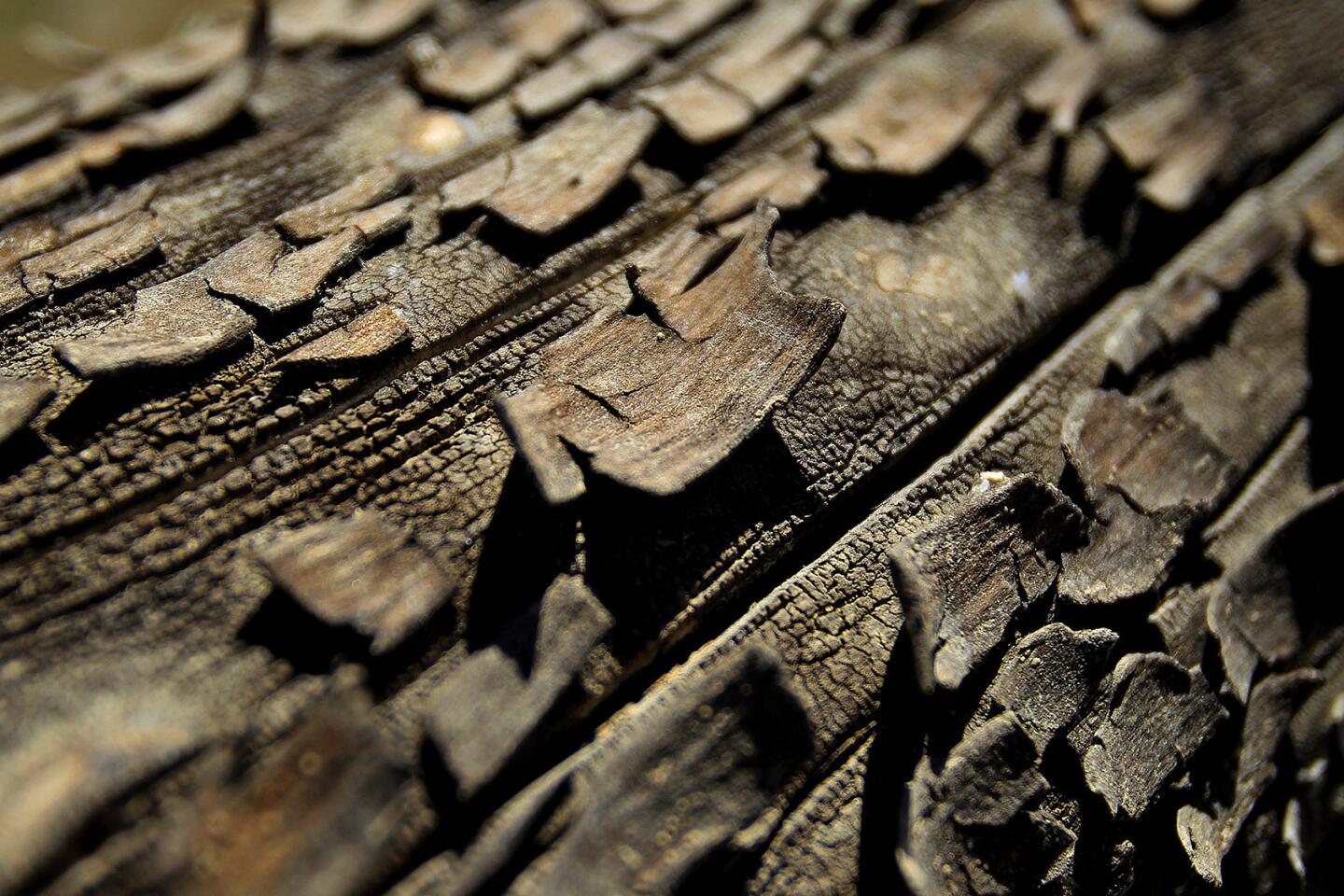
Severe drought conditions are evident as dried bark peels in the hot sun where water levels are down 160 feet from the high water mark at Lake Oroville June 21, 2014. Officials say Lake Oroville is at 43% capacity and likely to get worse, but is not as bad as the drought of 1976-77.
(Allen J. Schaben / Los Angeles Times)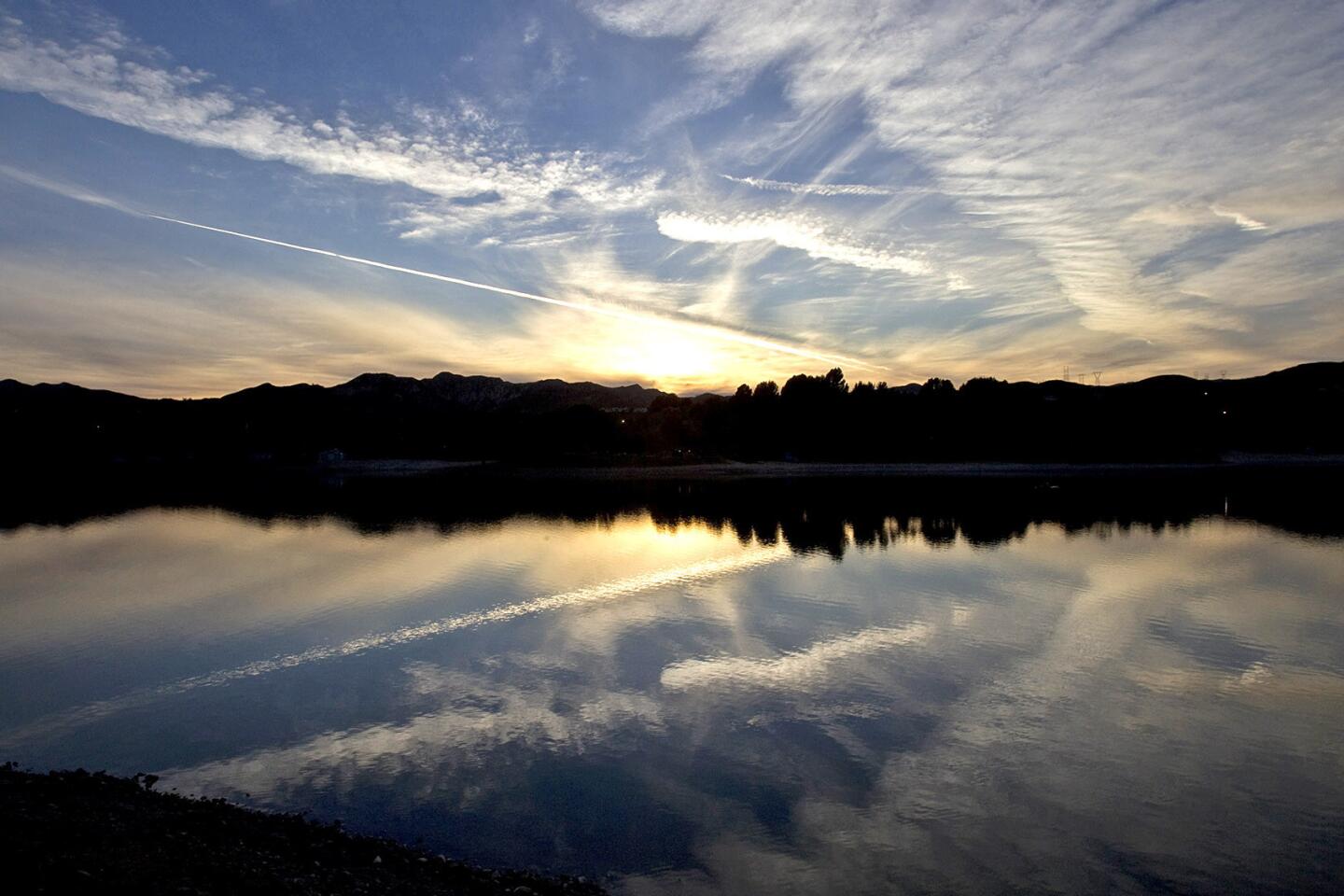
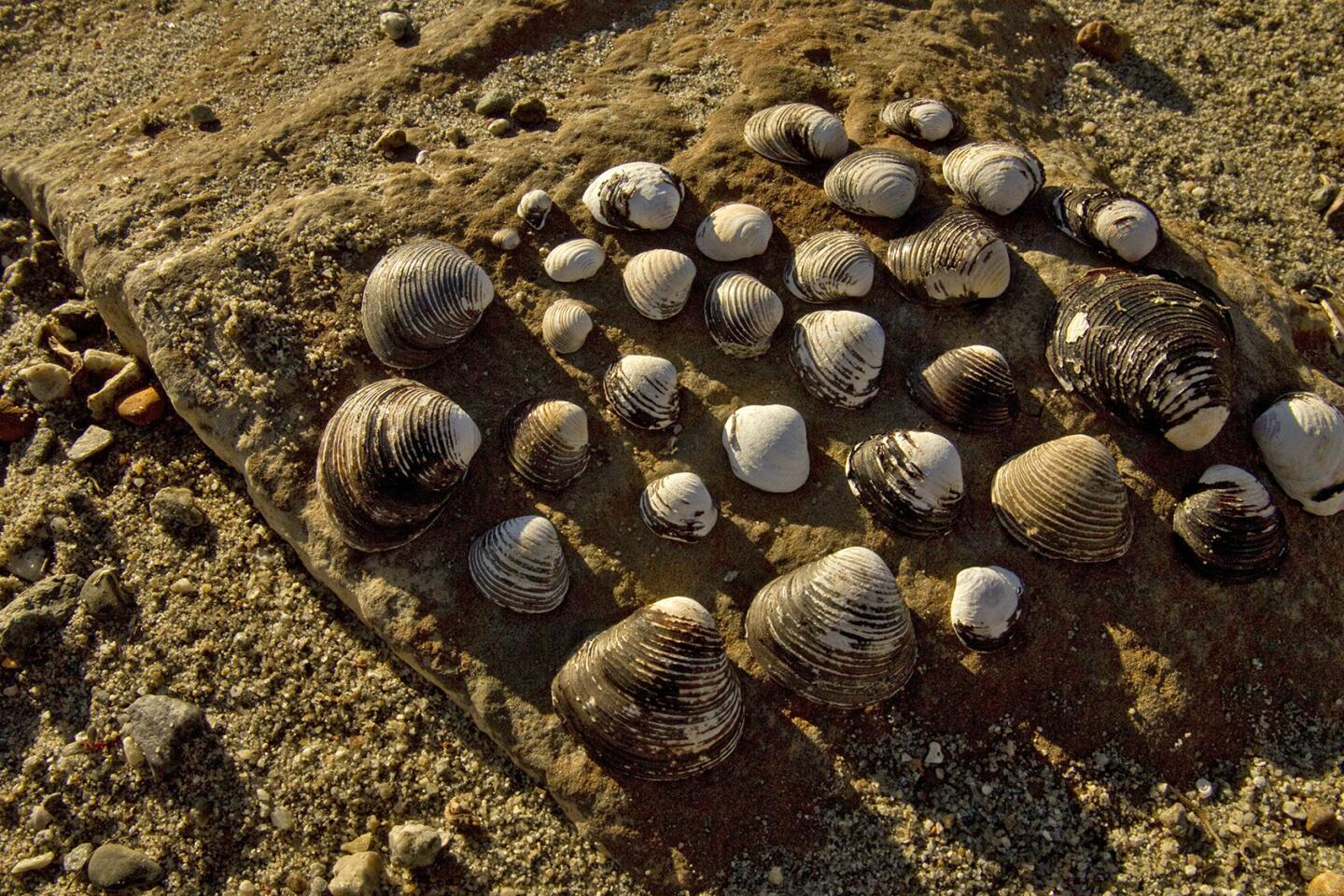
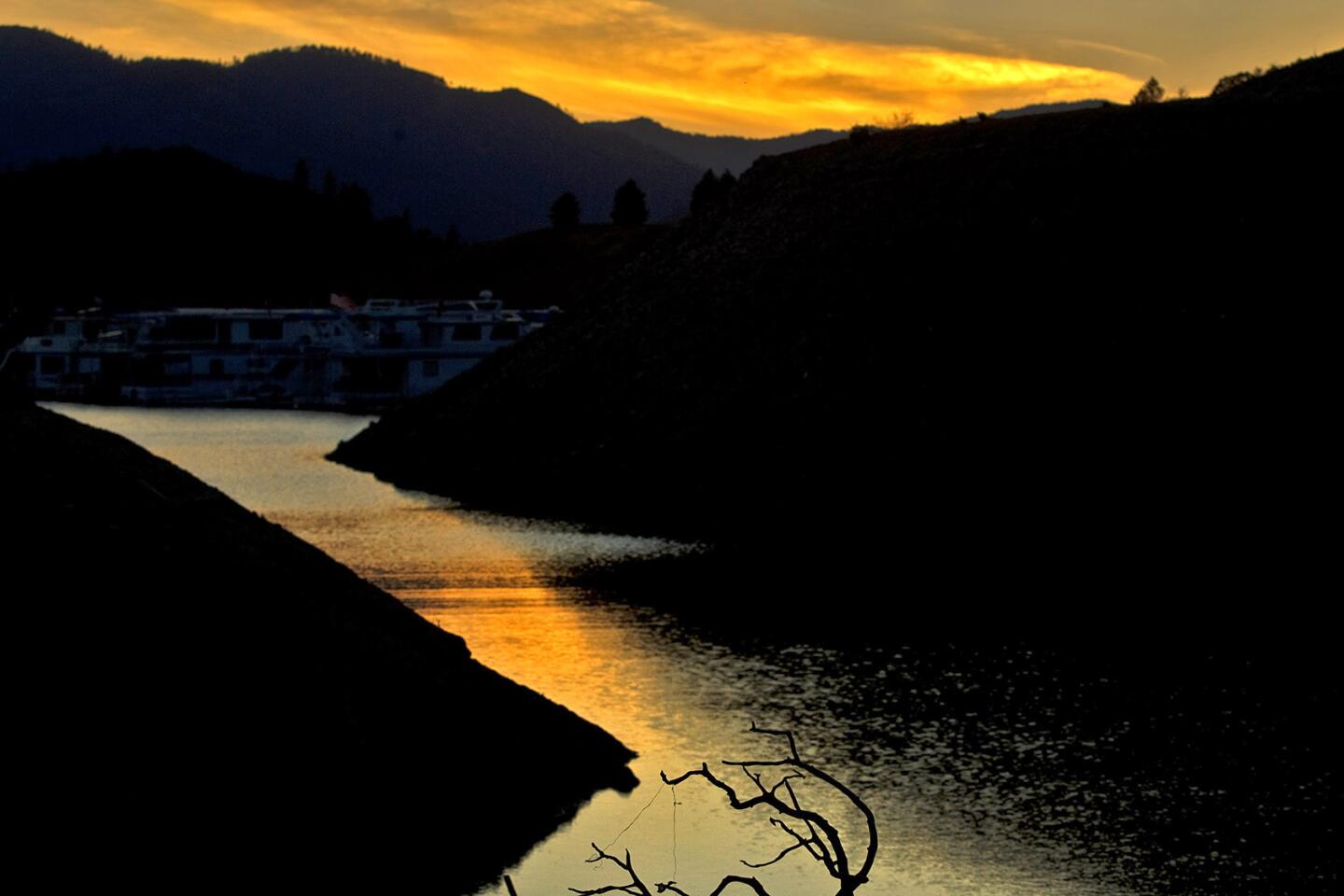
Fallen tree branches and a narrow body of water receding into Lake Shasta at dusk reveal signs of serious drought conditions June 22, 2014. Lake Shasta is at 37% of capacity due to the ongoing drought and is likely to get worse.
(Allen J. Schaben / Los Angeles Times)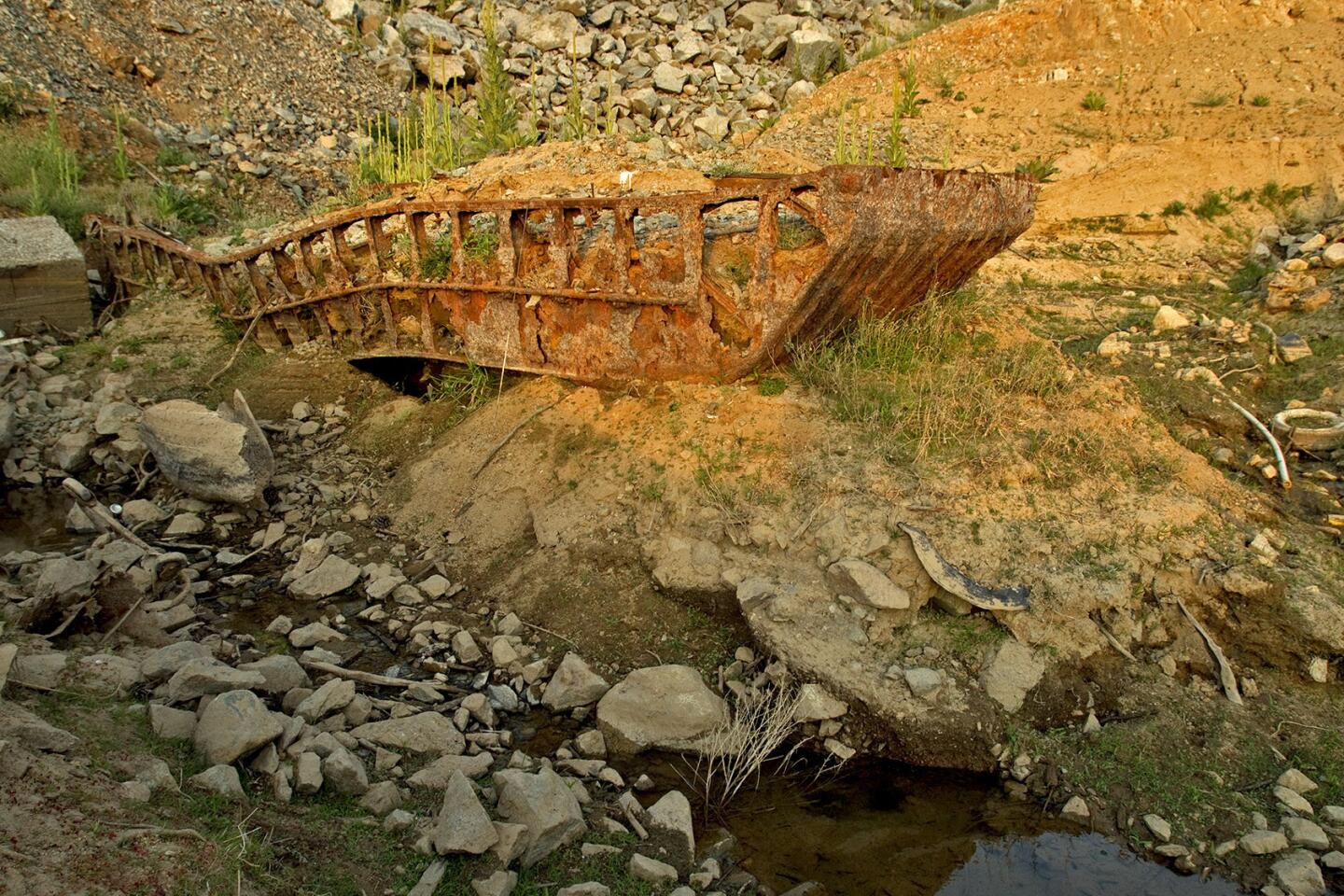
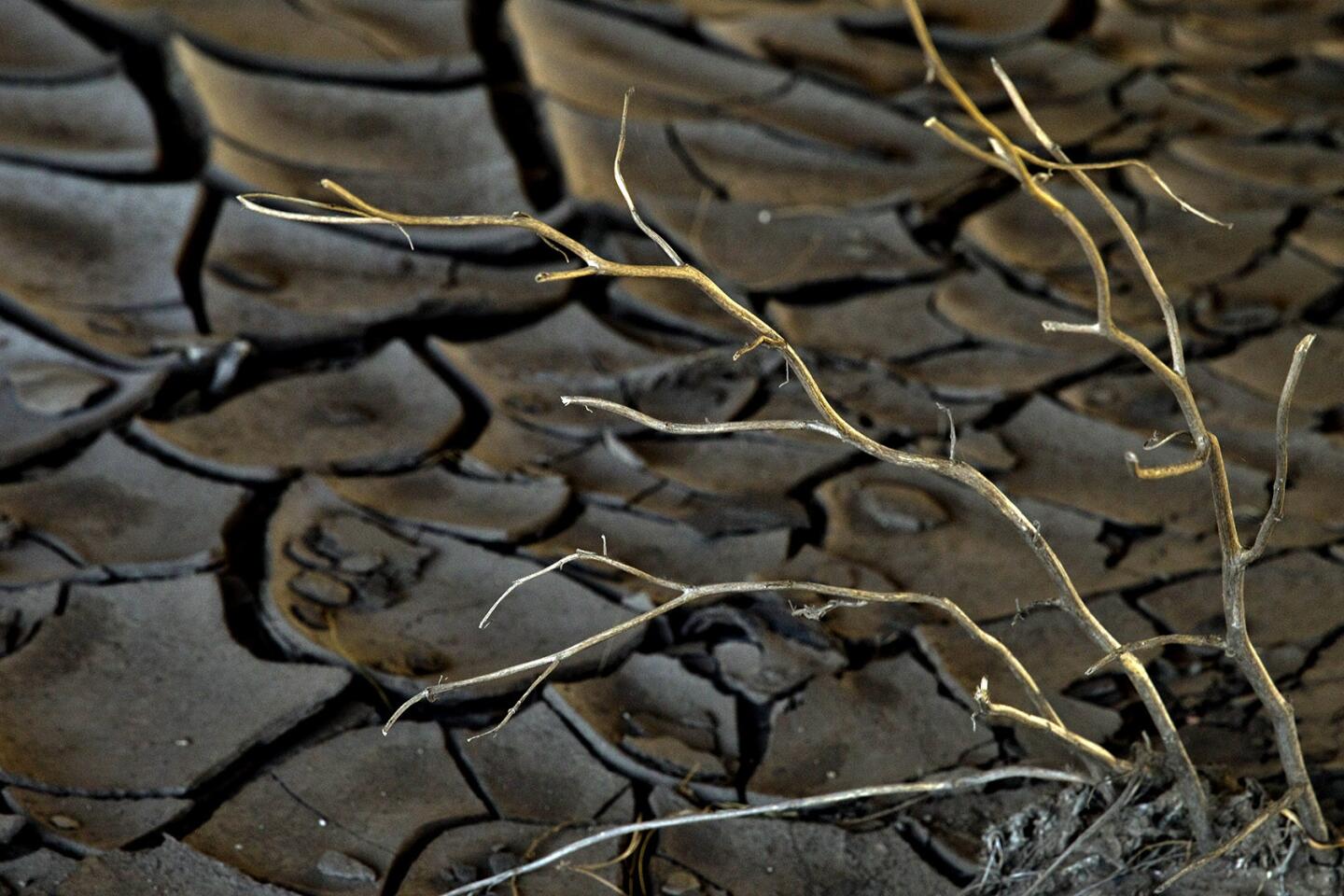
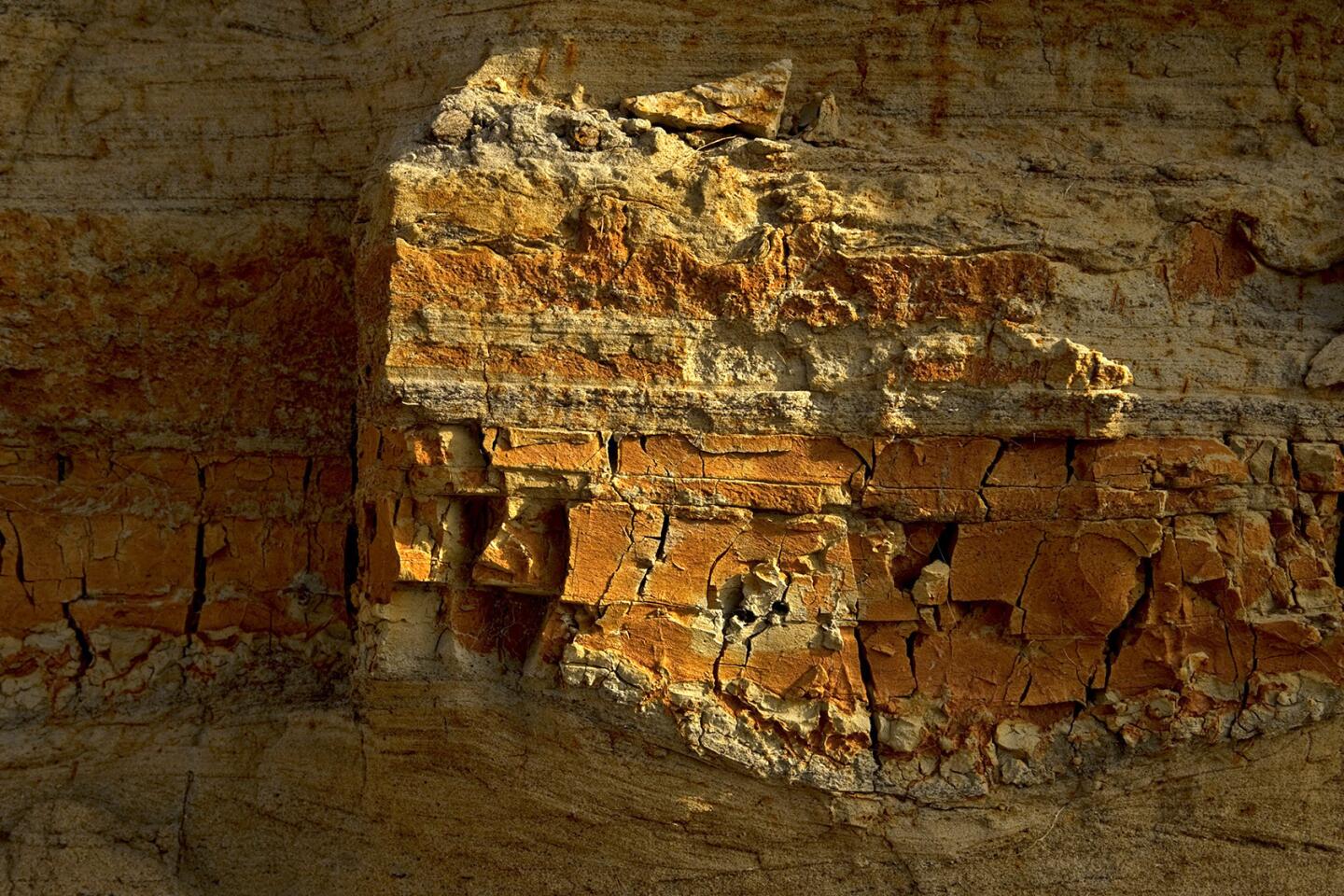
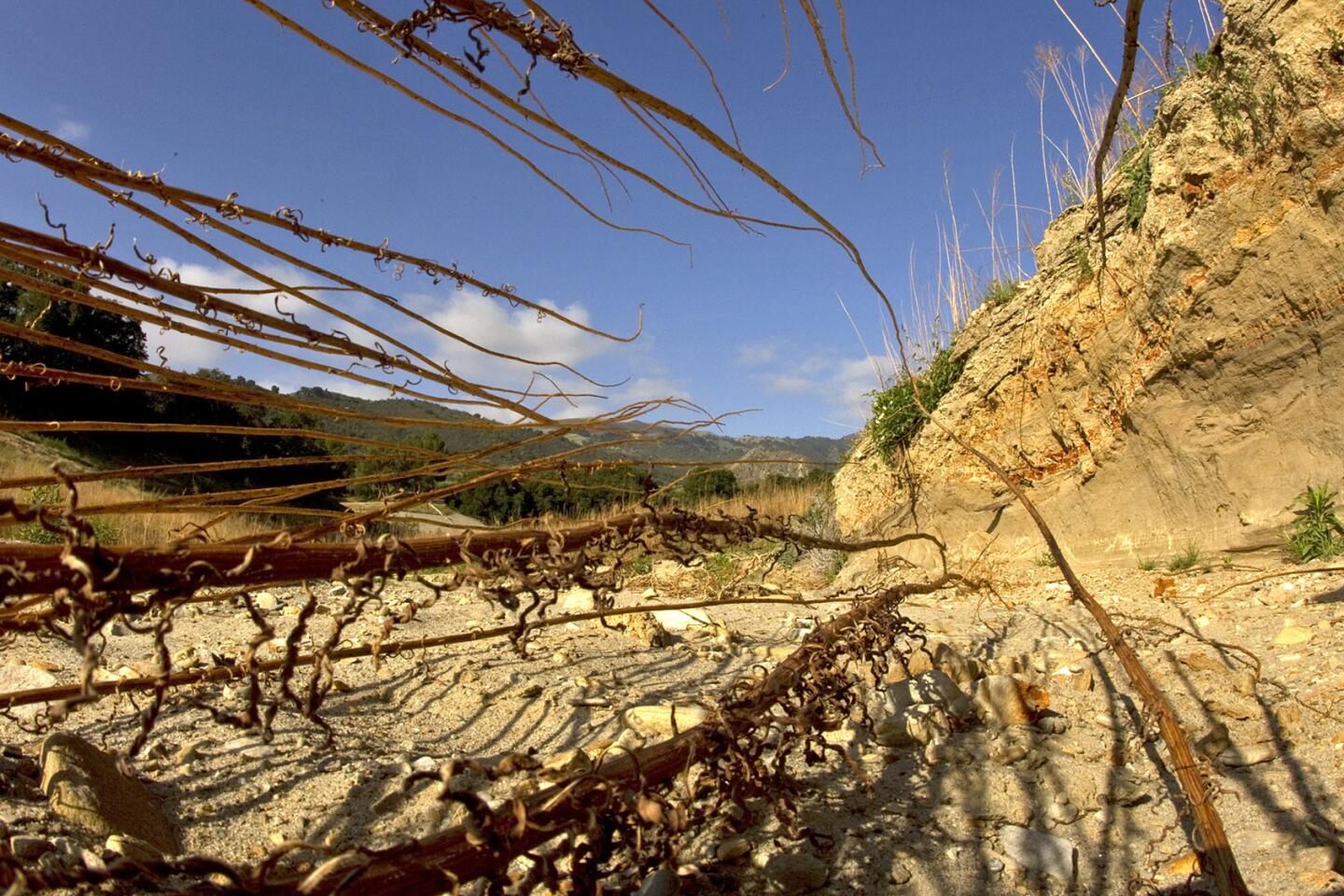
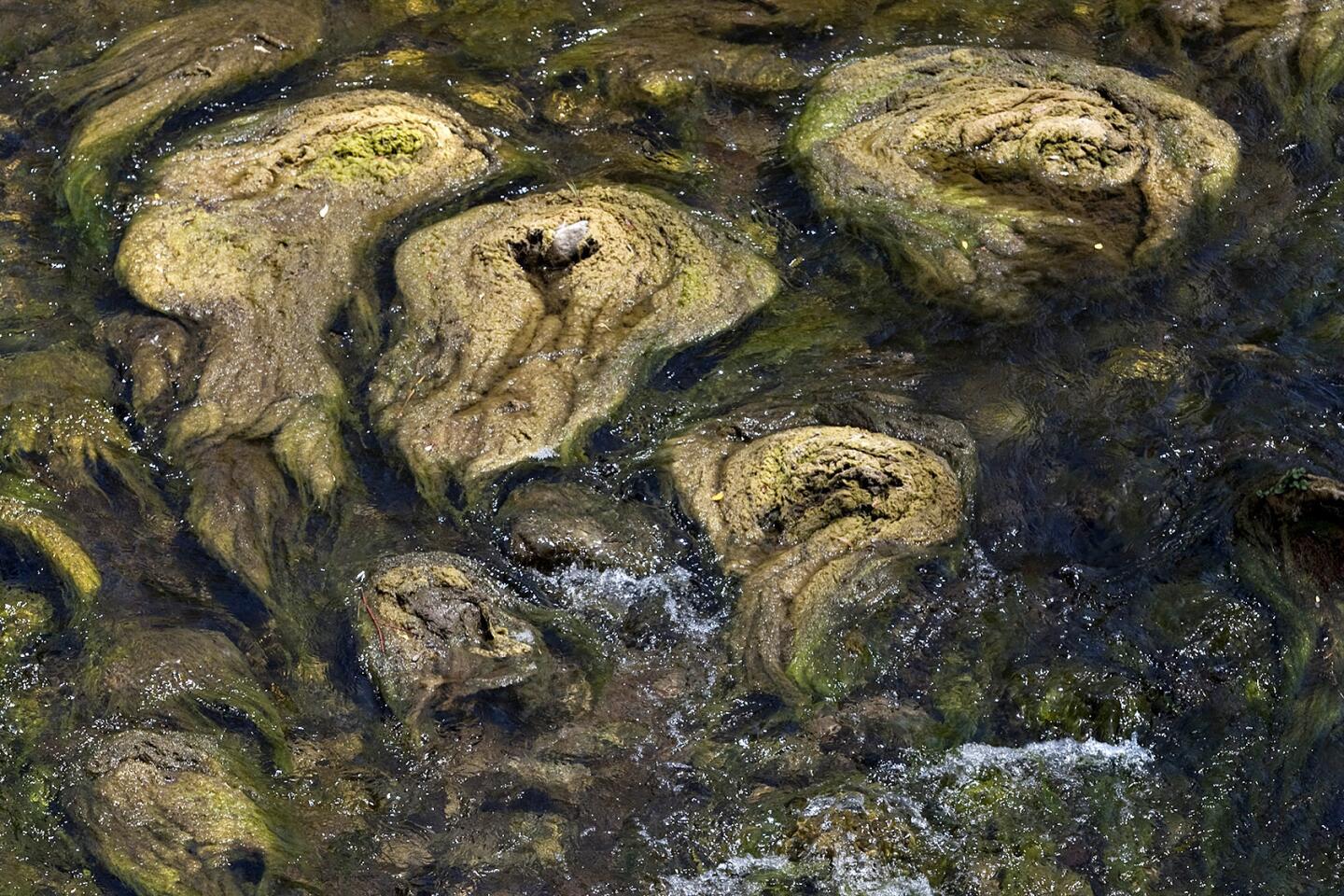
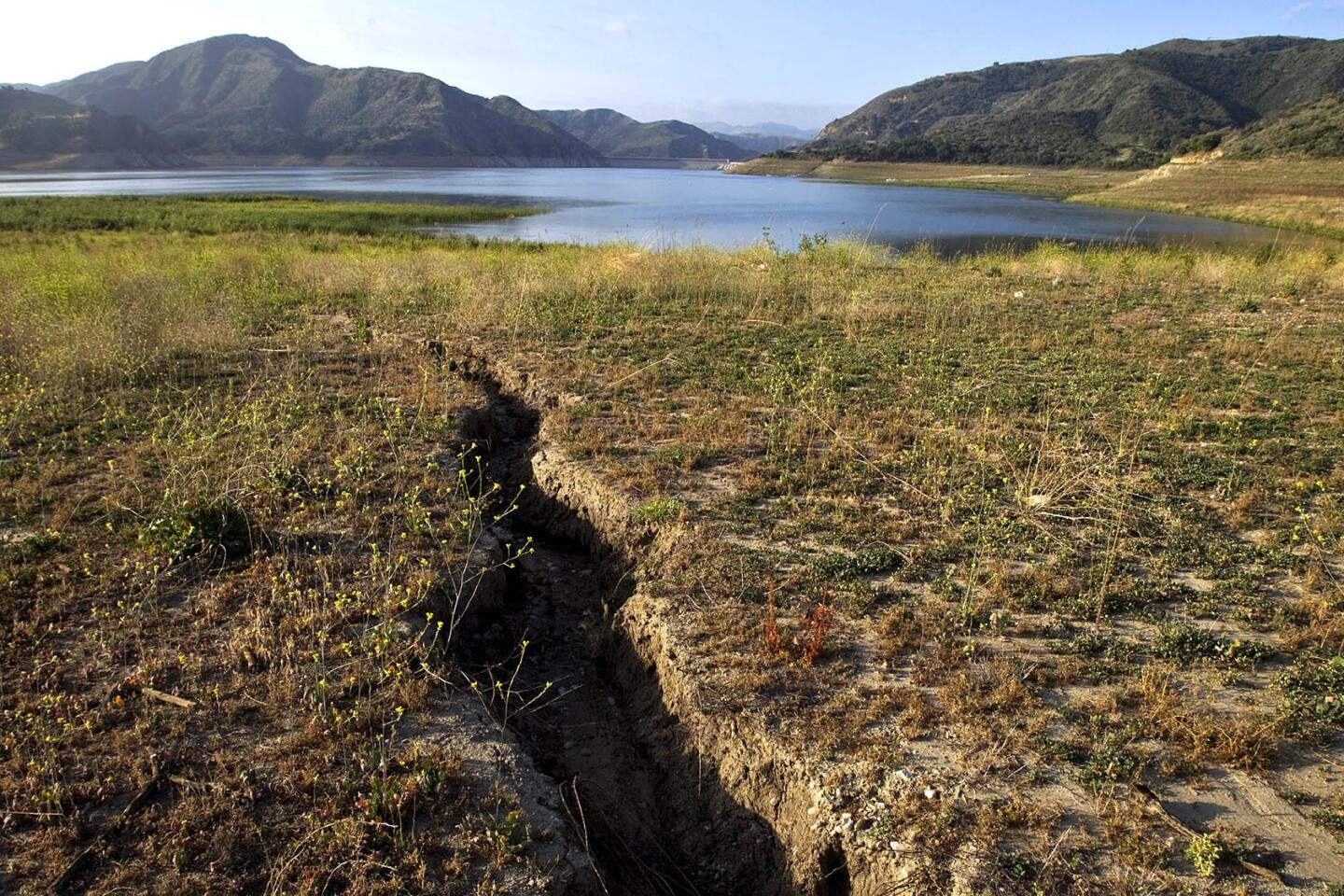
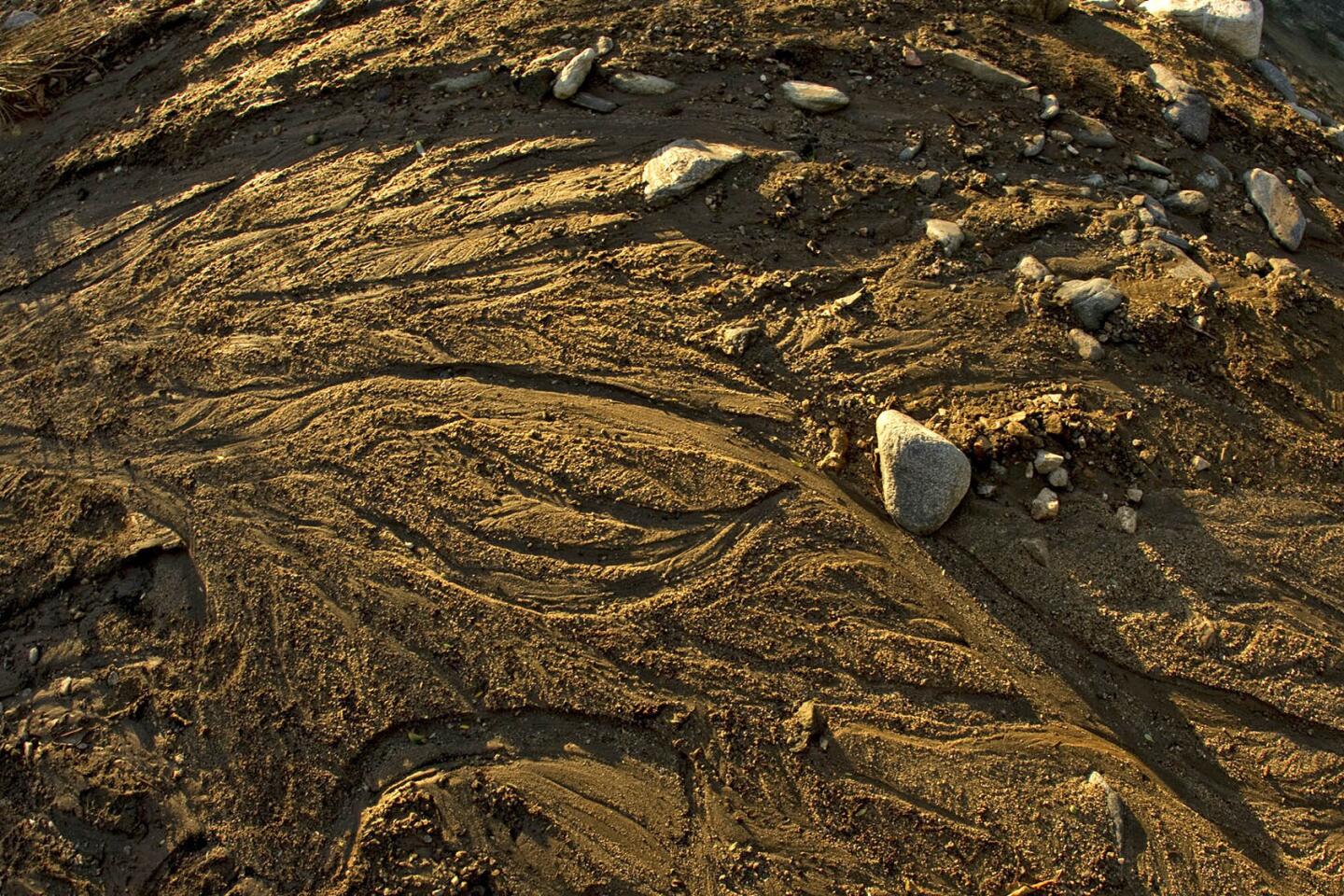
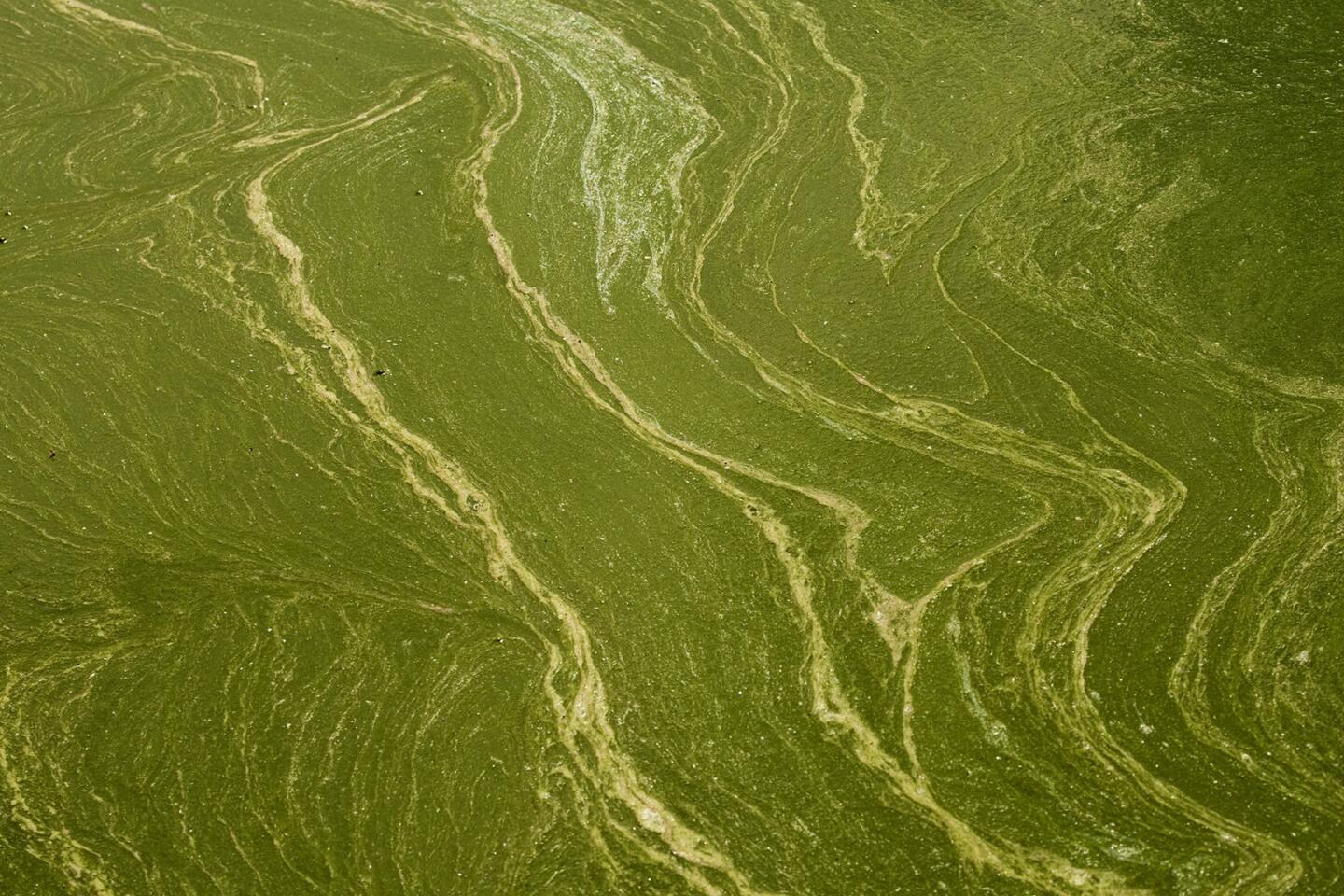
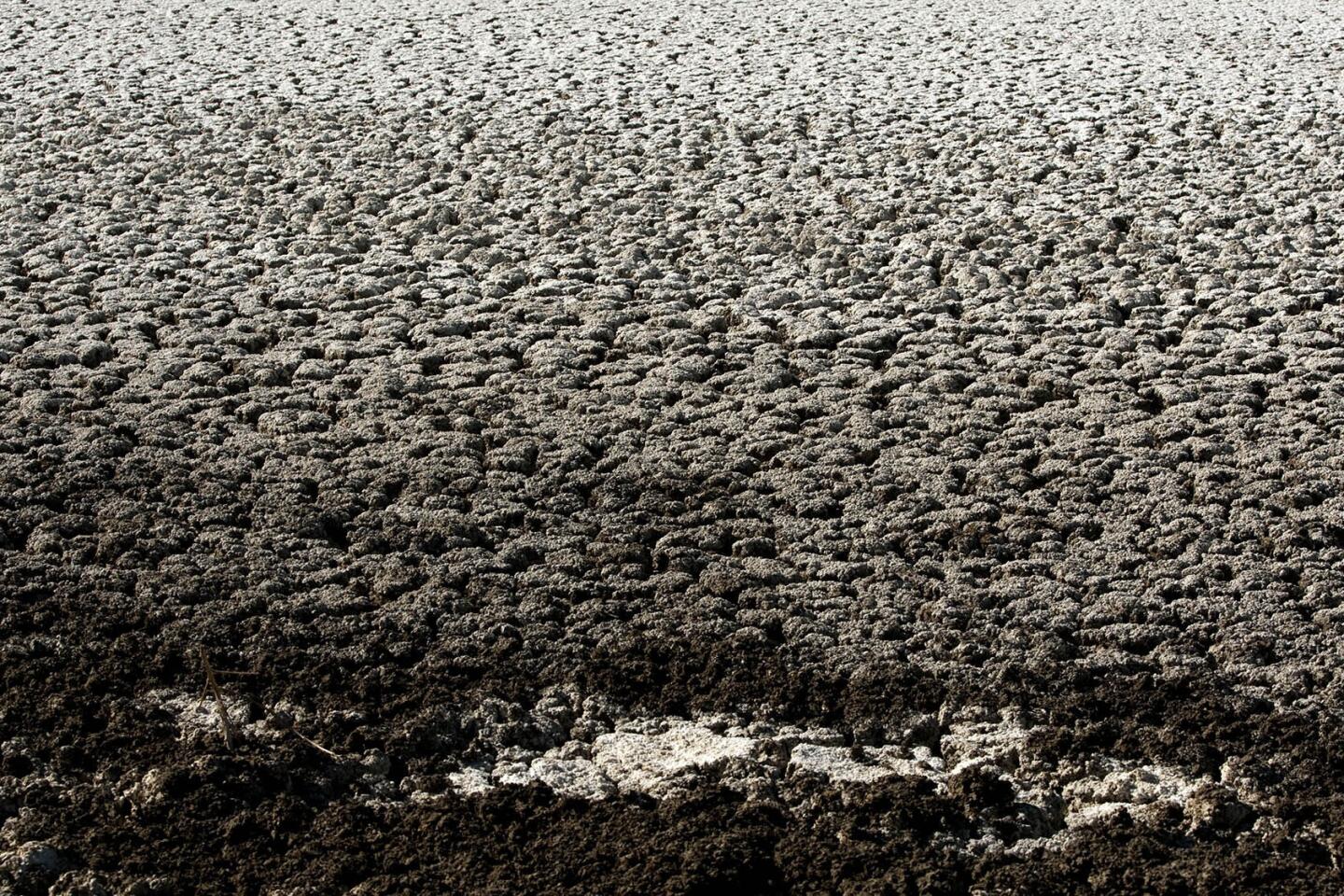
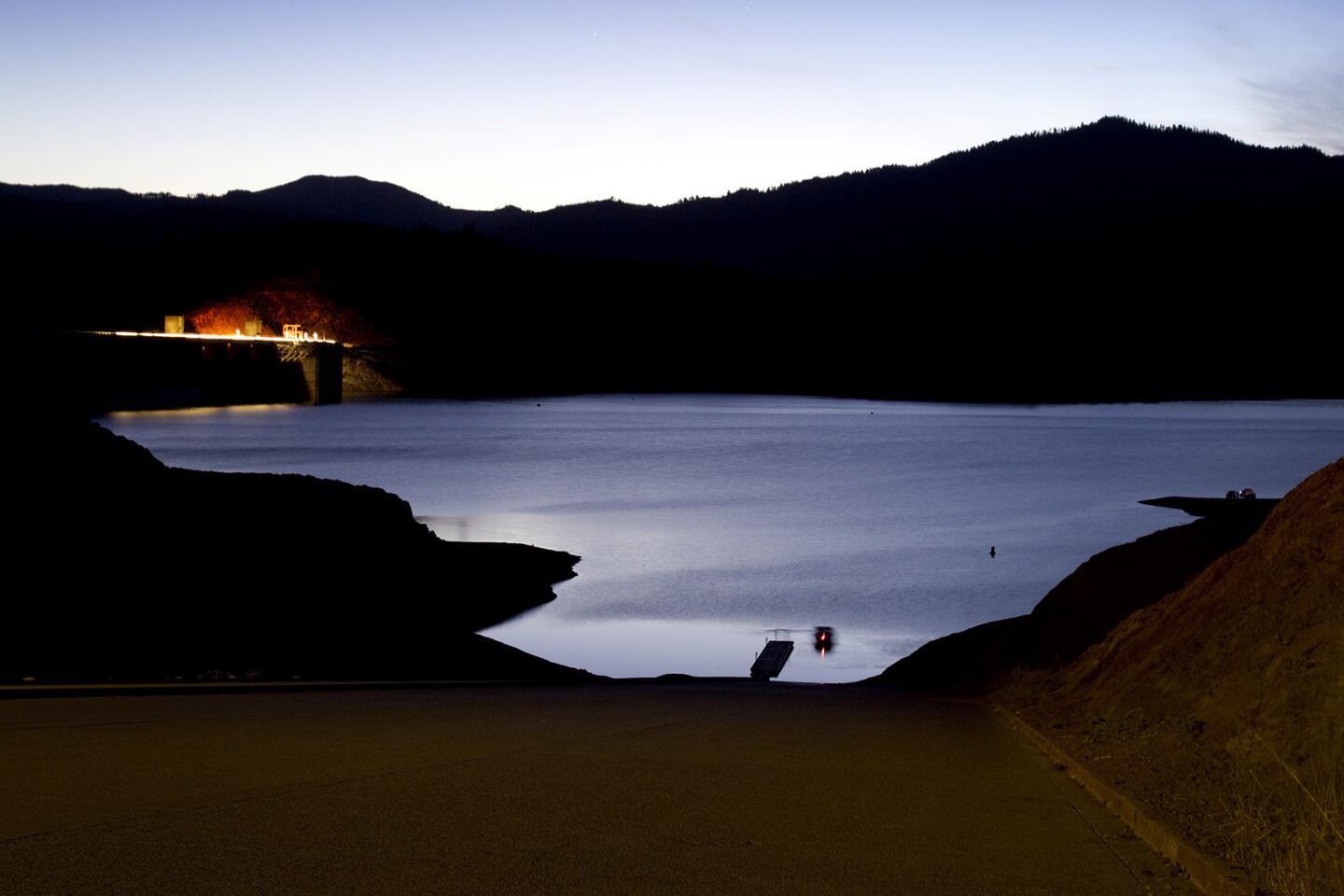
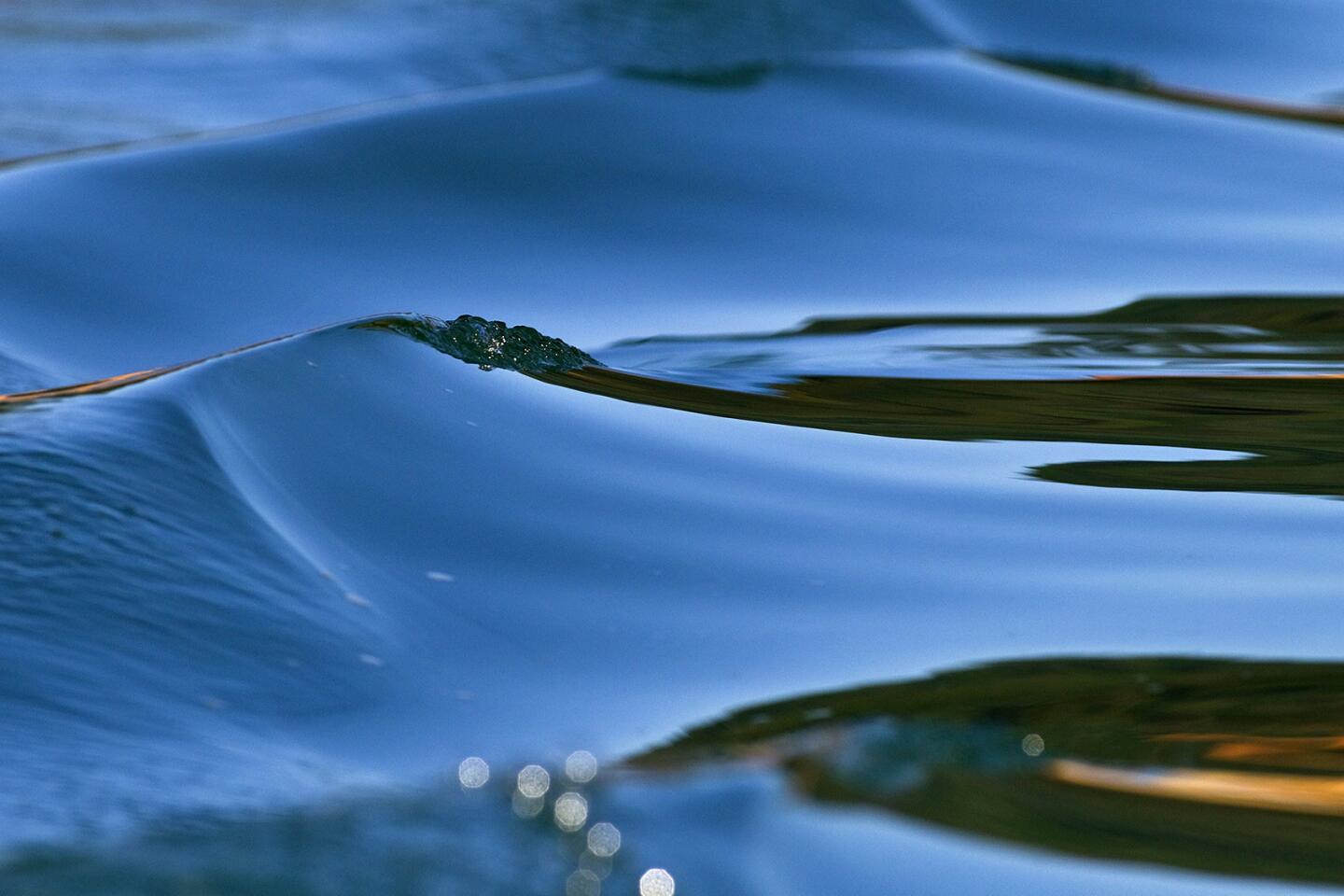
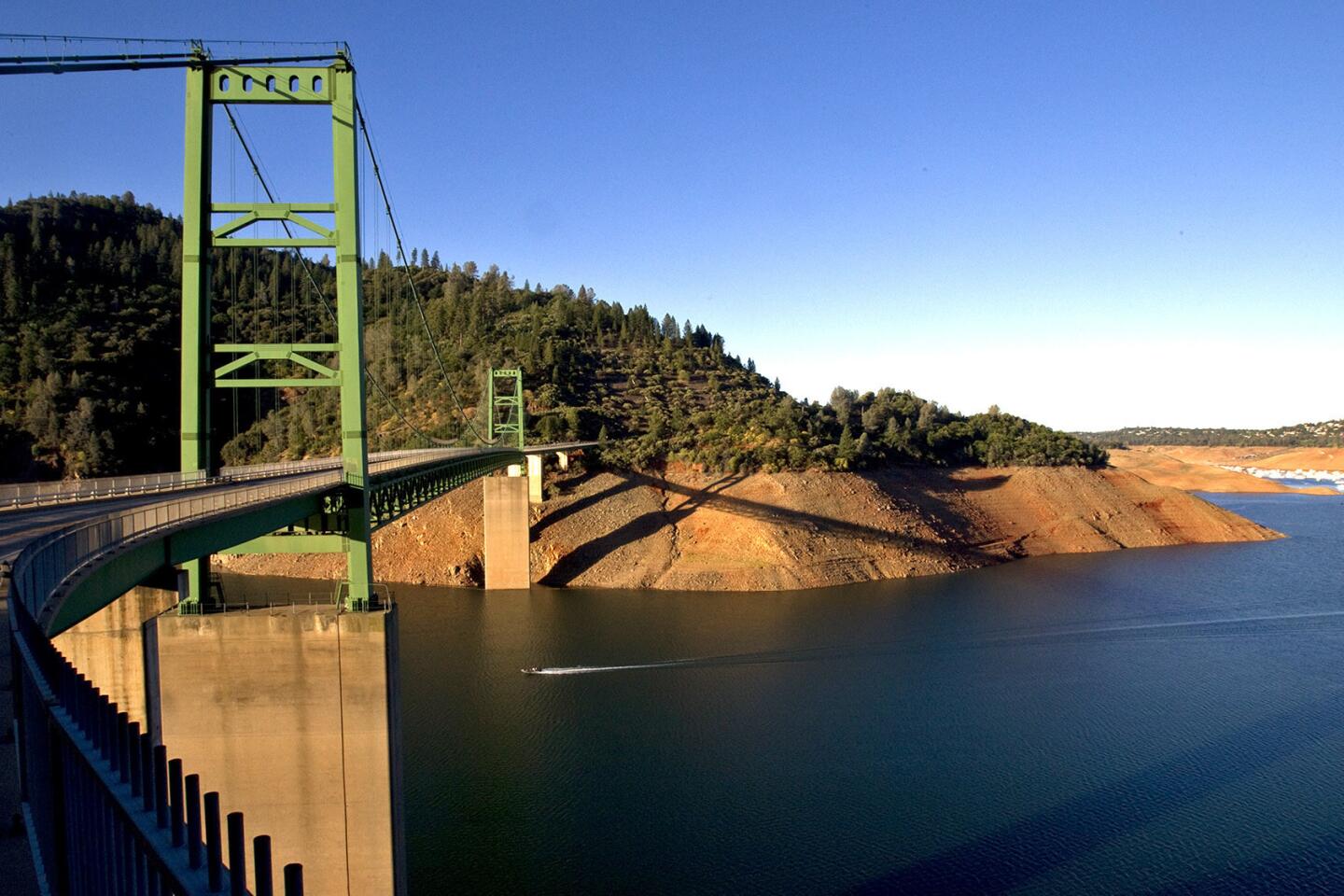
A boater speeds under the New Bidwell Bar Suspension Bridge as severe drought conditions show the water down 160 feet from the high water mark at Lake Oroville on June 21, 2014. Officials say Lake Oroville is at 43% capacity and is likely to get worse, but is not as bad as the drought of 1976-77.
(Allen J. Schaben / Los Angeles Times)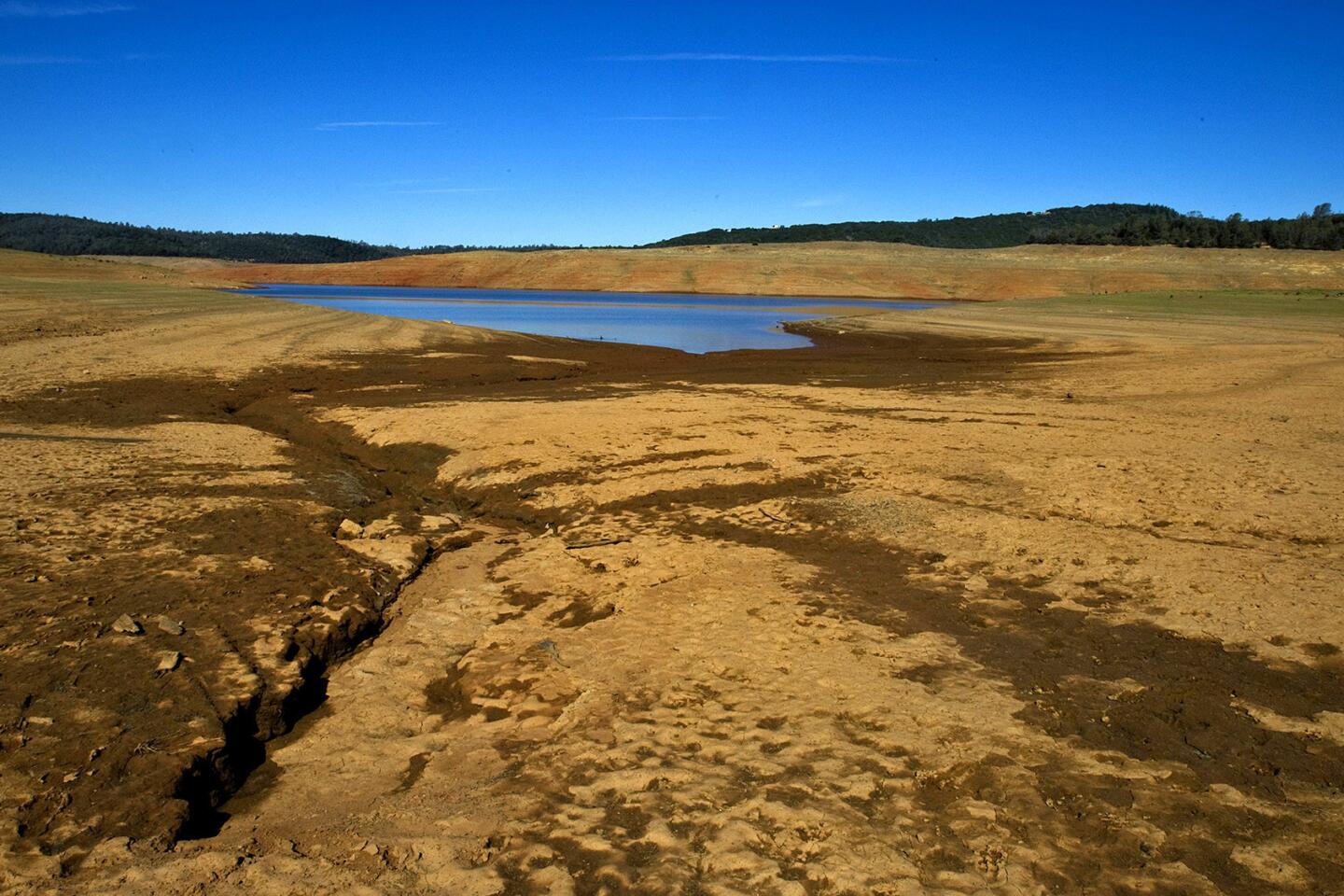
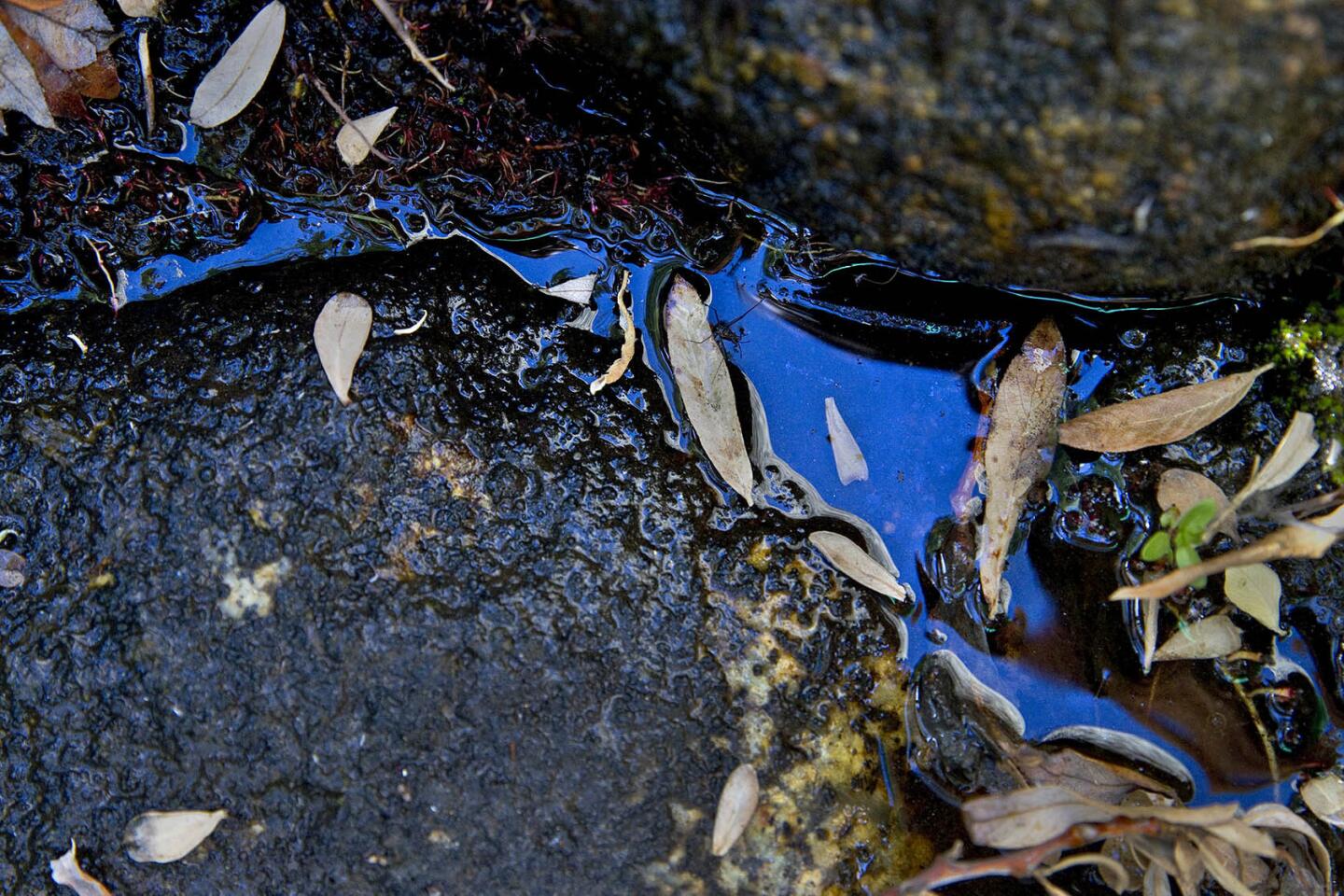
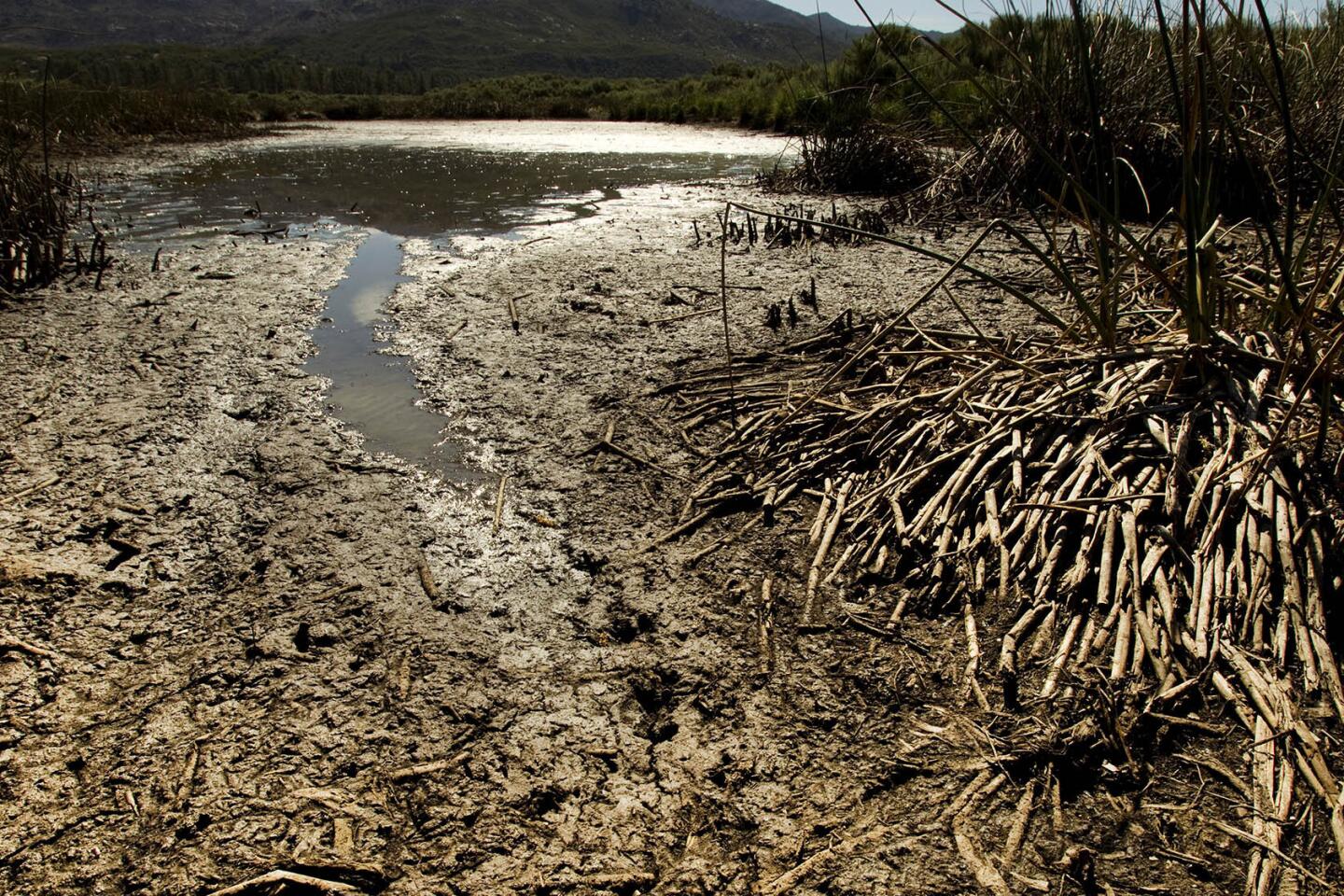
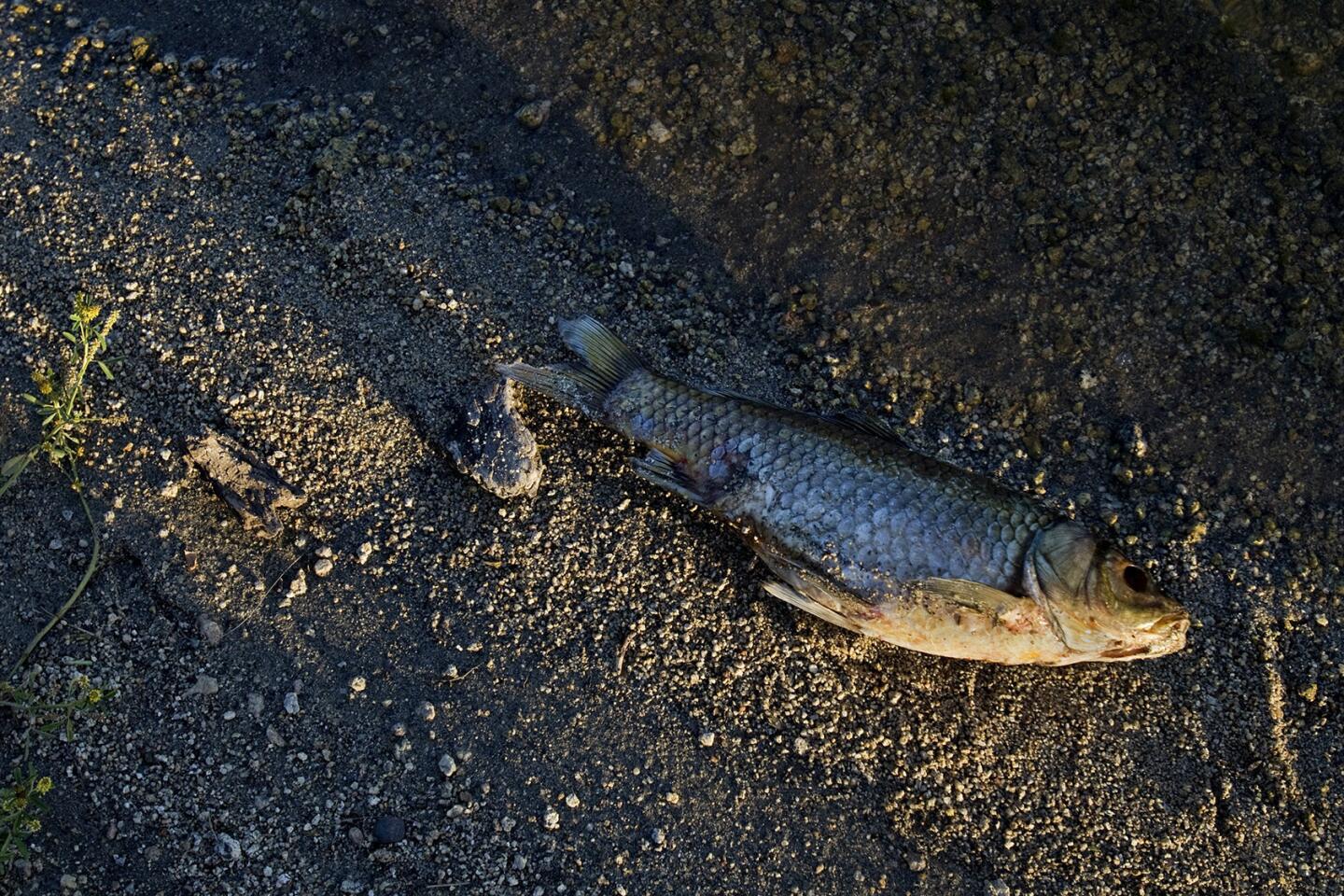
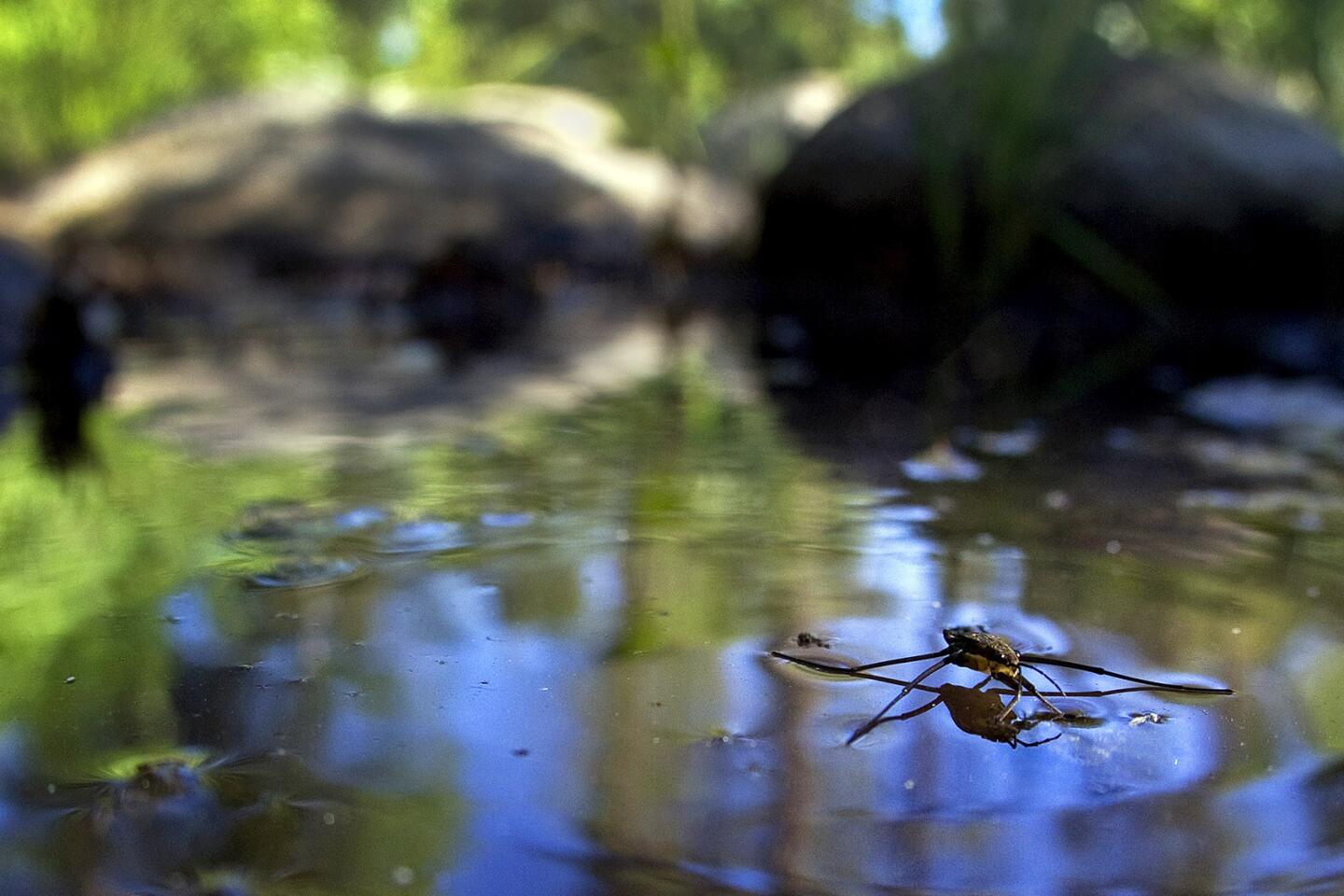
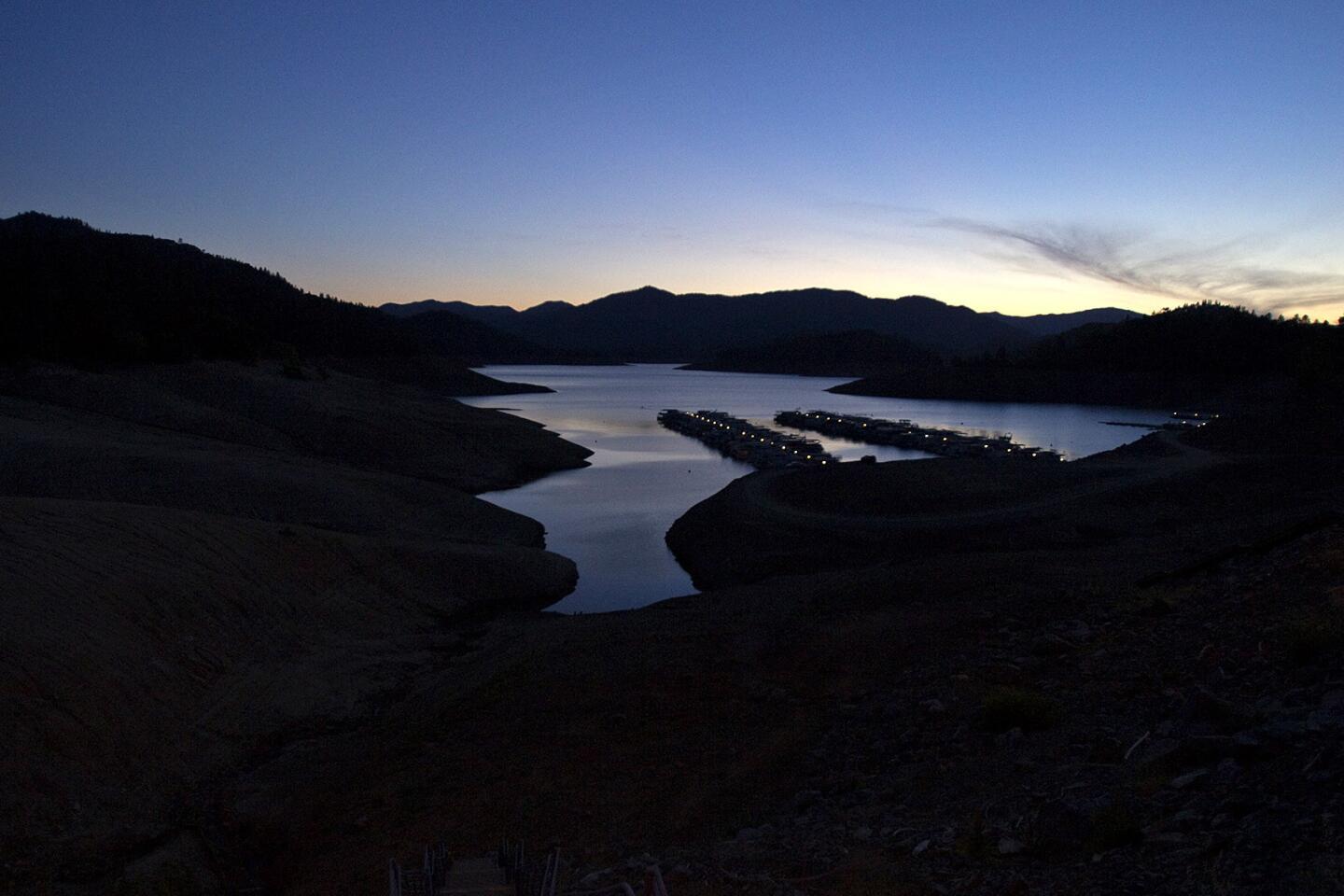
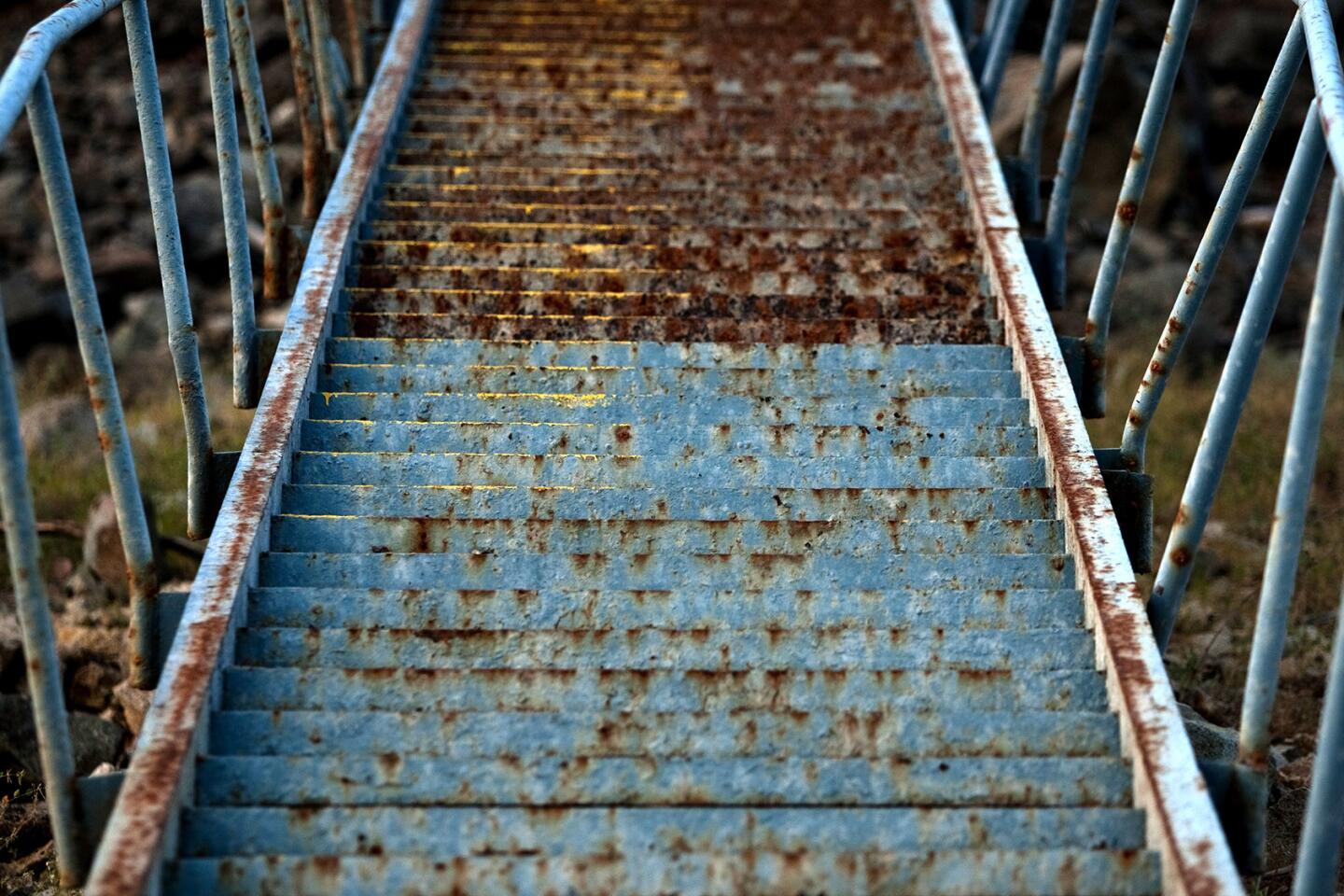
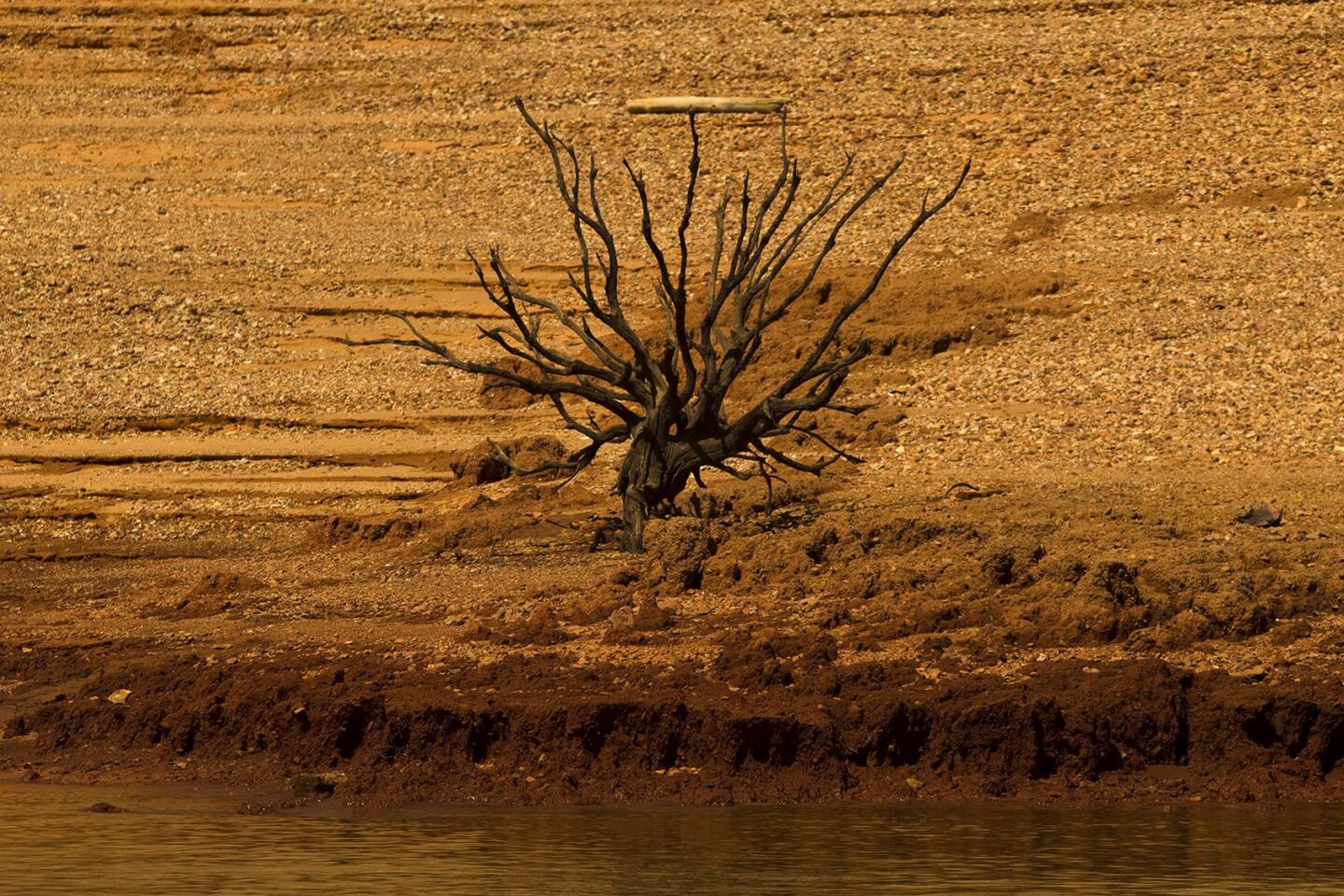
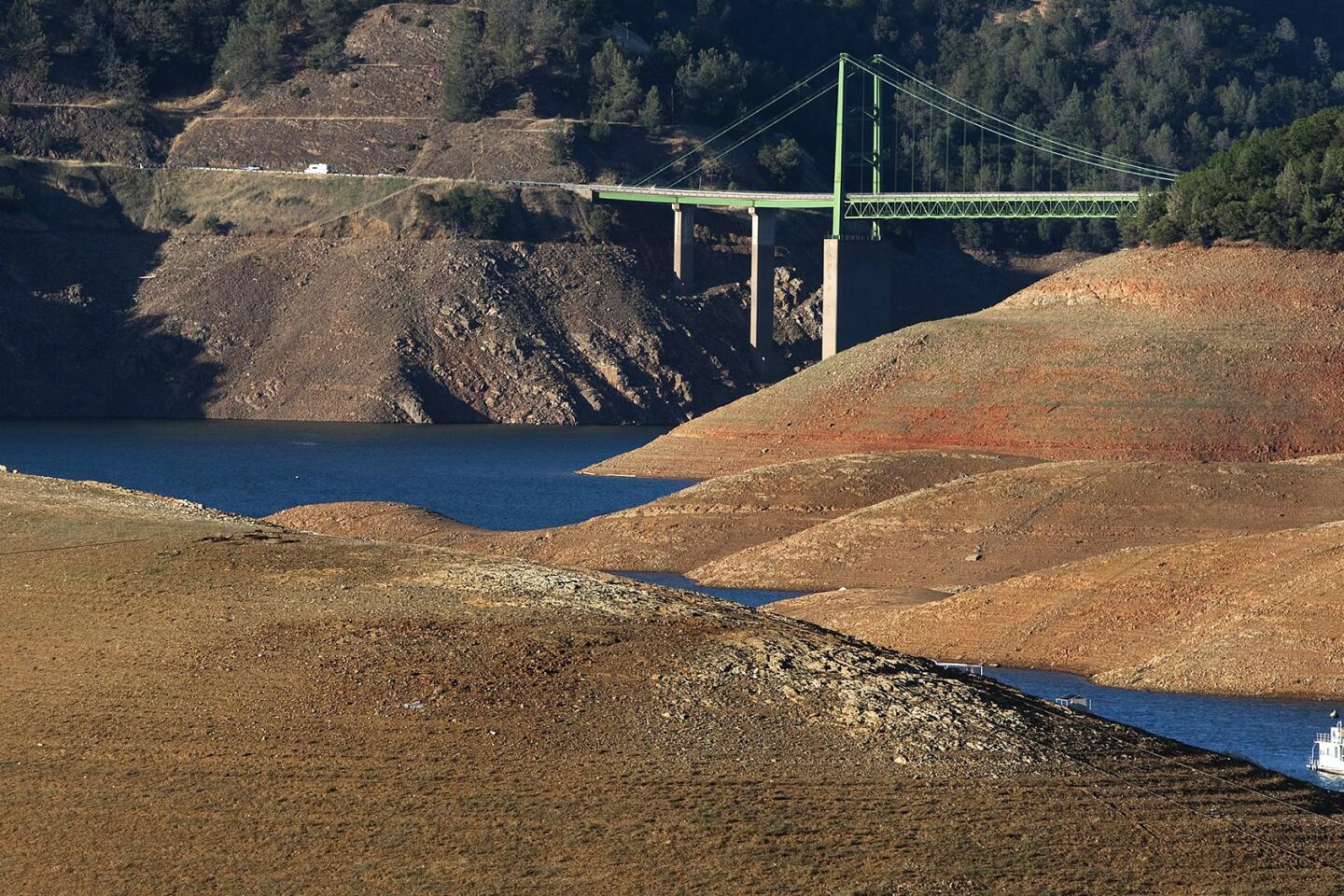
Severe drought conditions are evident as a lone houseboat is dwarfed by steep banks that show the water level down 160 feet from the high water mark at Lake Oroville on June 21, 2014. Receding water levels are revealing prehistoric and historic artifacts such as bedrock mortars and projectile points made by the Maidu people and remnants of placer and dredge mining that thrived here after John Bidwell discovered gold in 1848.
(Allen J. Schaben / Los Angeles Times)Recent rain throughout California made only a slight dent on a drought that has chugged along relentlessly for more than three years, according to federal scientists.
And dry conditions are expected to return for the next two weeks.
Rainfall drenched large portions of Northern California, improving stream flows, raising some river levels and spurring the growth of small plants and grasses, according to Matthew Rosencrans, a meteorologist with the National Oceanic and Atmospheric Administration’s Climate Prediction Center.
The drought eased across the board throughout California, but it was not a dramatic change, according to a U.S. Drought Monitor map.
The map shows the percentage of the state in a severe drought -- the third harshest on a five-level scale -- improved from 95.04% to 94.42 percent.
The percentage of California under exceptional drought conditions -- considered the most extreme --improved from 58.41% to 55.08%.
Although the rainstorms may have brought a sense of relief from the drought, the respite will be brief.
“It’s looking bad for the next two weeks,” said David Miskus, NOAA’s senior meteorologist with the Climate Prediction Center.
The next two weeks will be warm and dry, and rain for the next three months is uncertain. El Ñino conditions, which sometimes bring above normal rains, could form in the Pacific, but the phenomenon would almost certainly be weak if it did.
And it would take a record wet year, or several years of above normal rainfall to restore the state’s critically low reservoir levels, Miskus said.
The recent storm, he said, didn’t improve snowpack levels in the Sierras.
But at this point, Miskus said Californians will welcome any amount of rain.
“It’s got to rain sometime,” he said.
For breaking news throughout California, follow @VeronicaRochaLA. She can be reached at [email protected].
Sign up for Essential California
The most important California stories and recommendations in your inbox every morning.
You may occasionally receive promotional content from the Los Angeles Times.
Veronica Rocha worked on the Metro desk and at L.A. Now covering breaking news in California. She joined the Los Angeles Times in 2014 and left in 2017.

